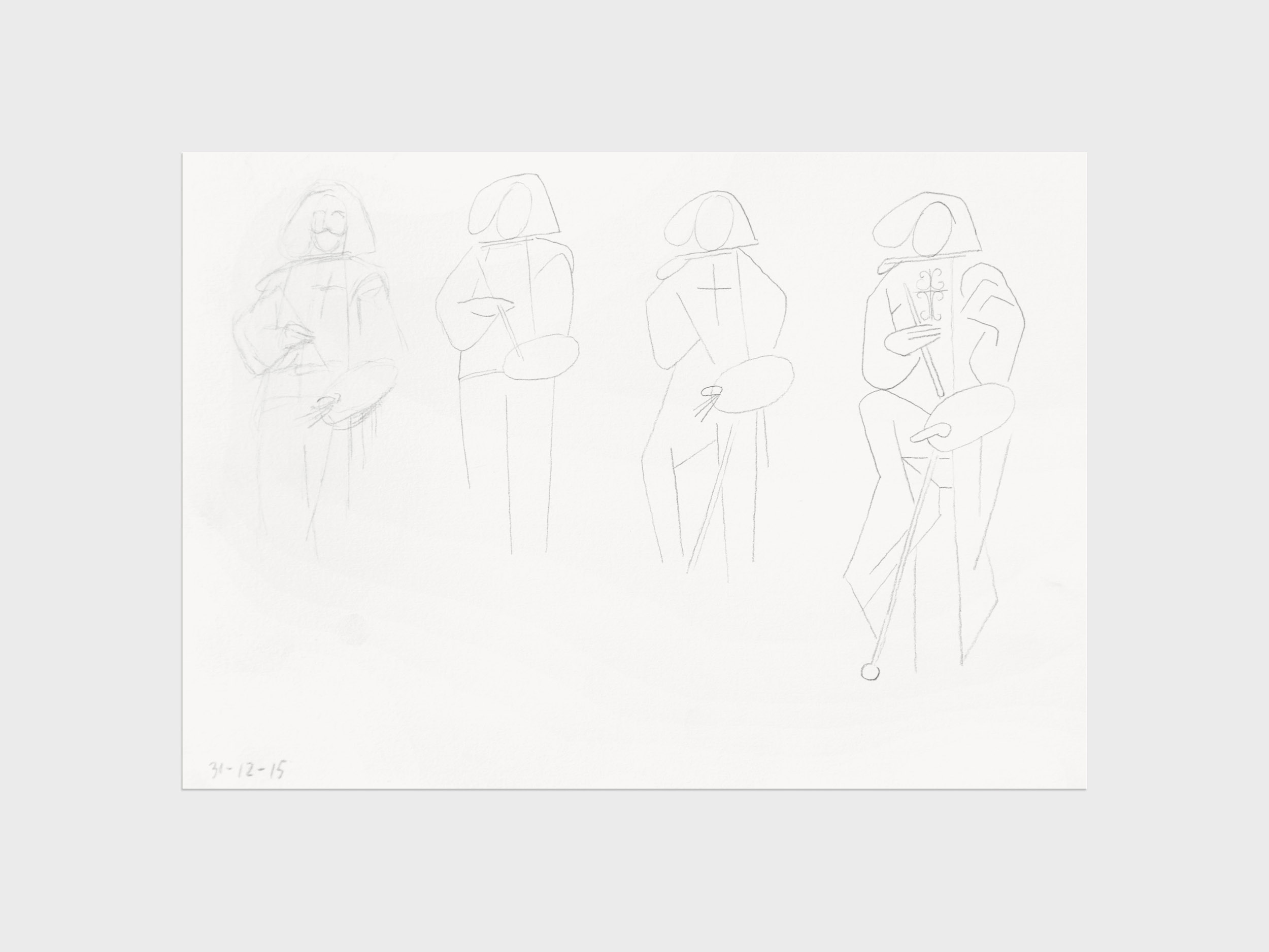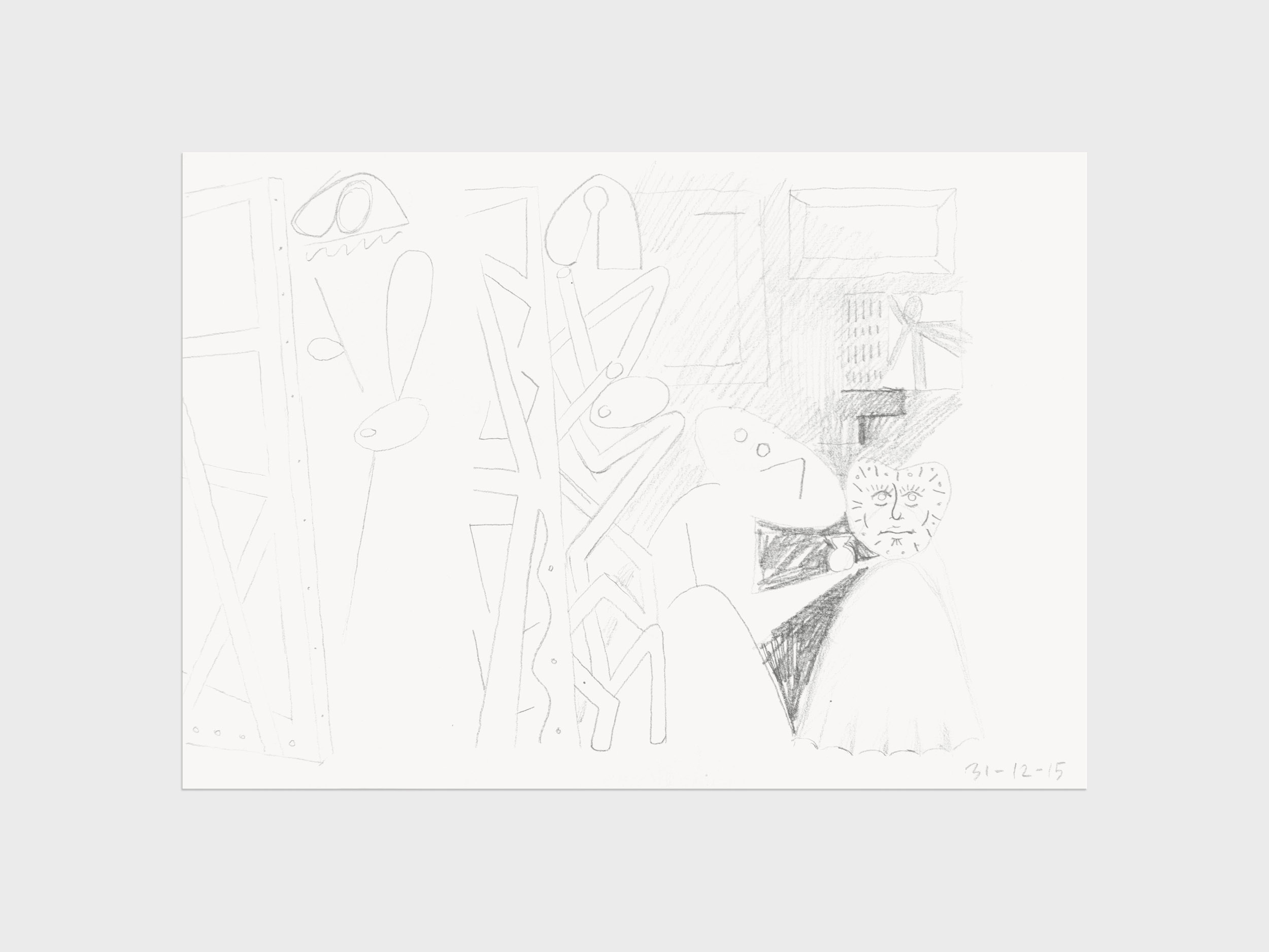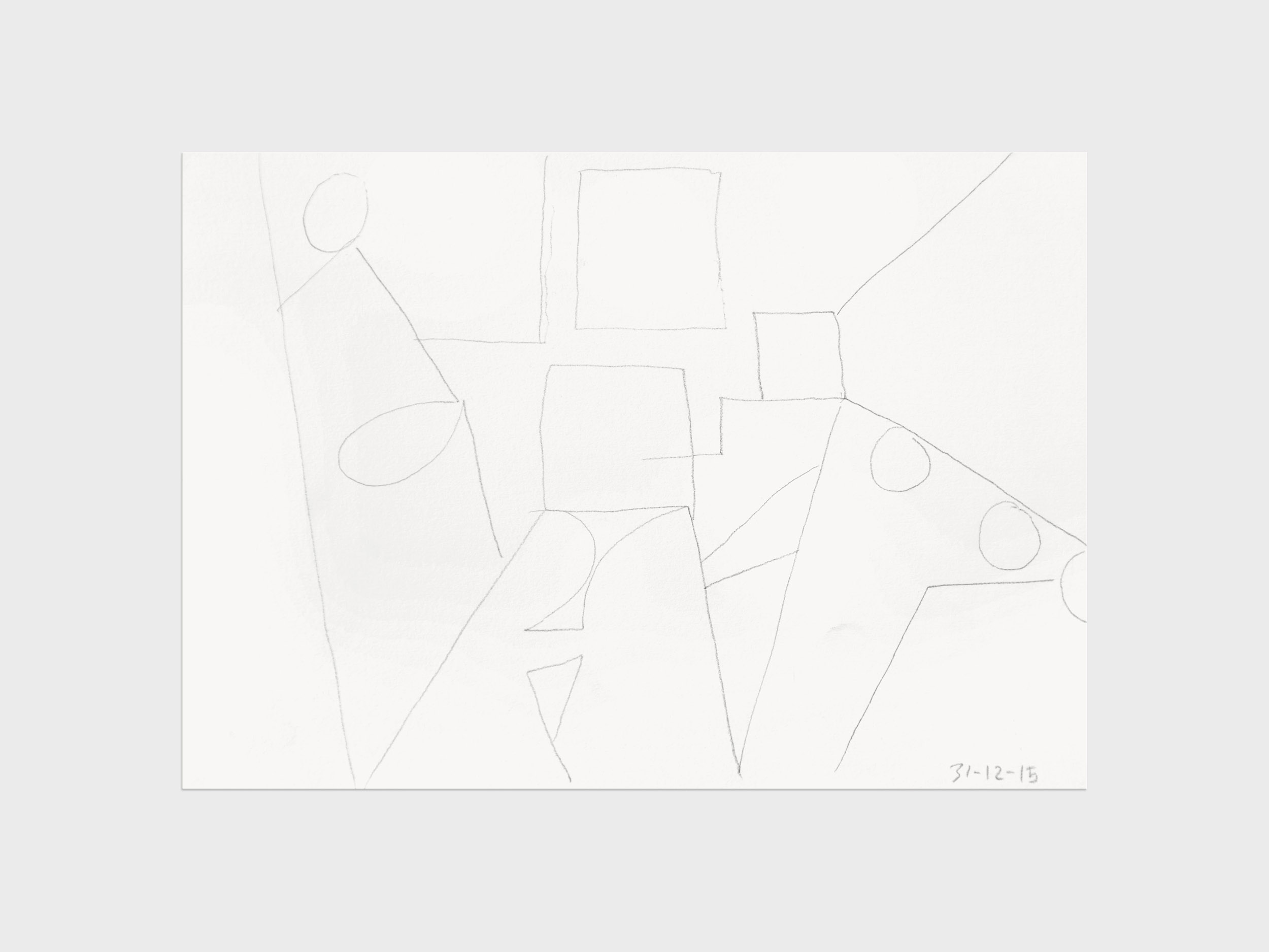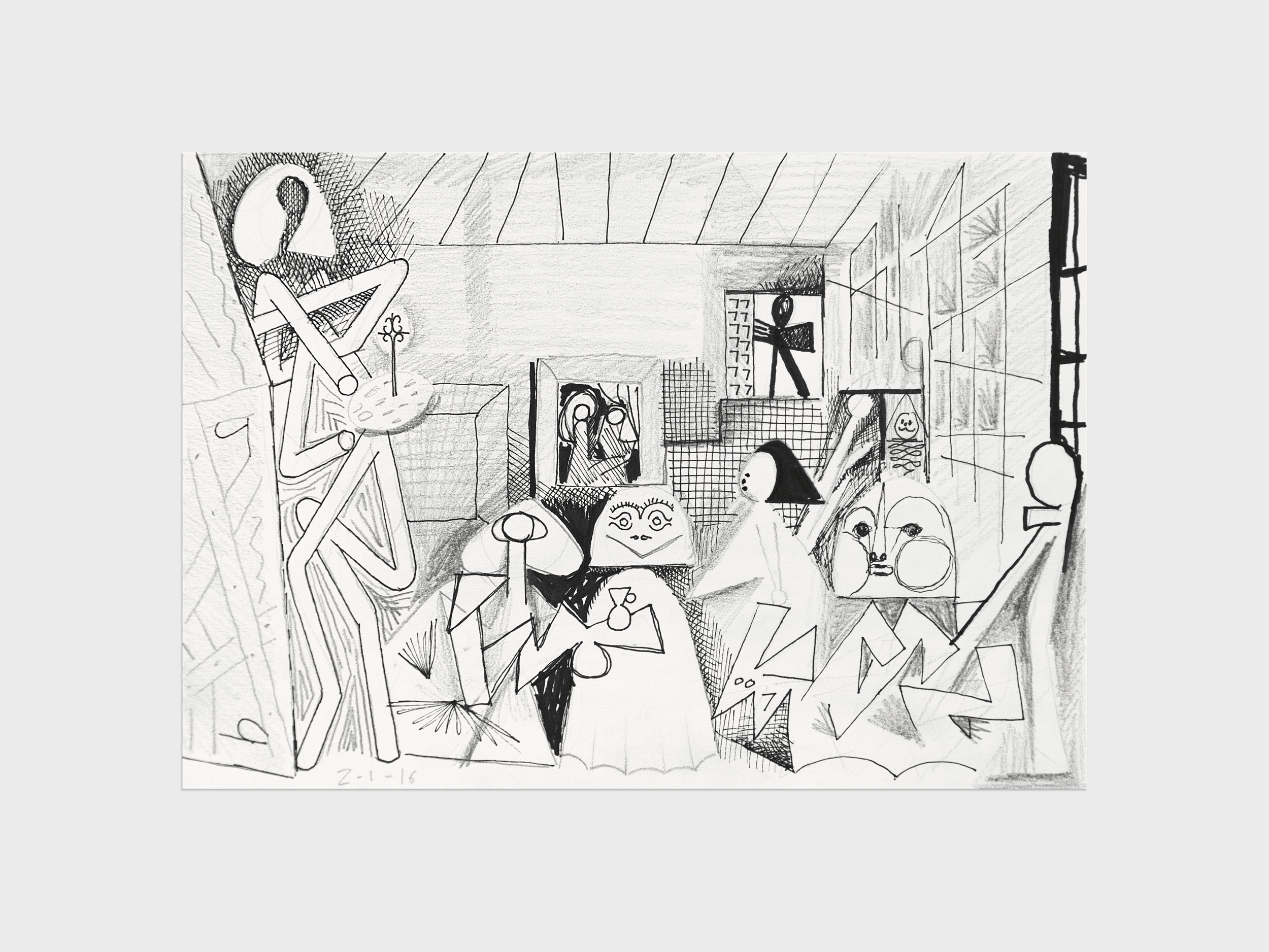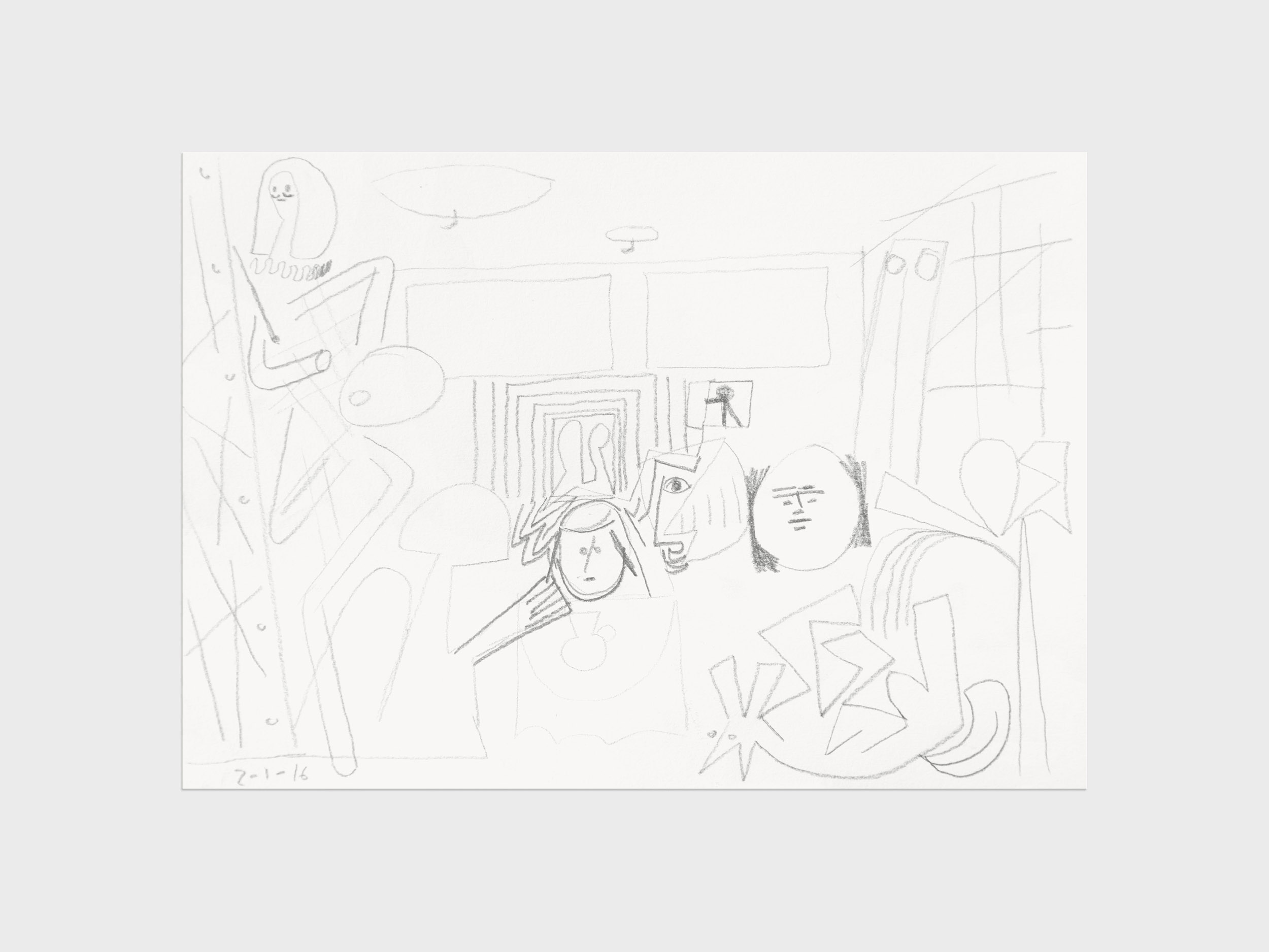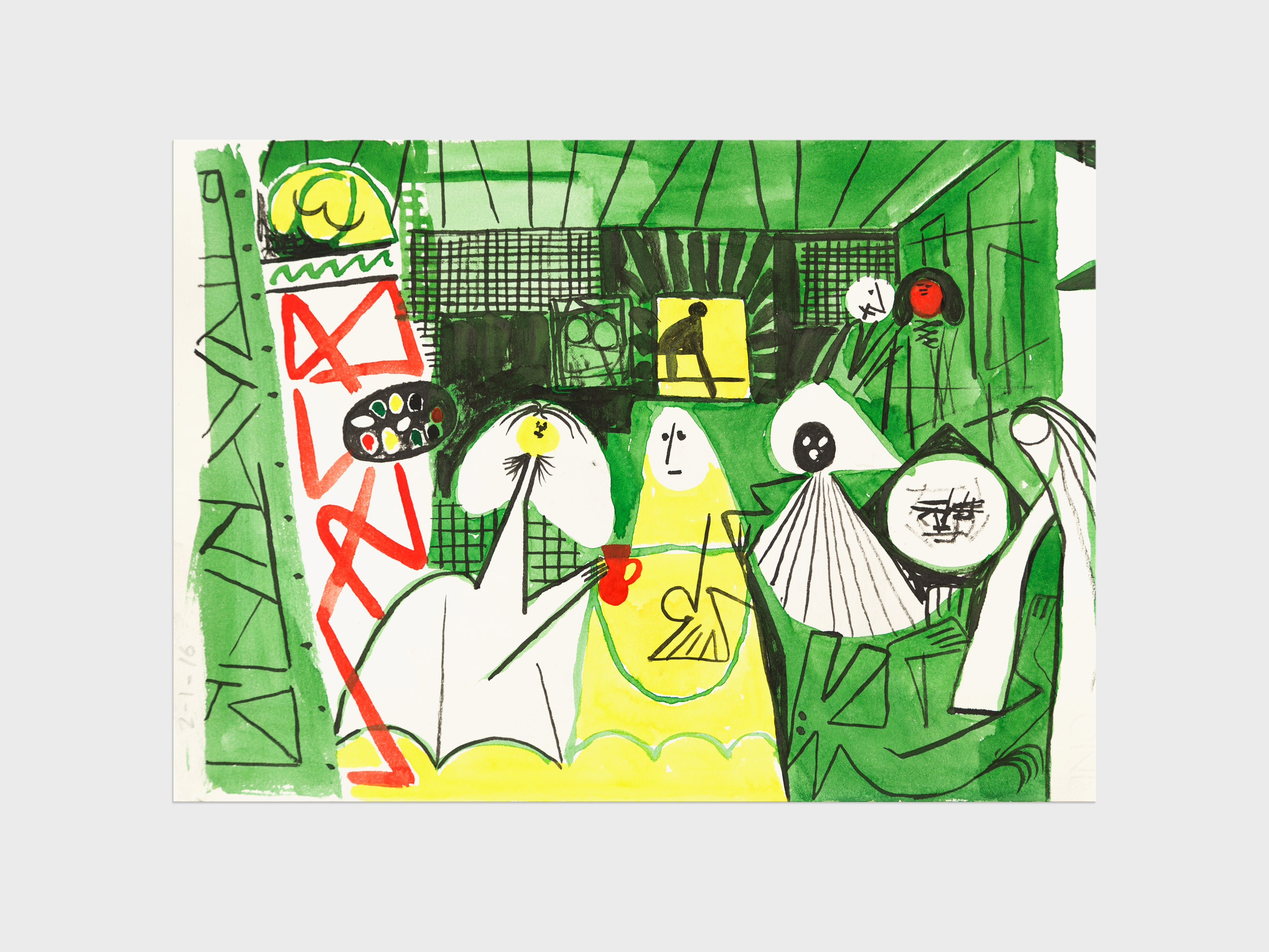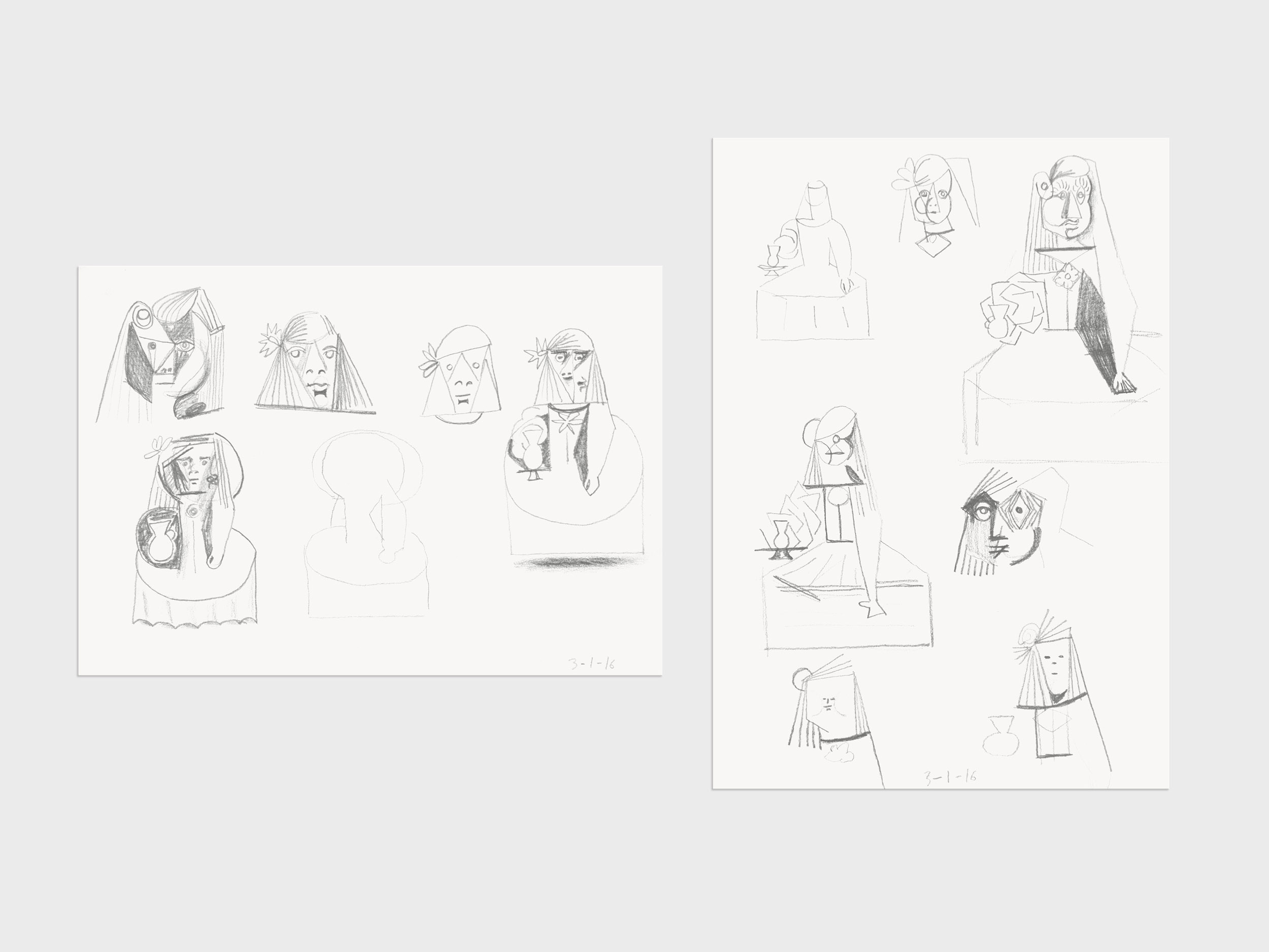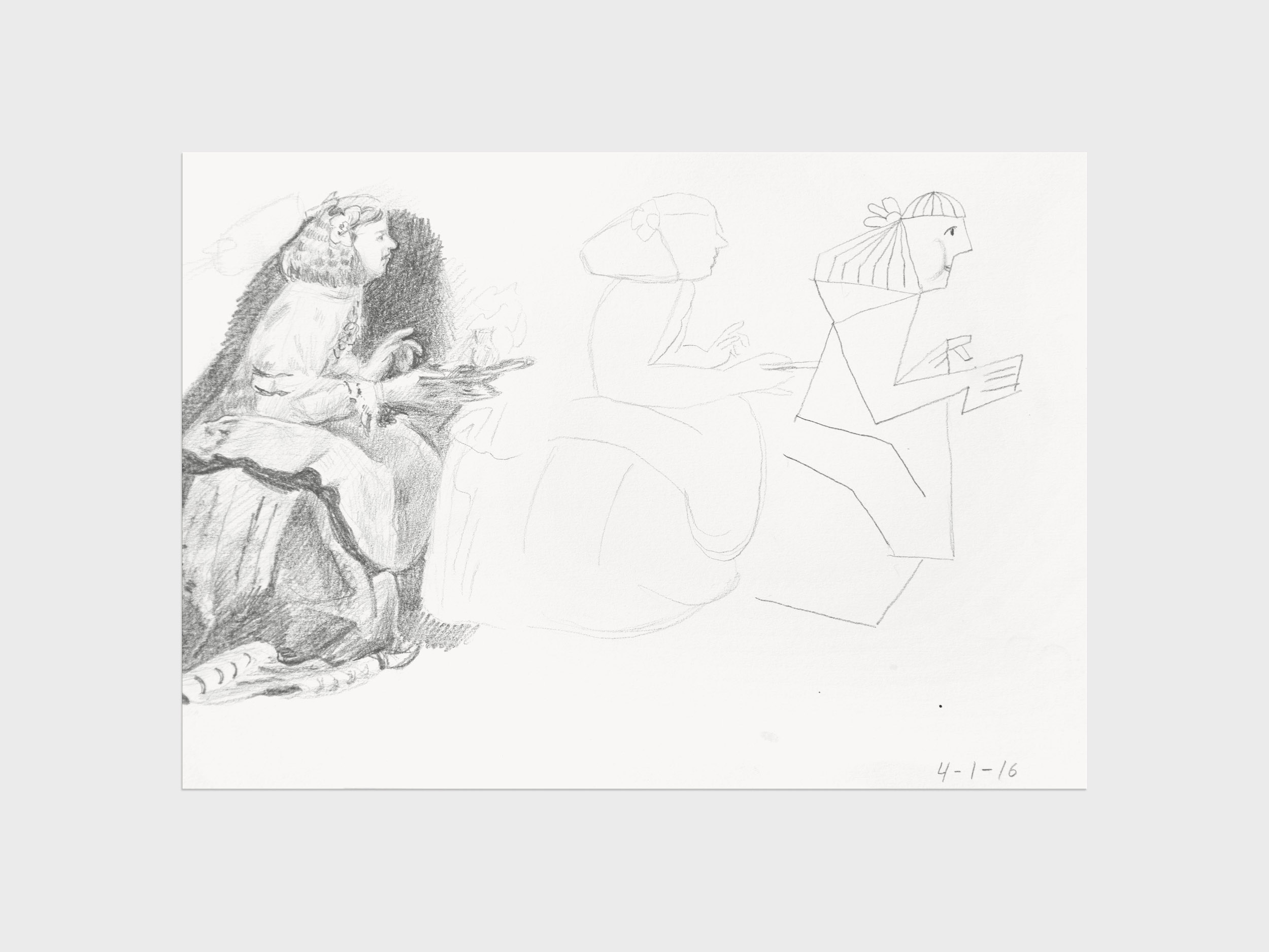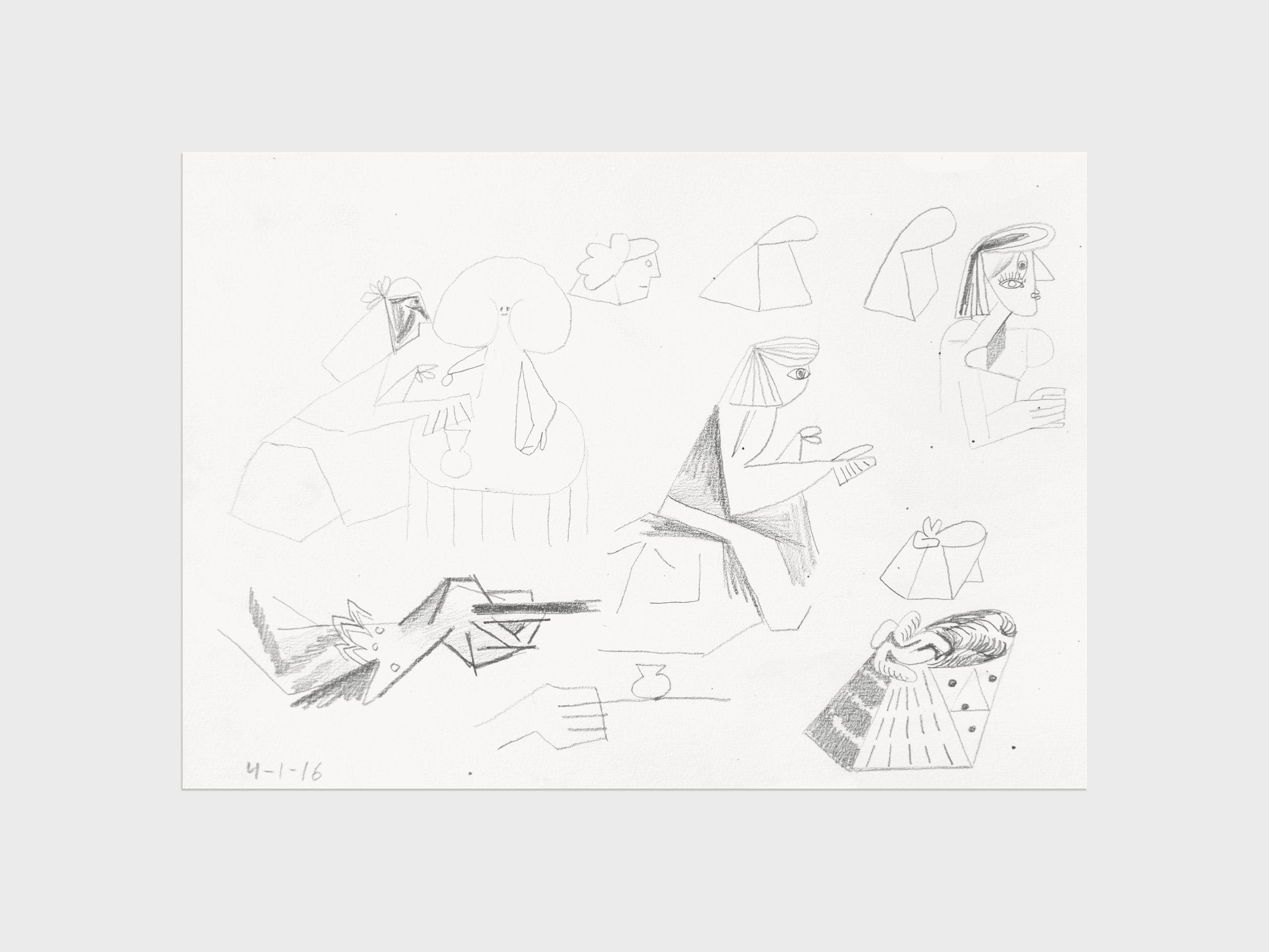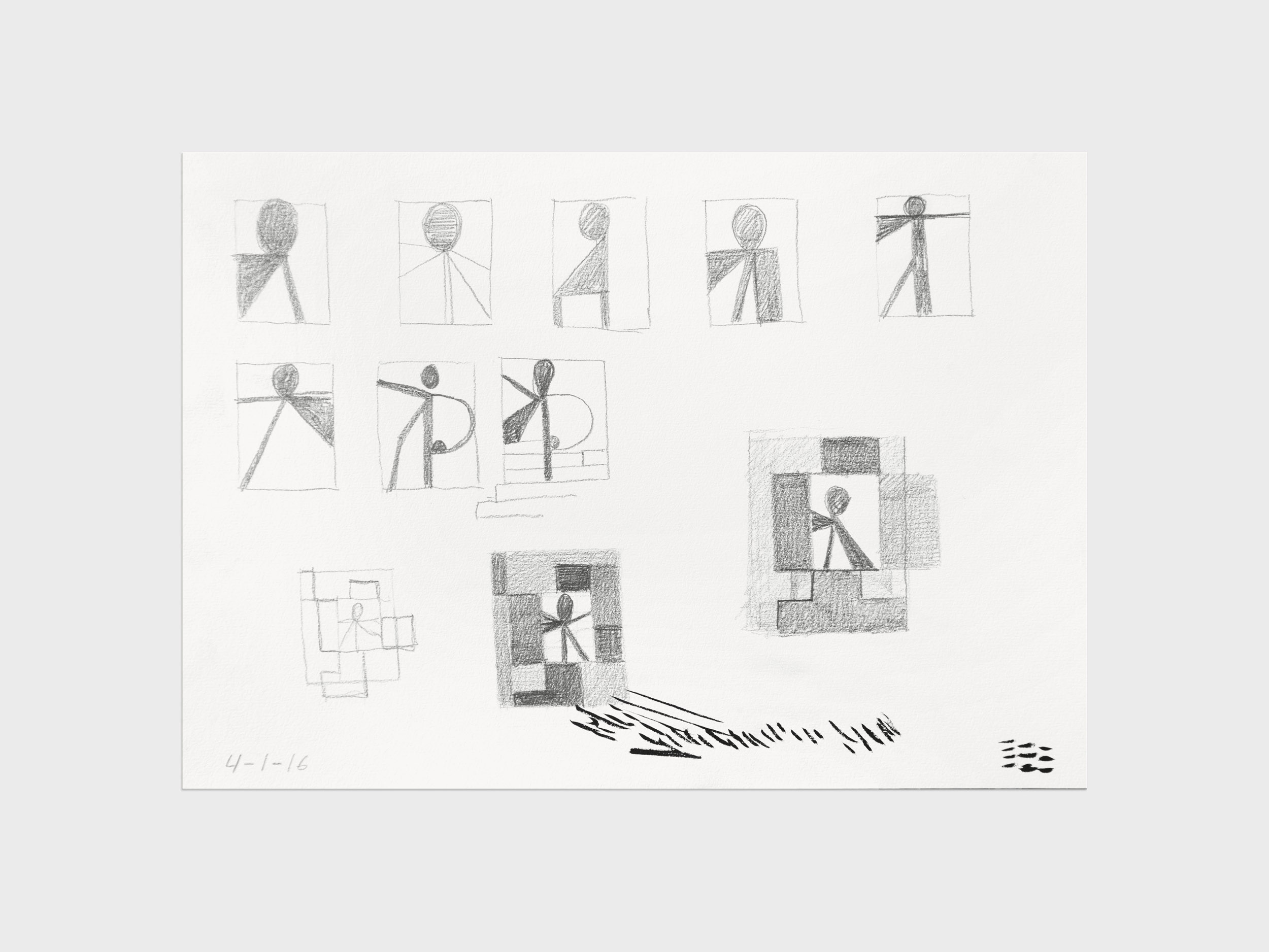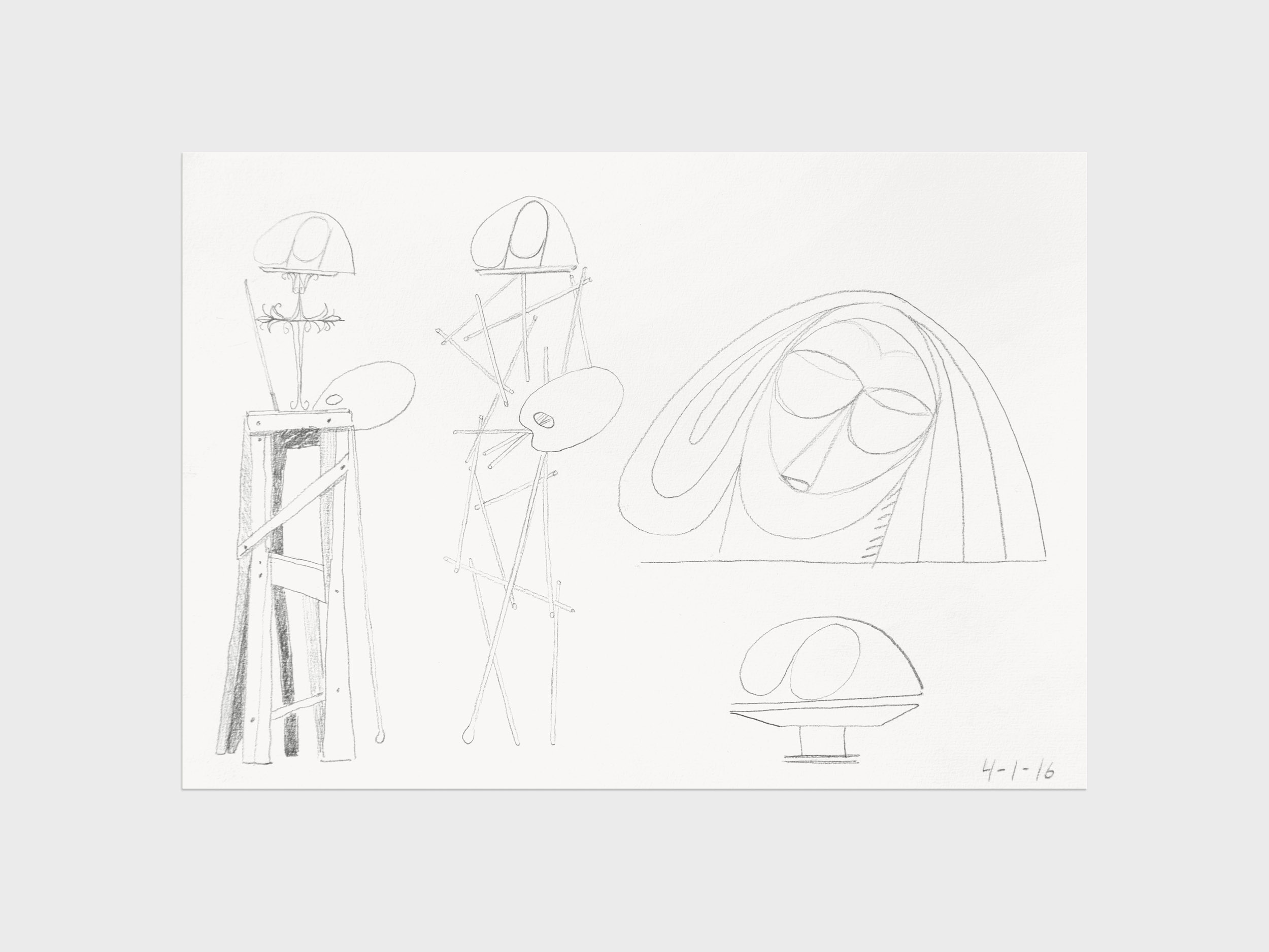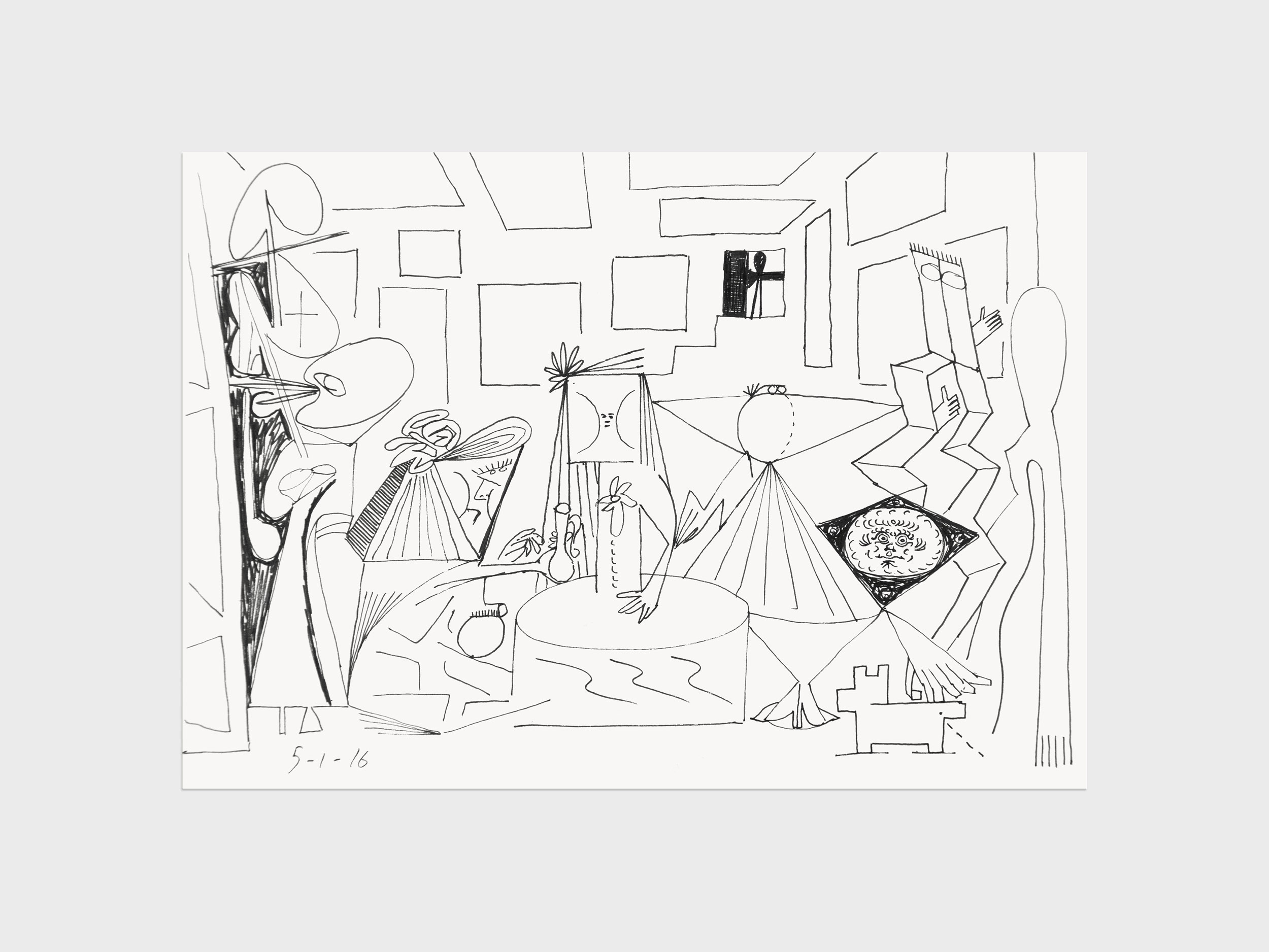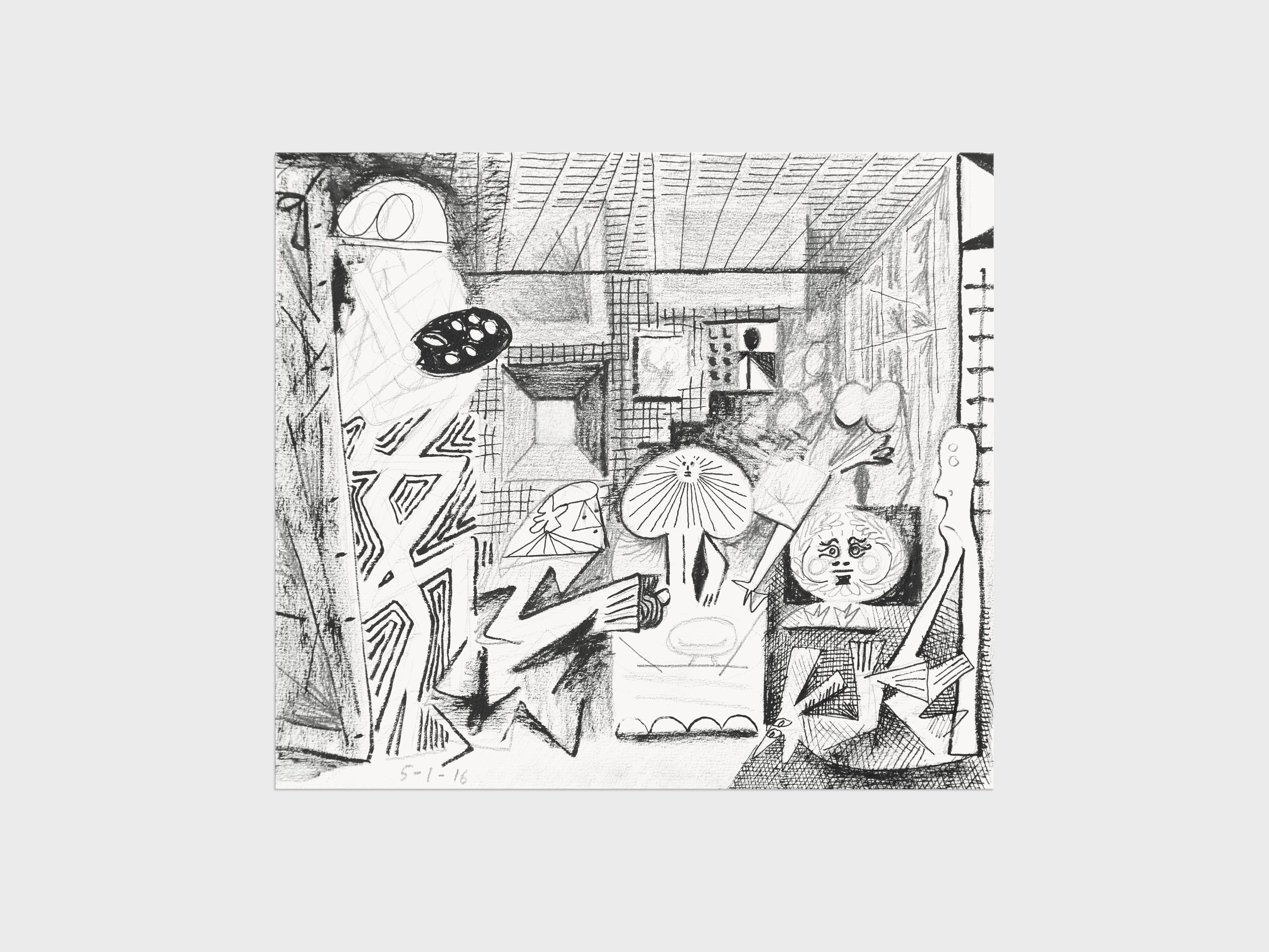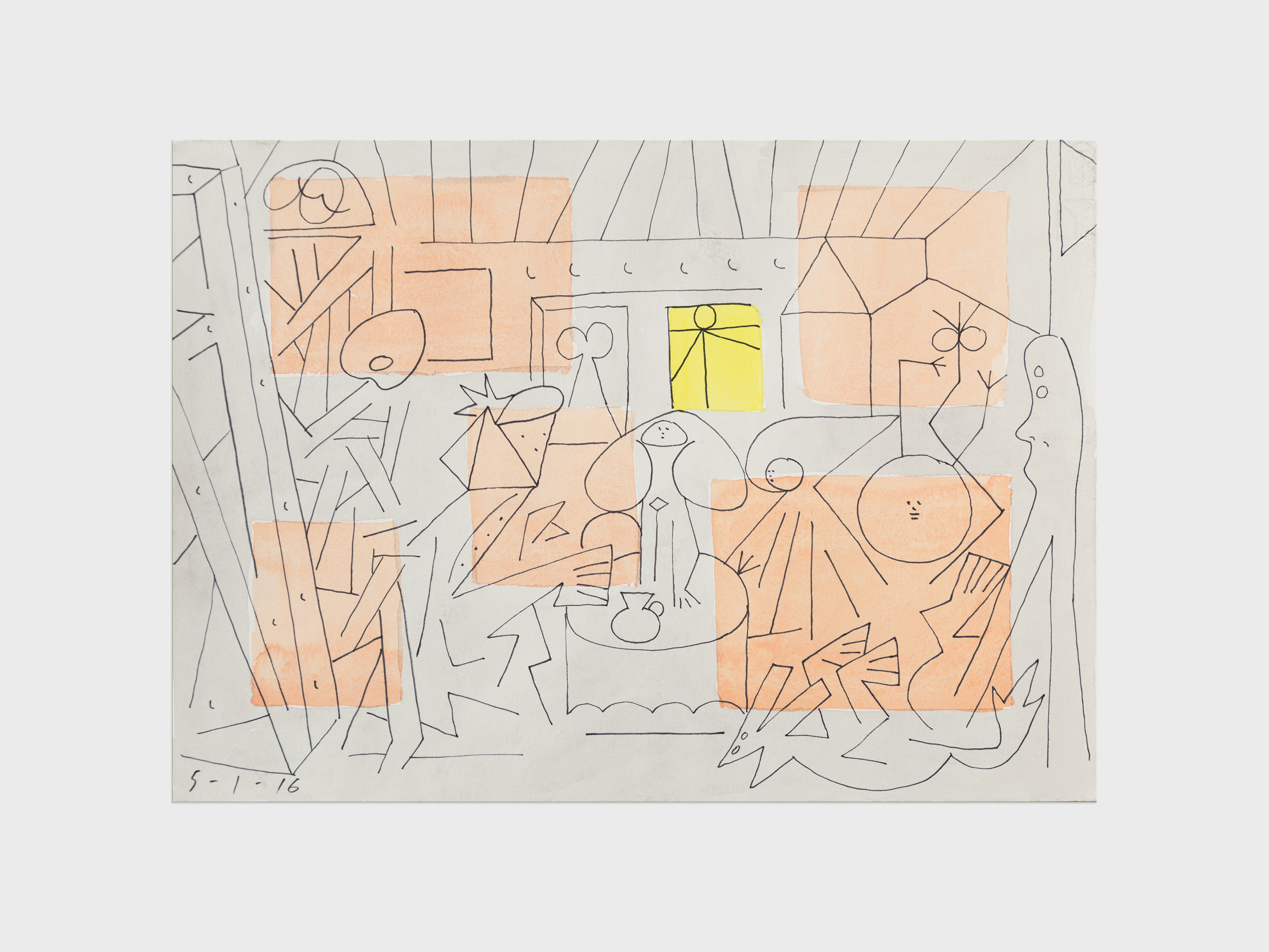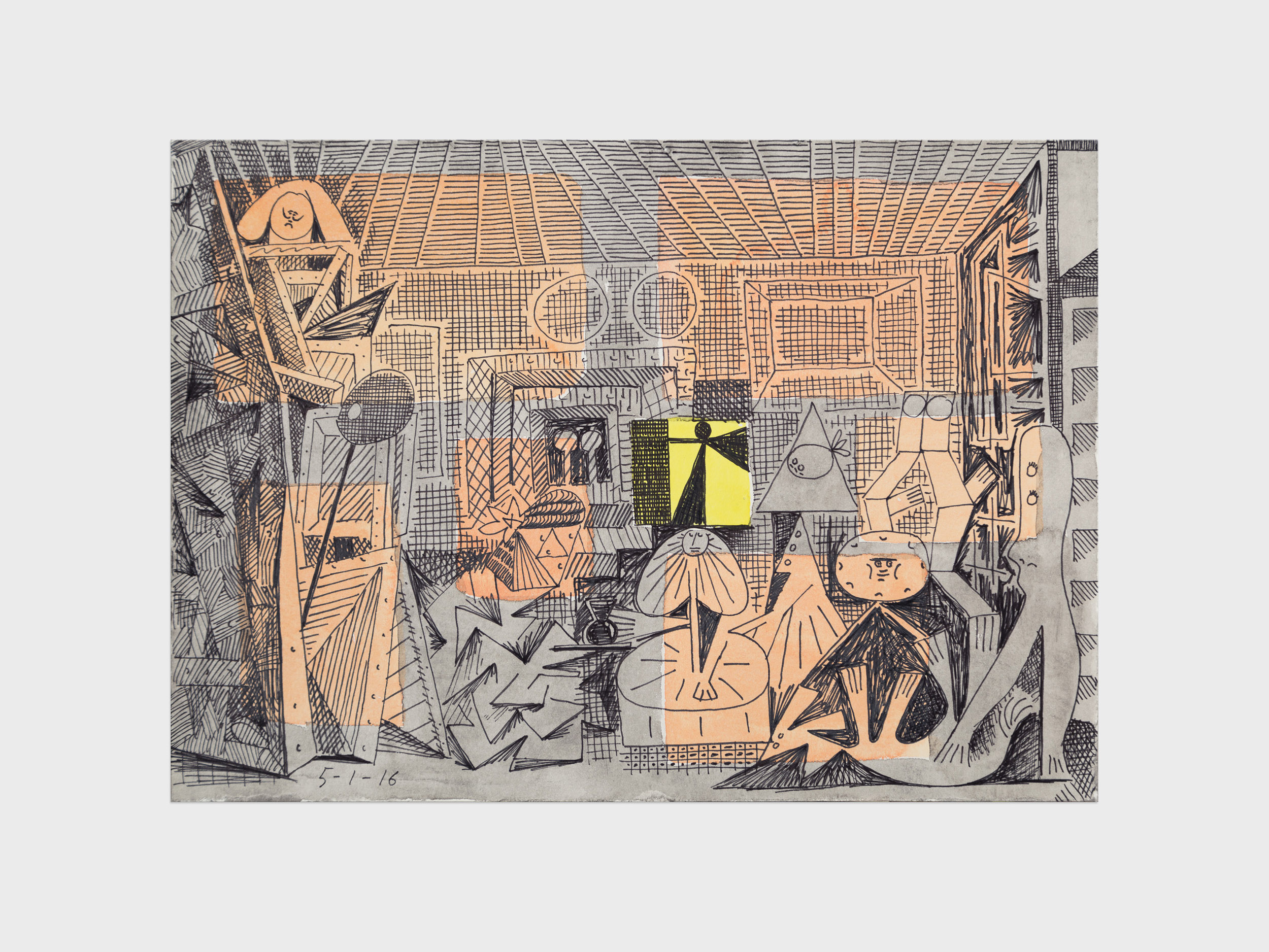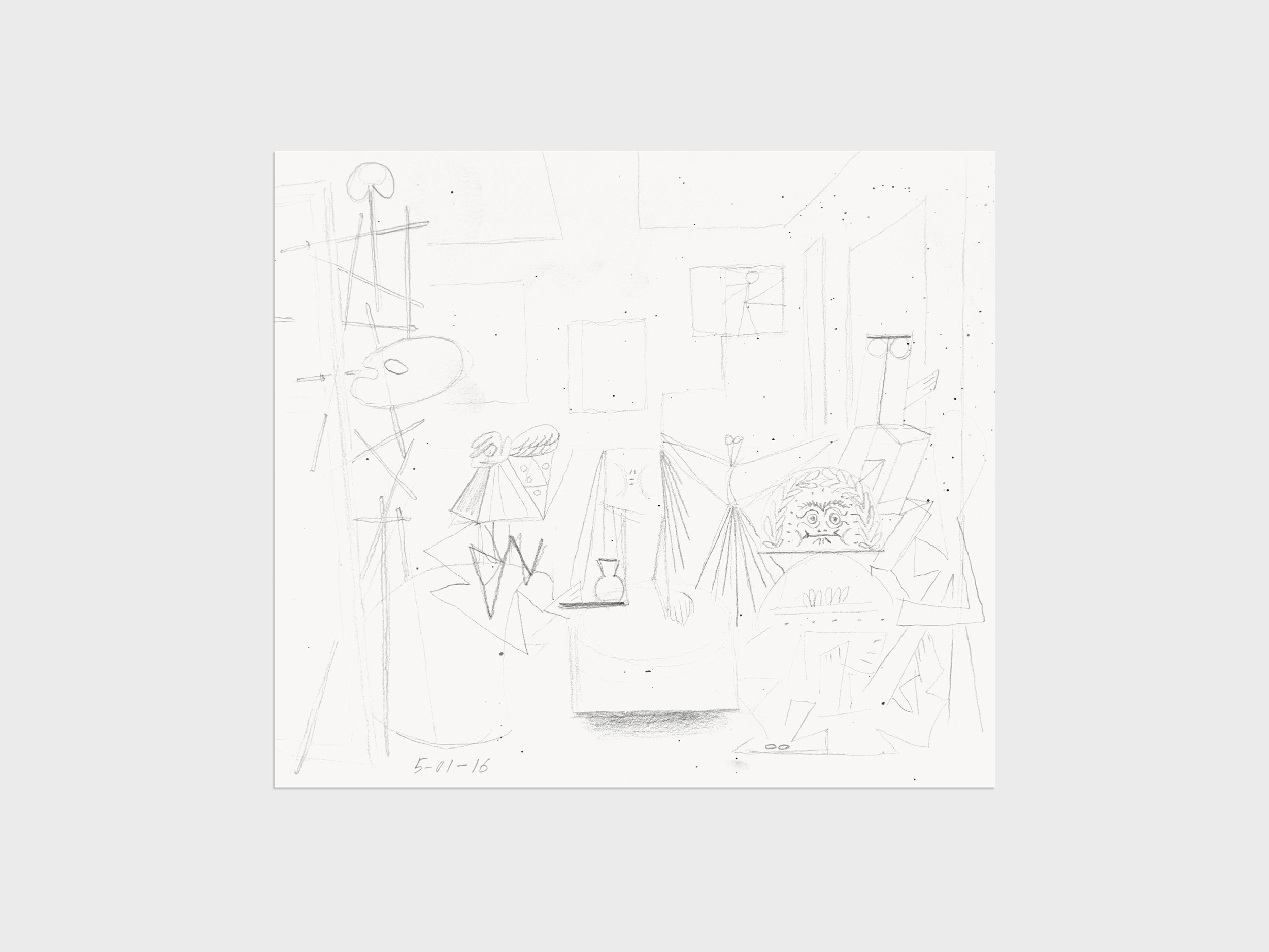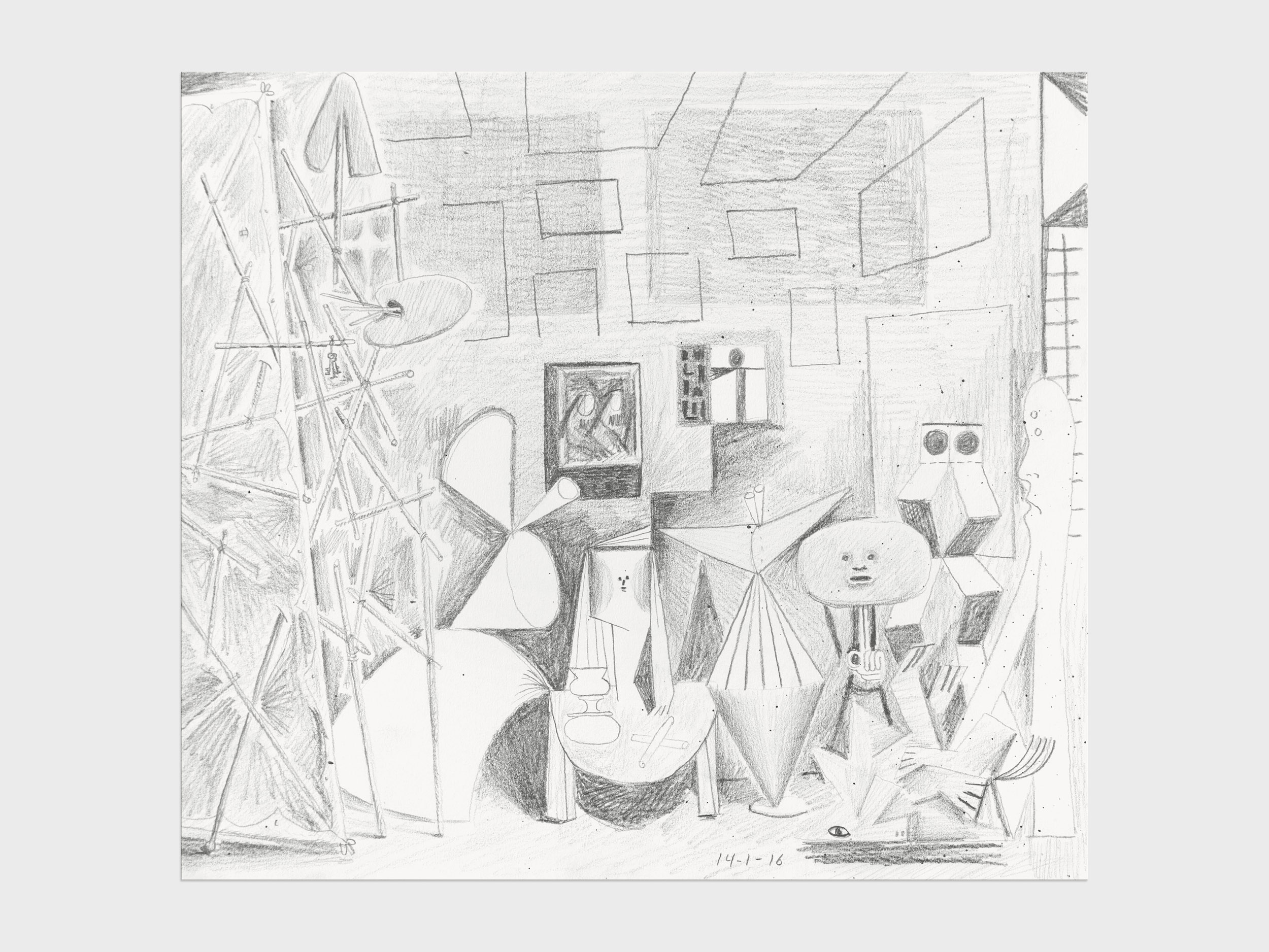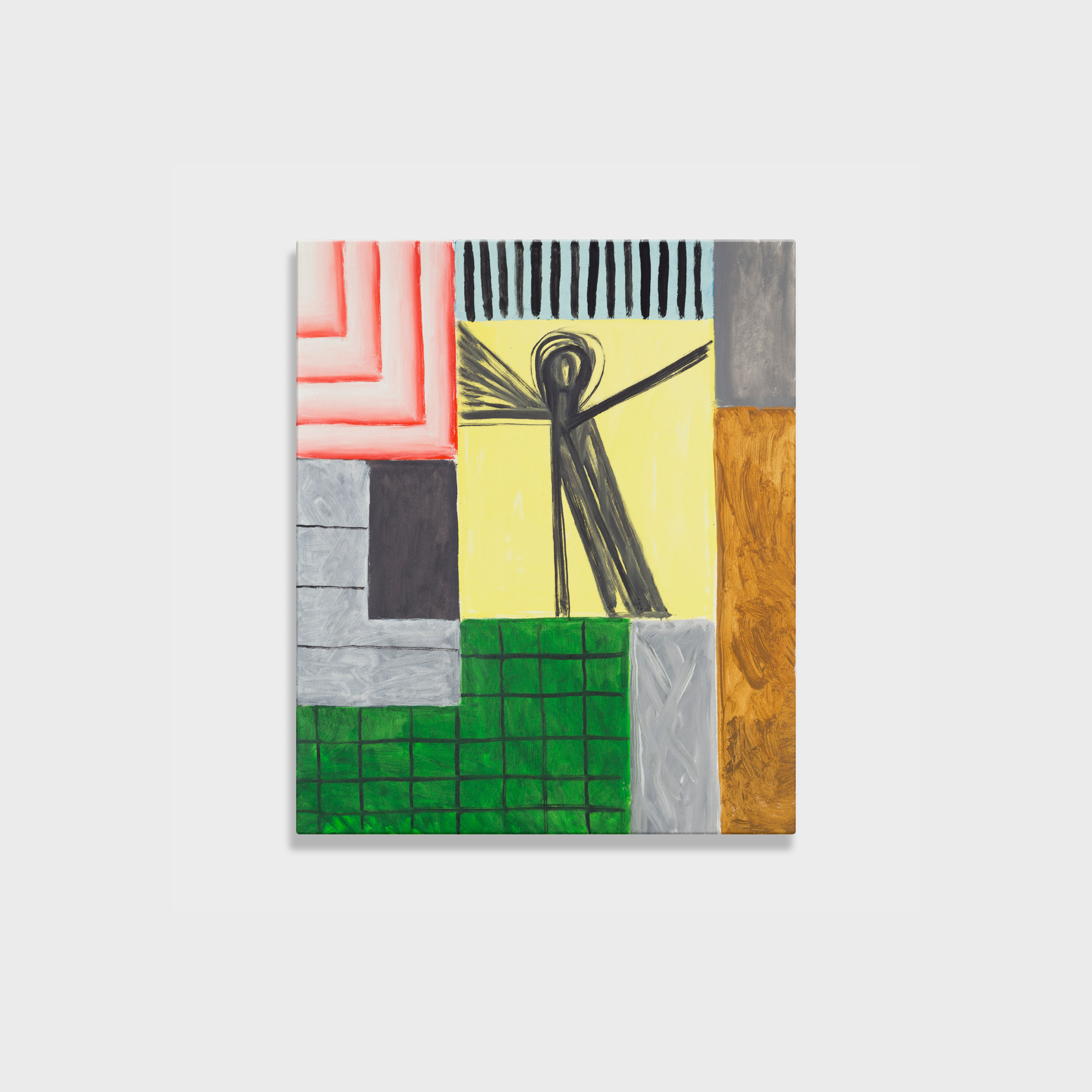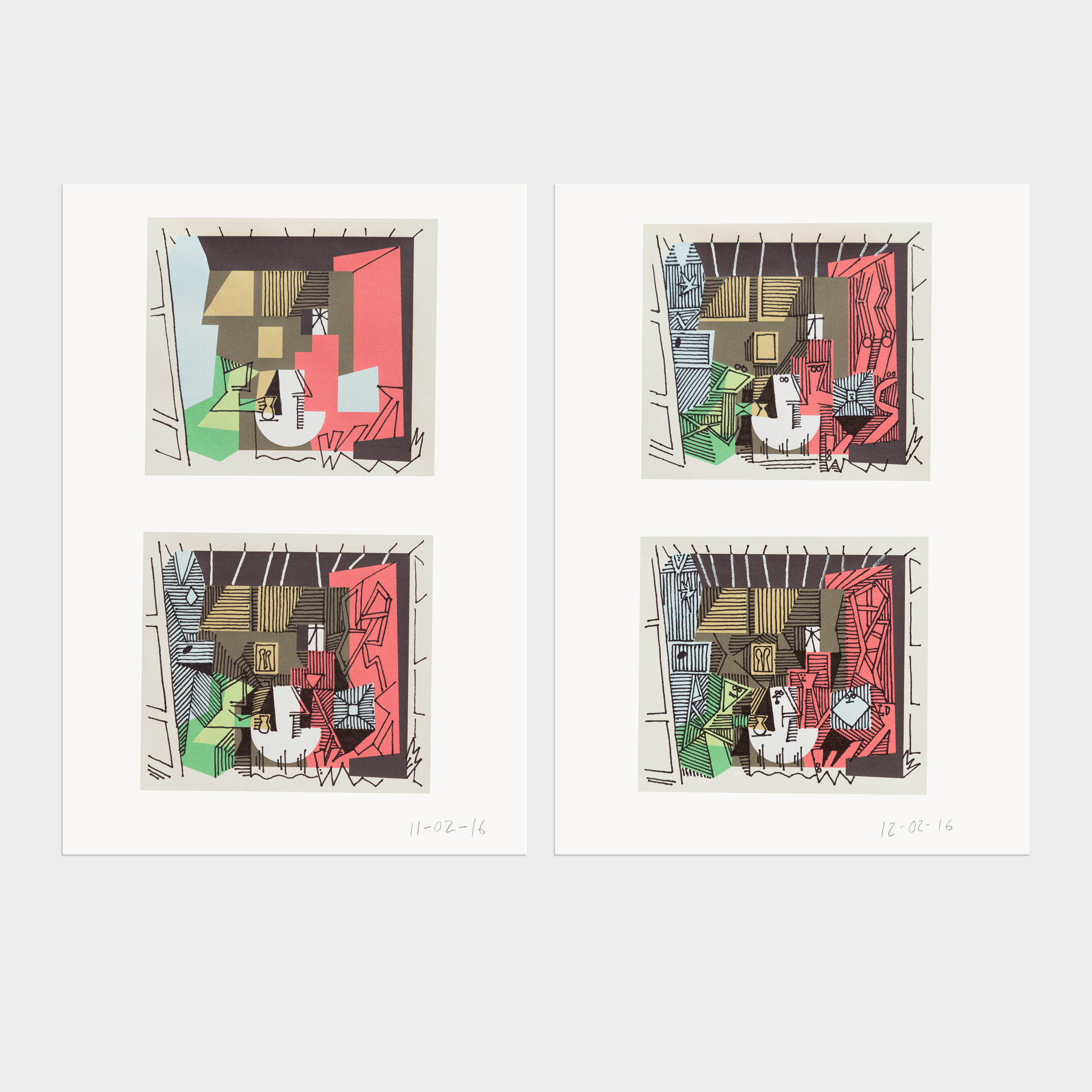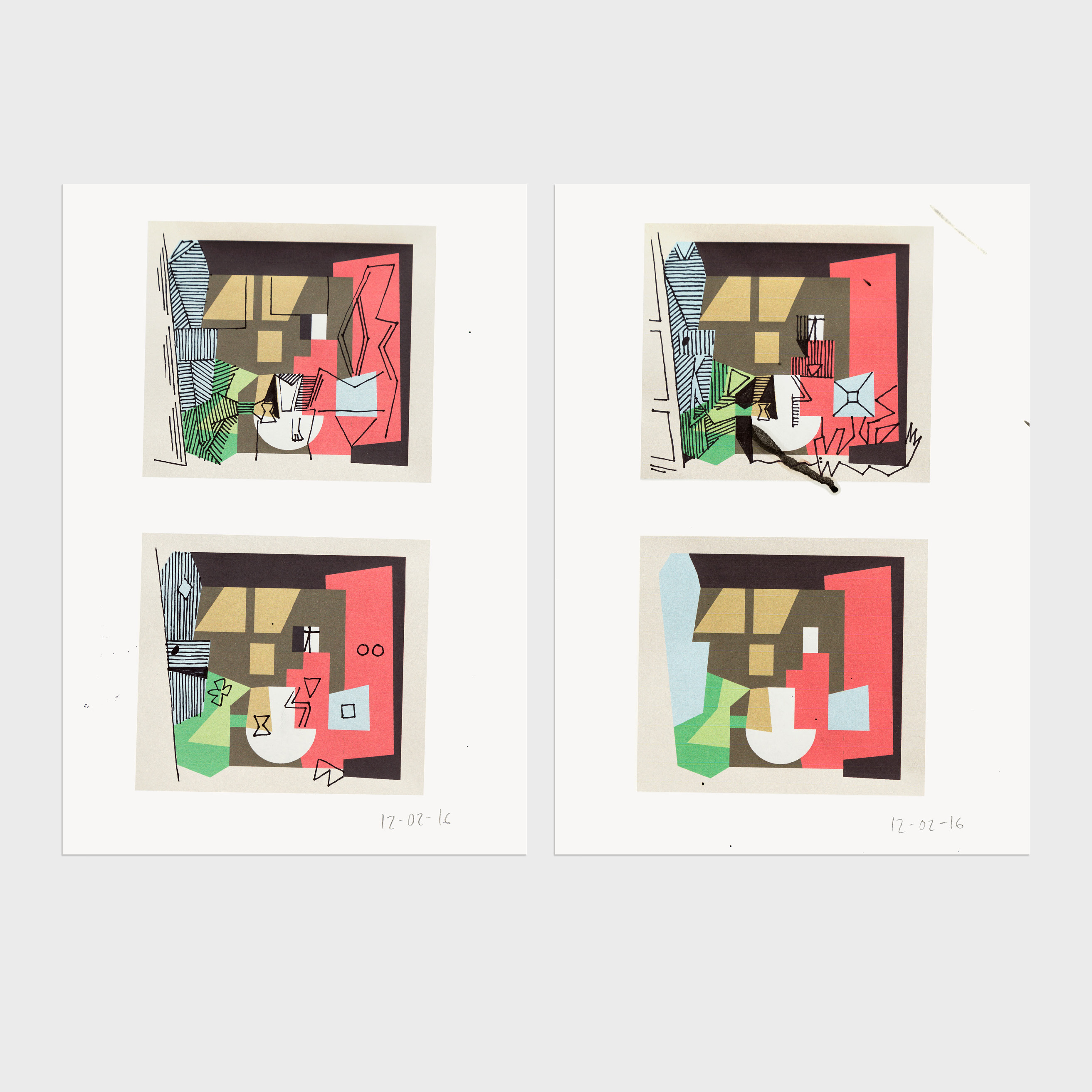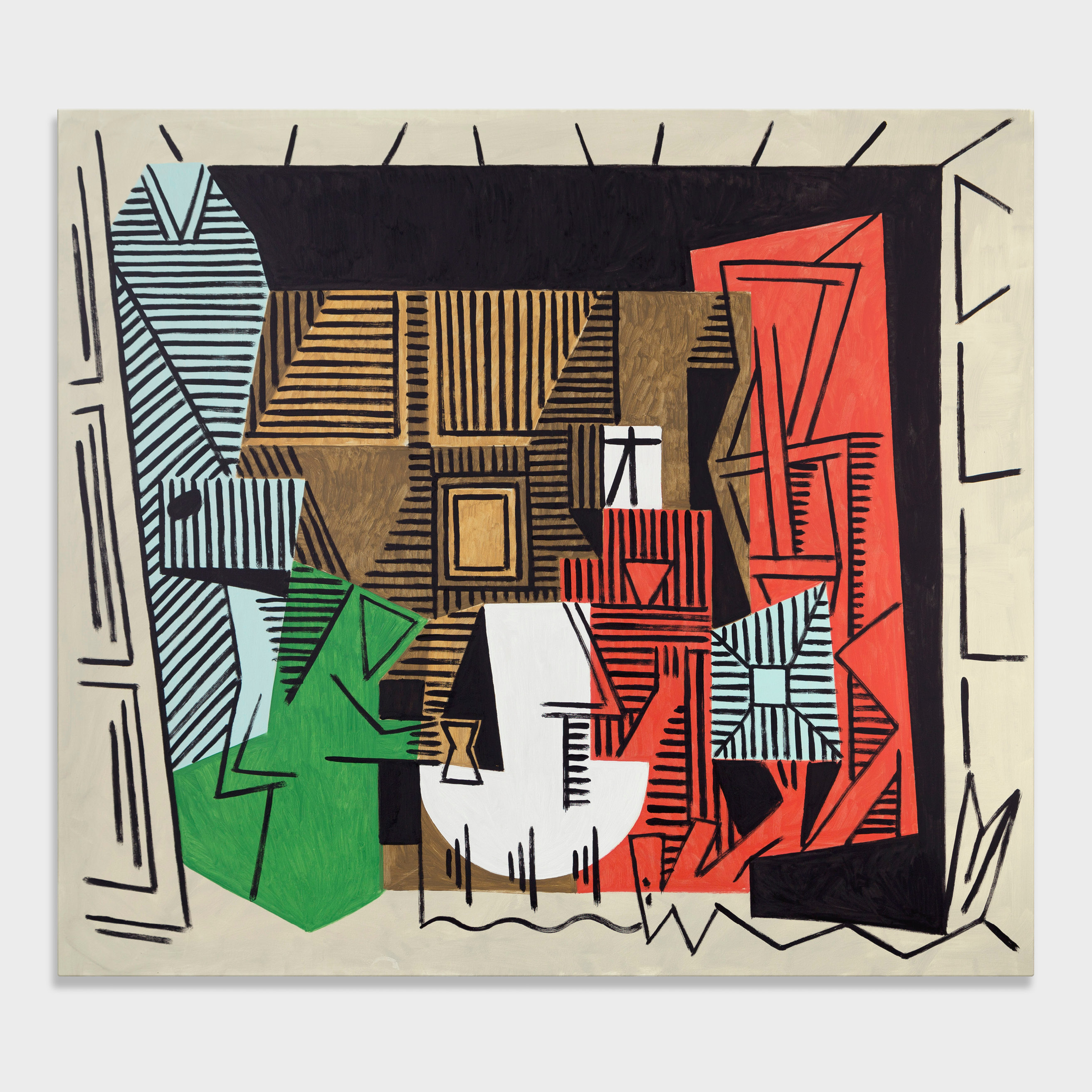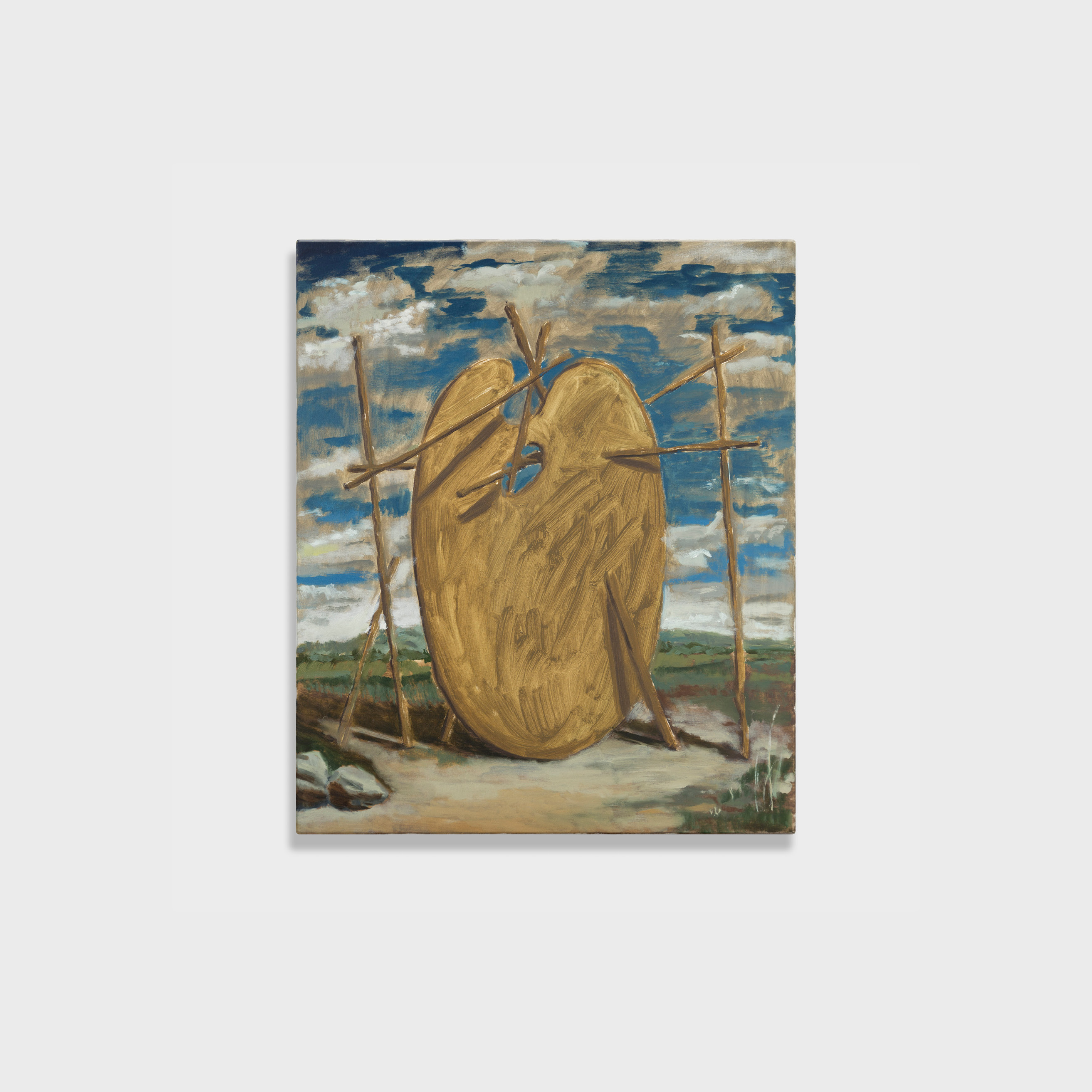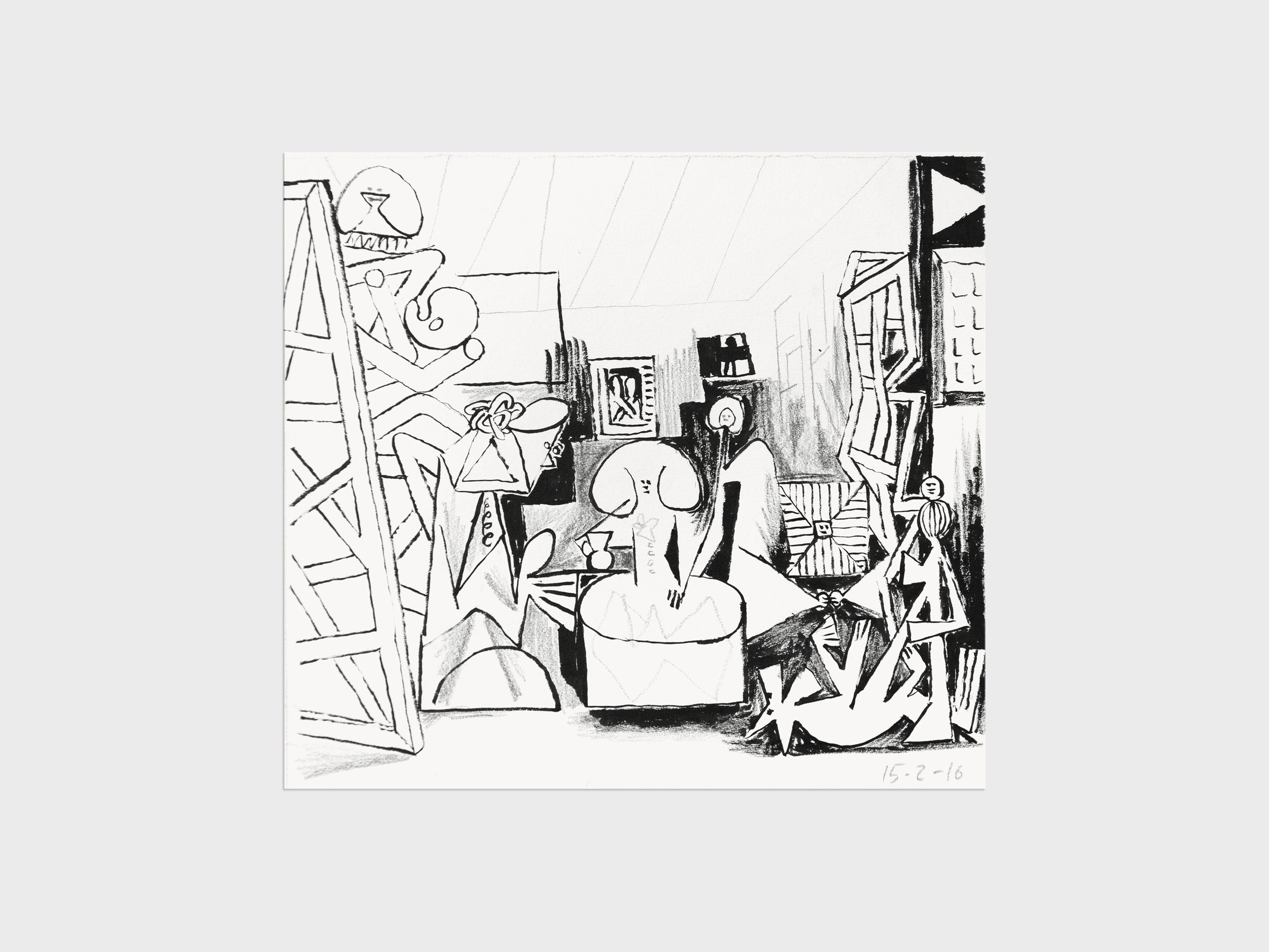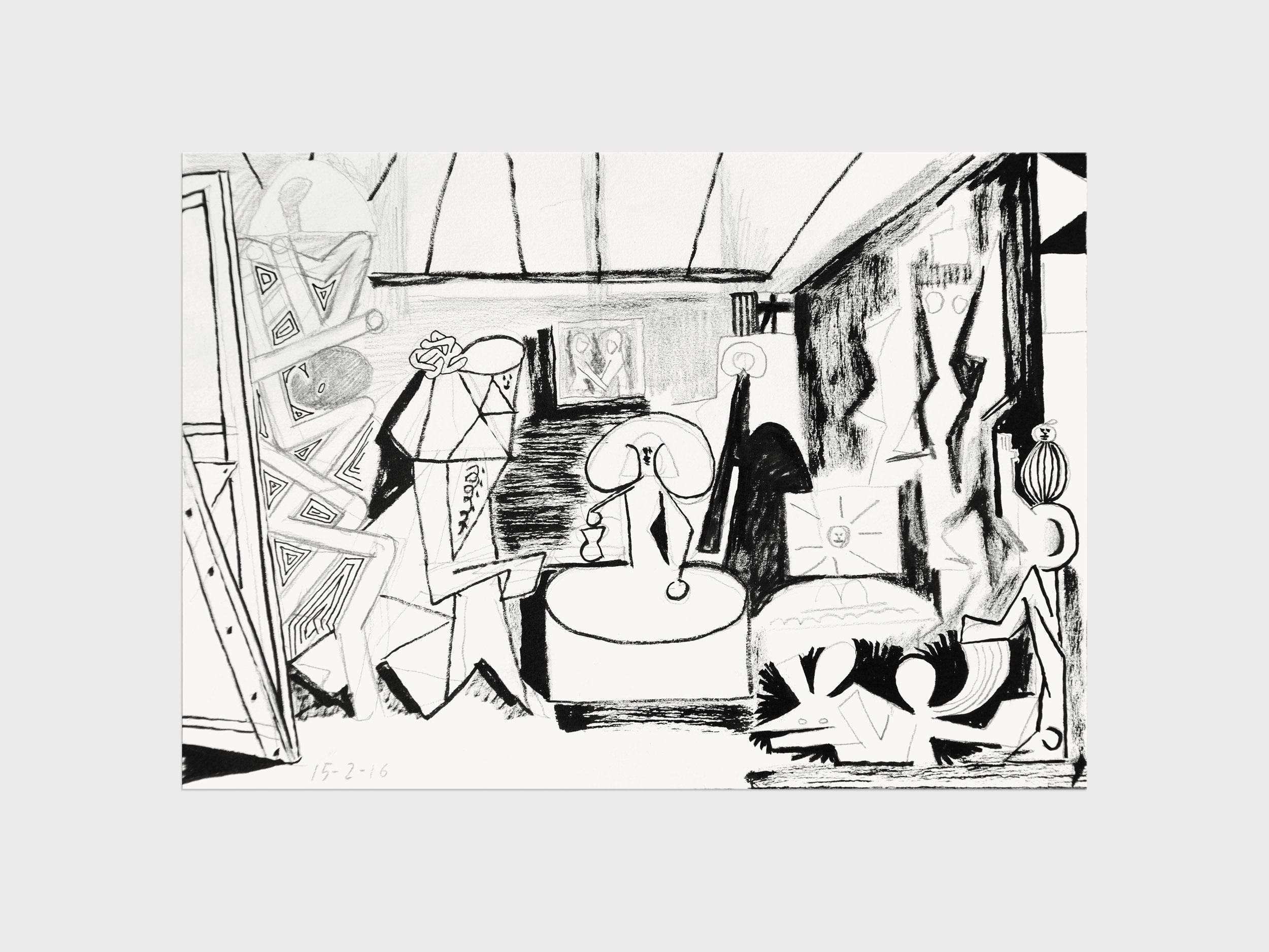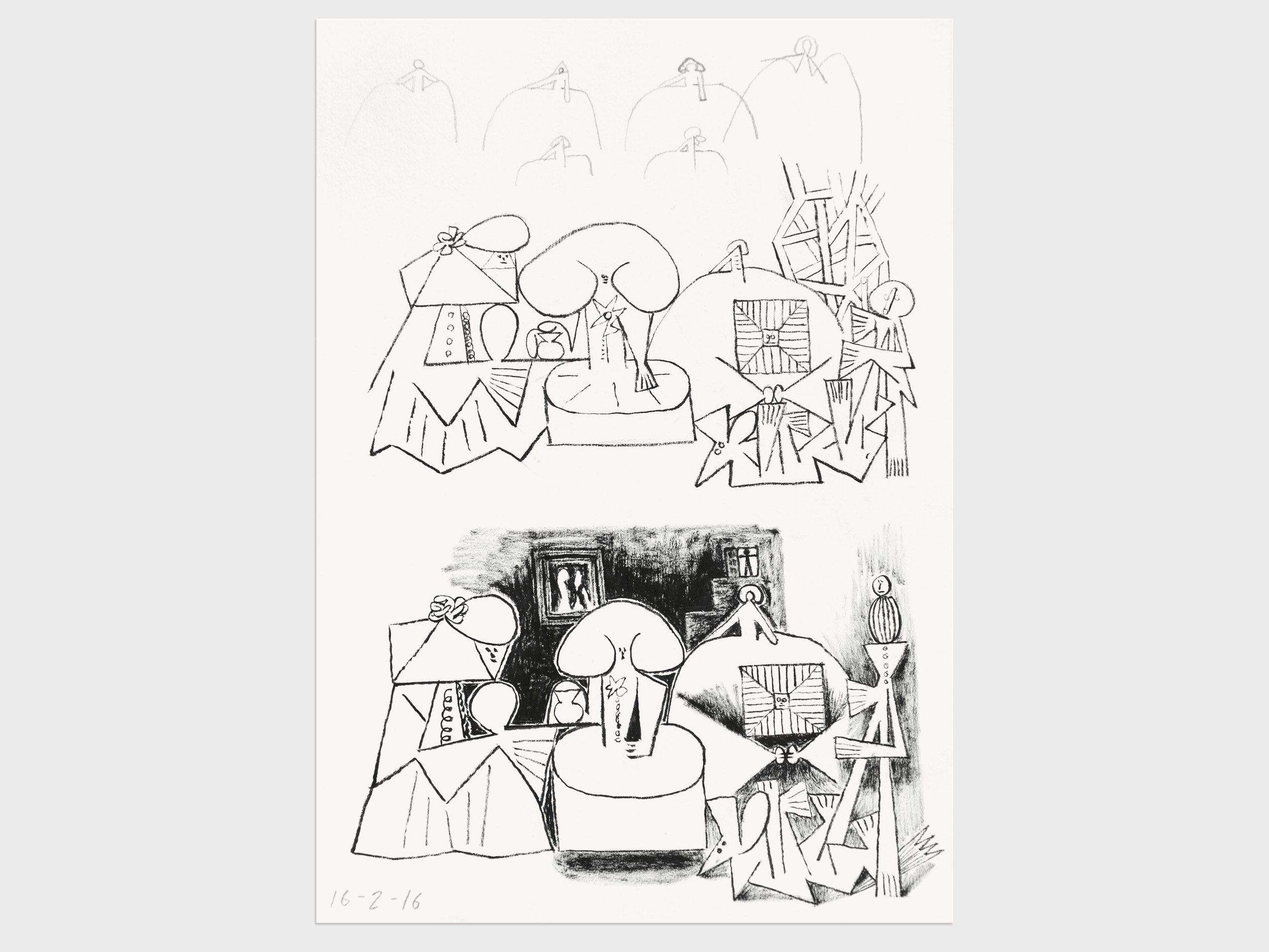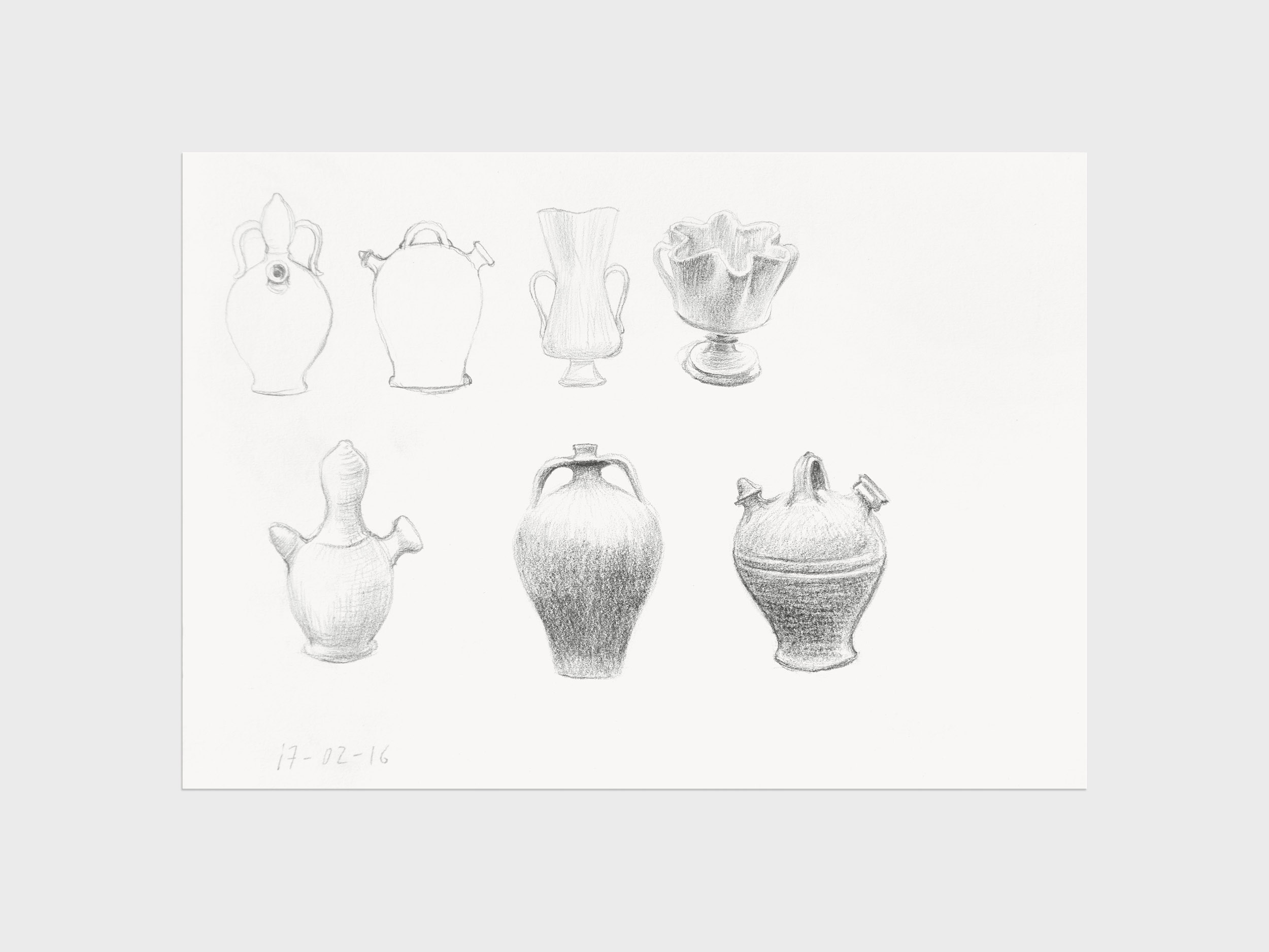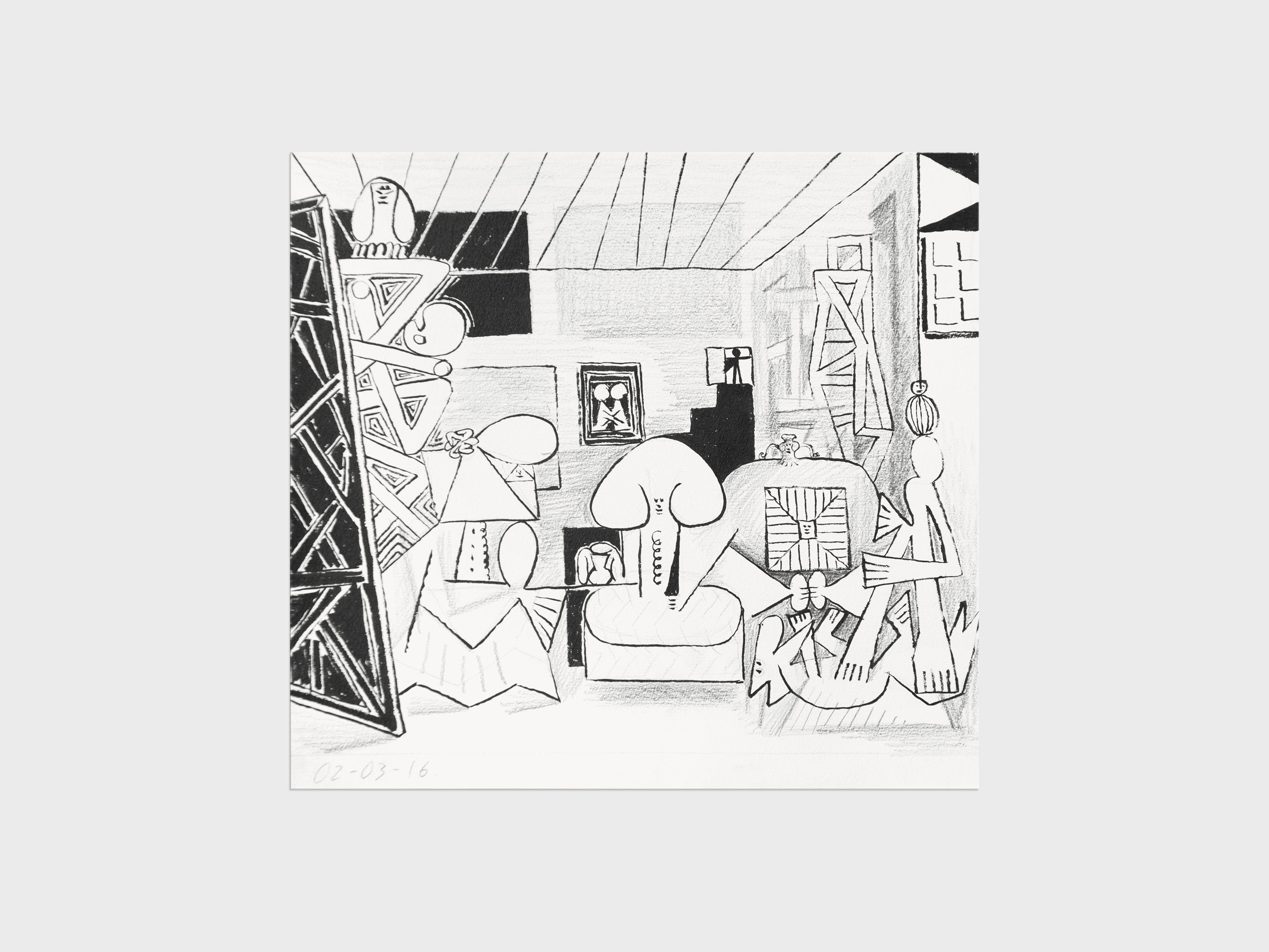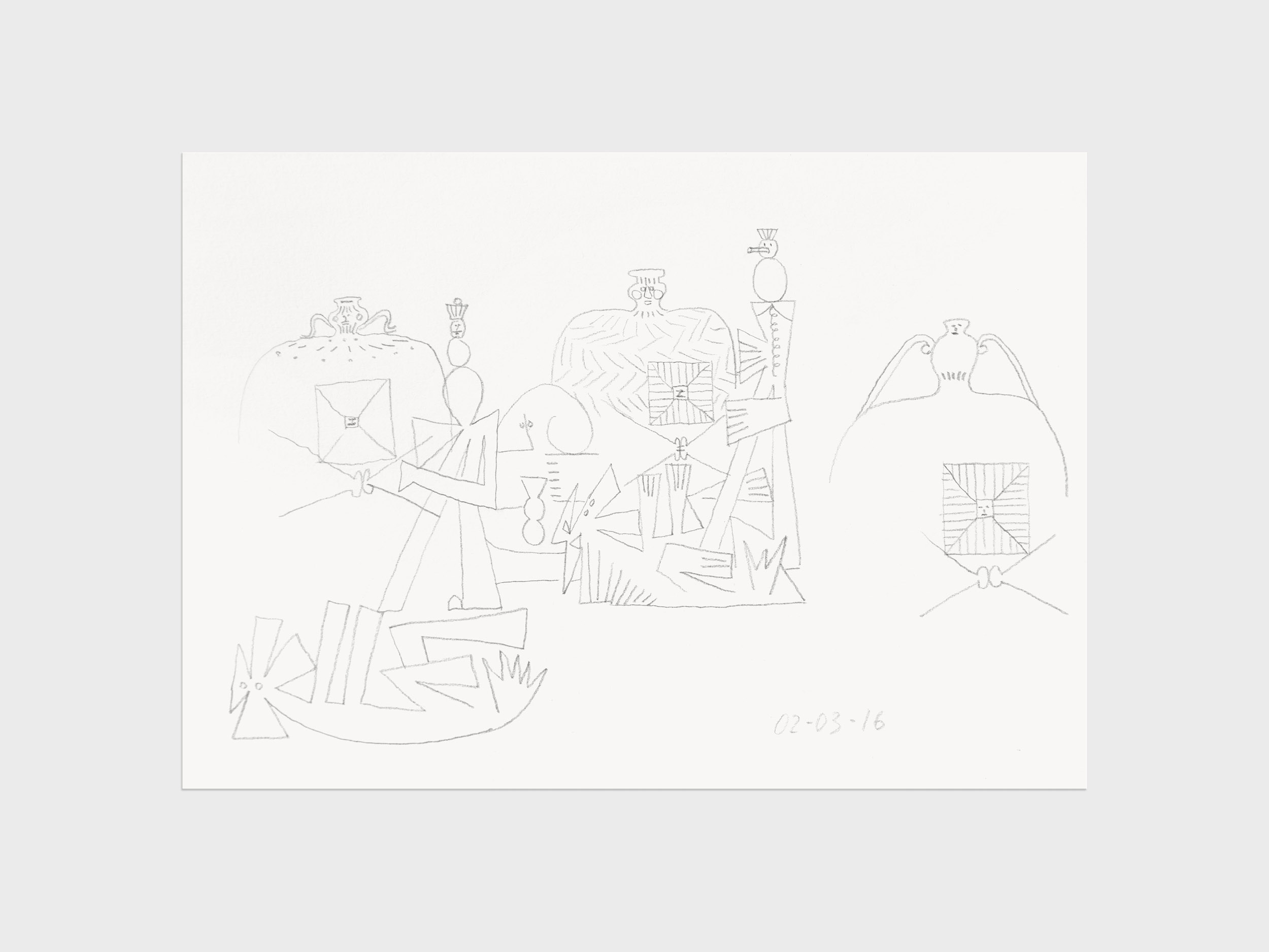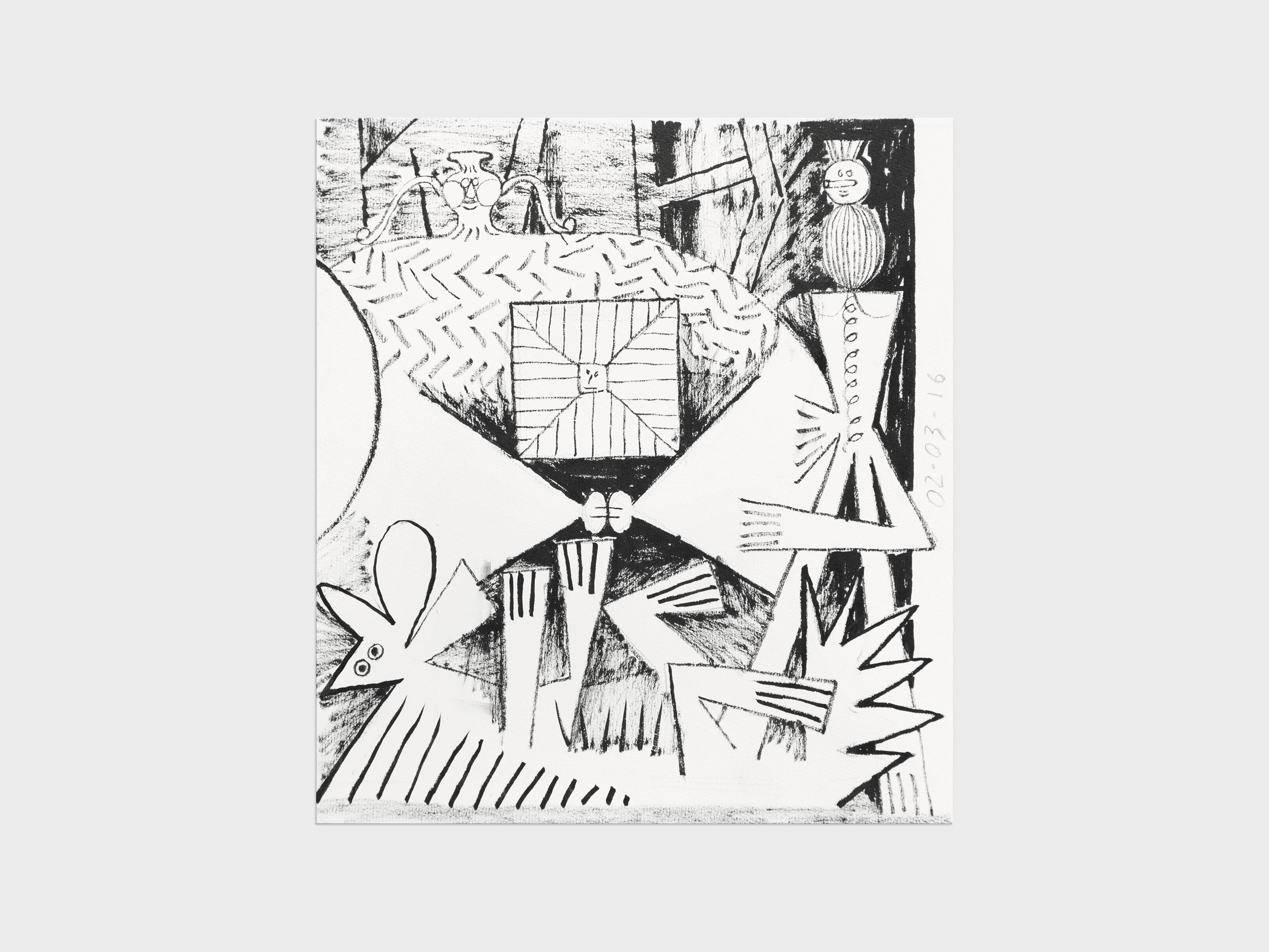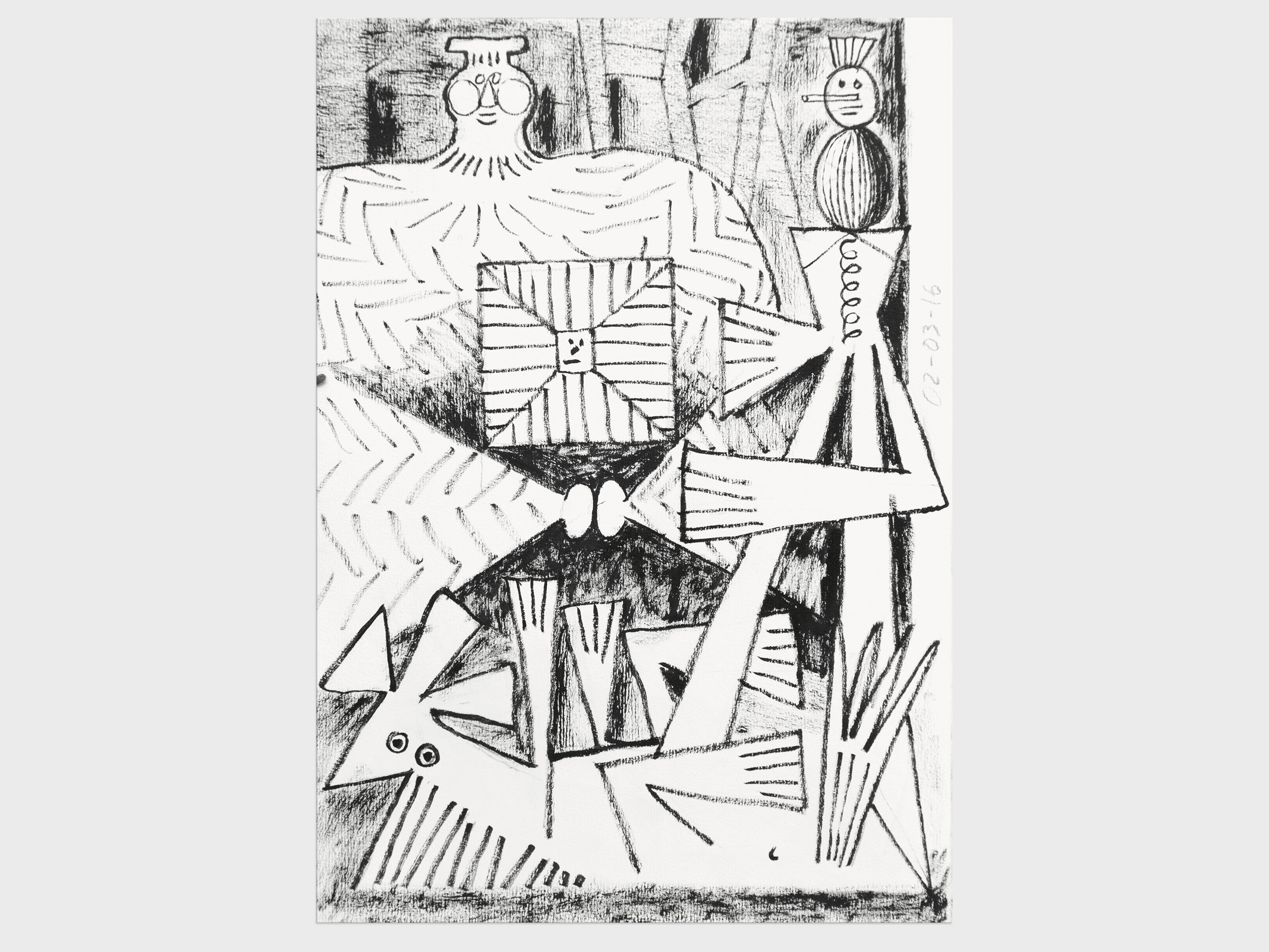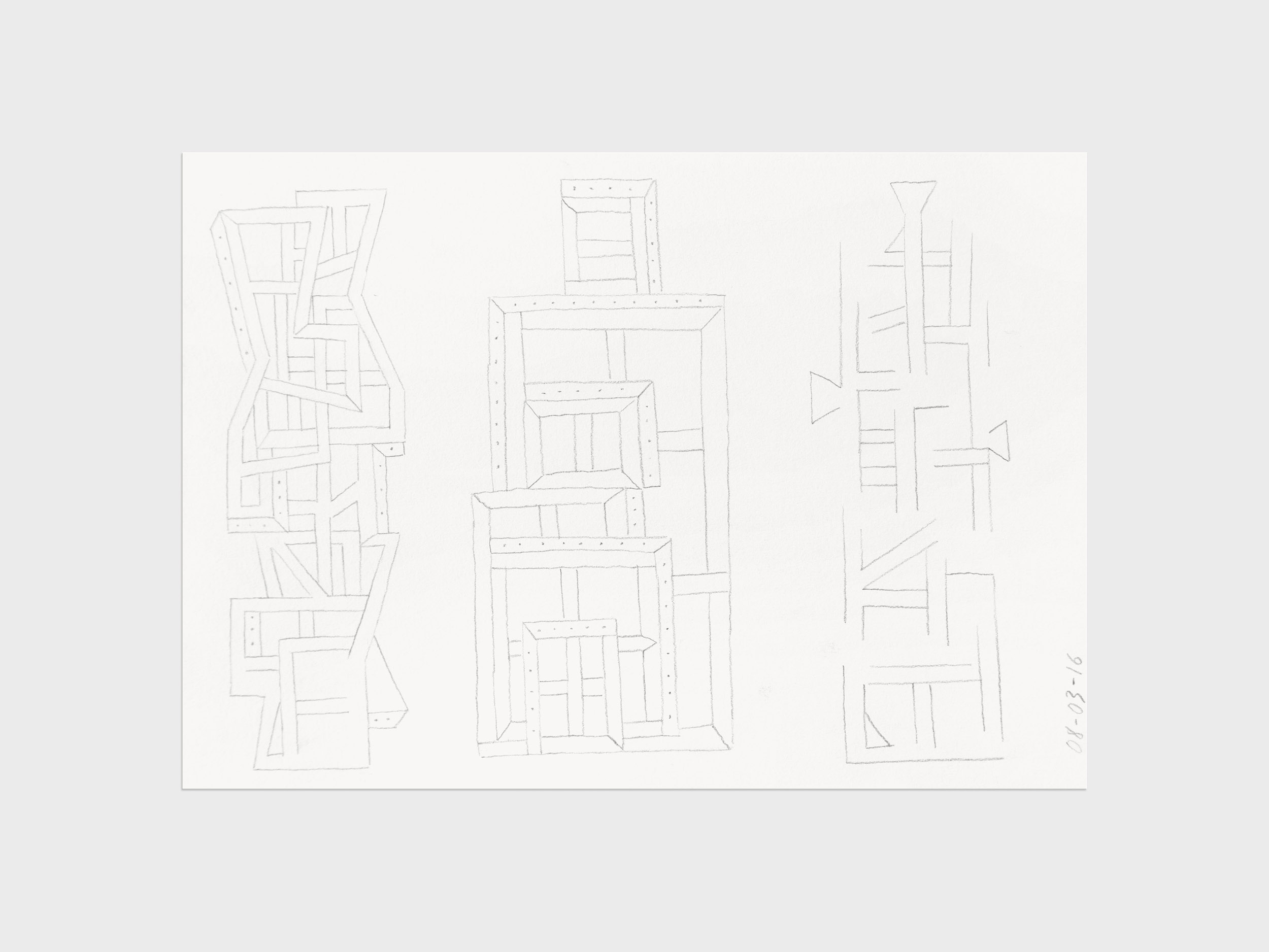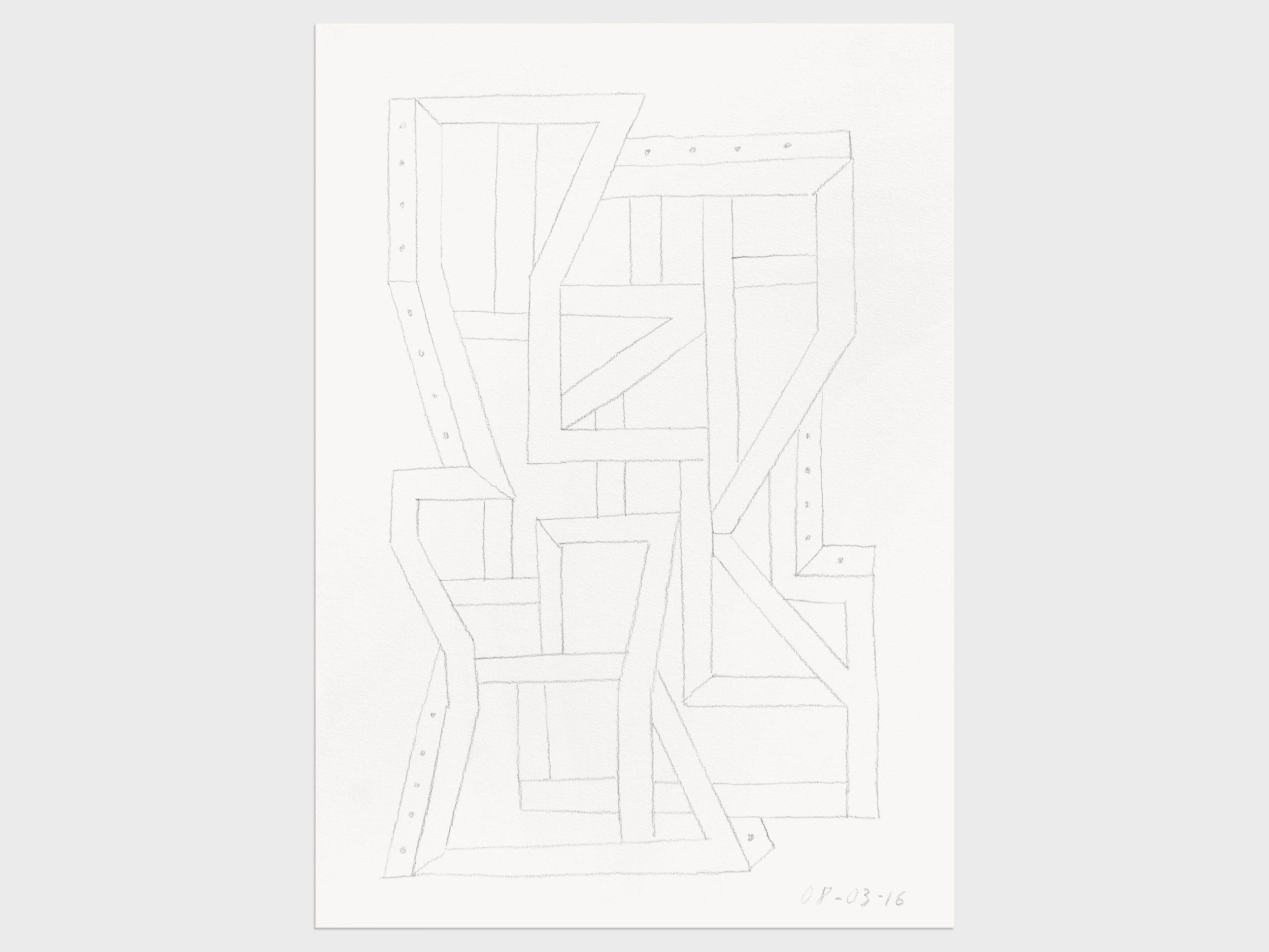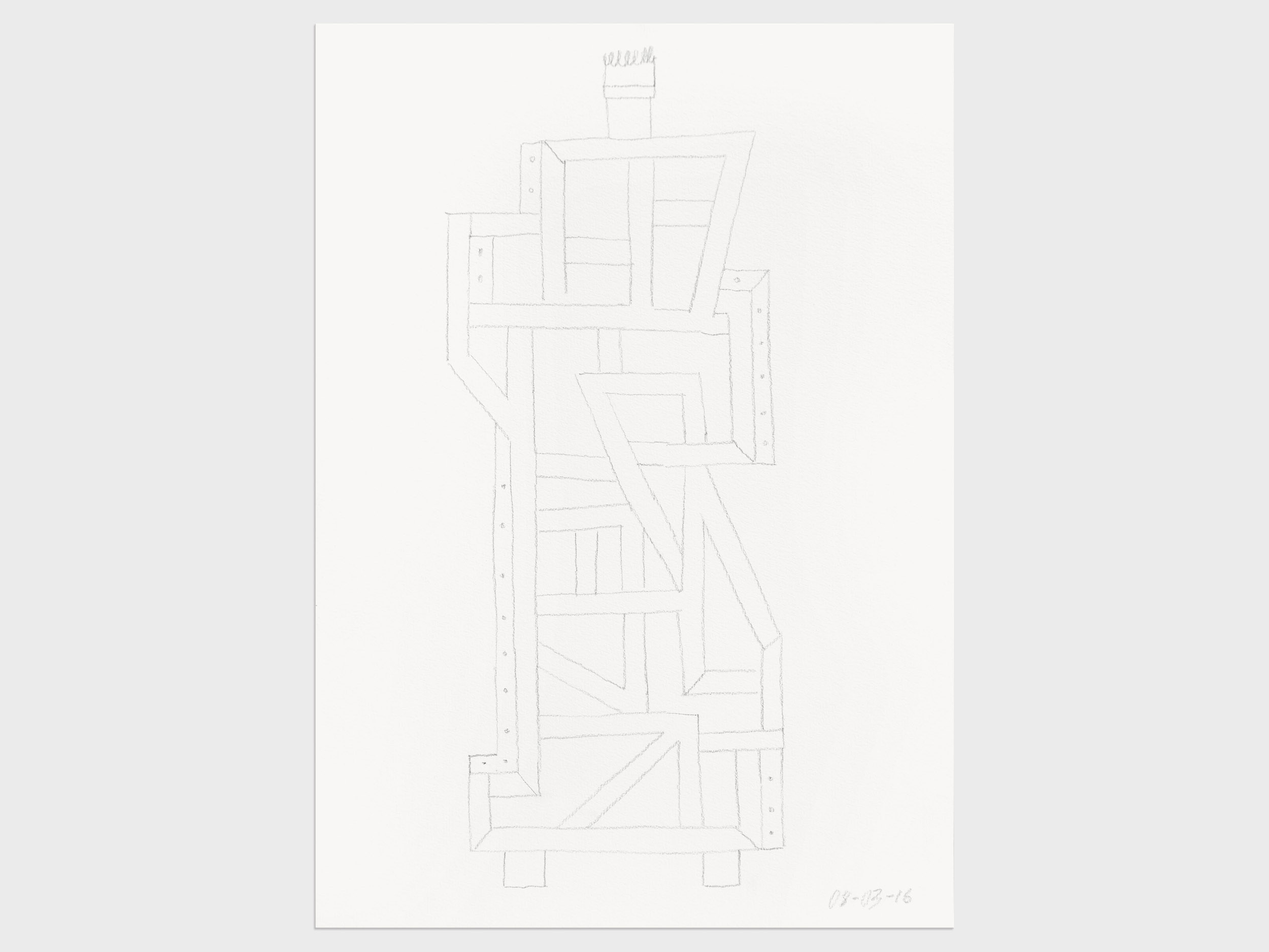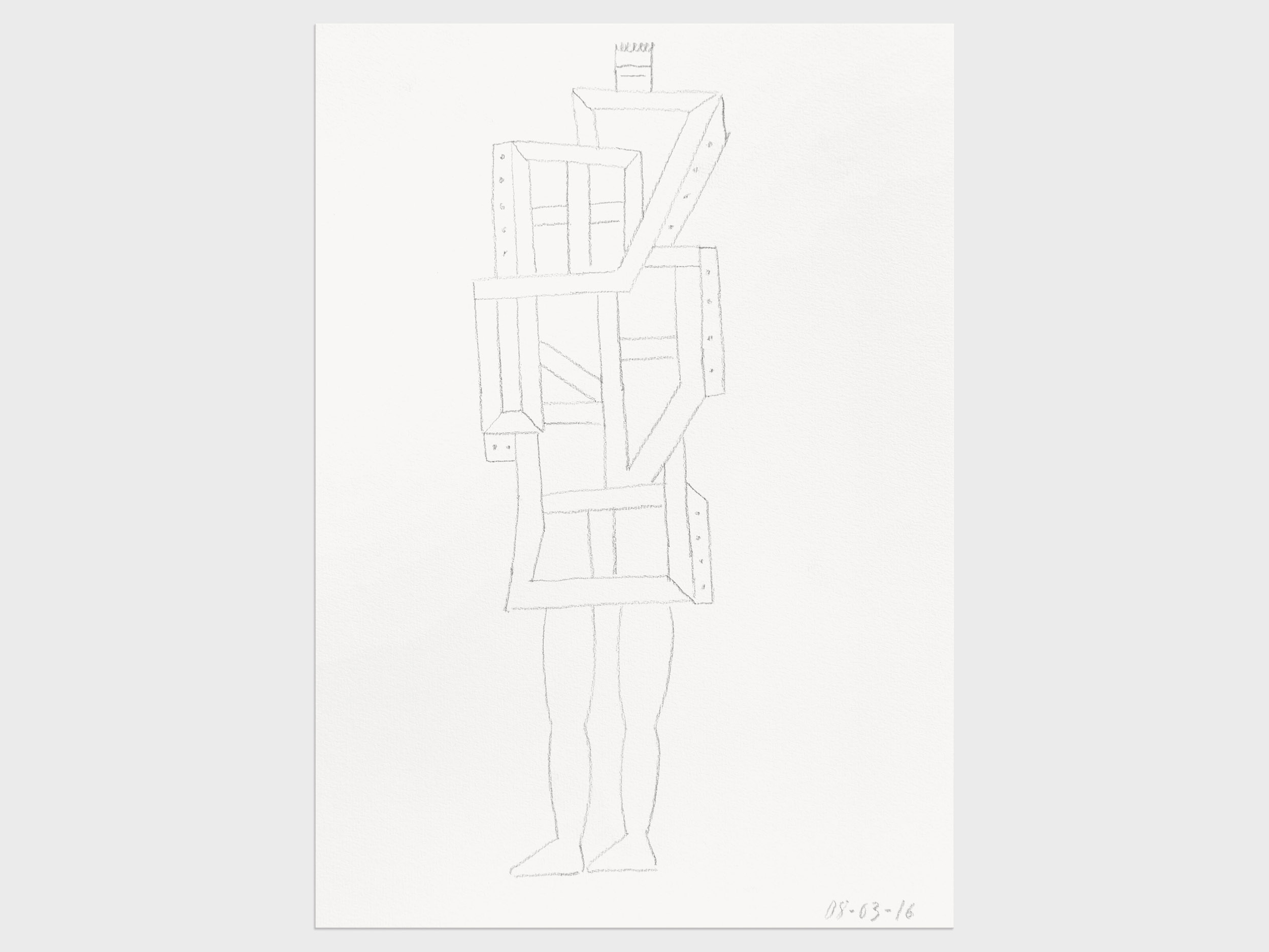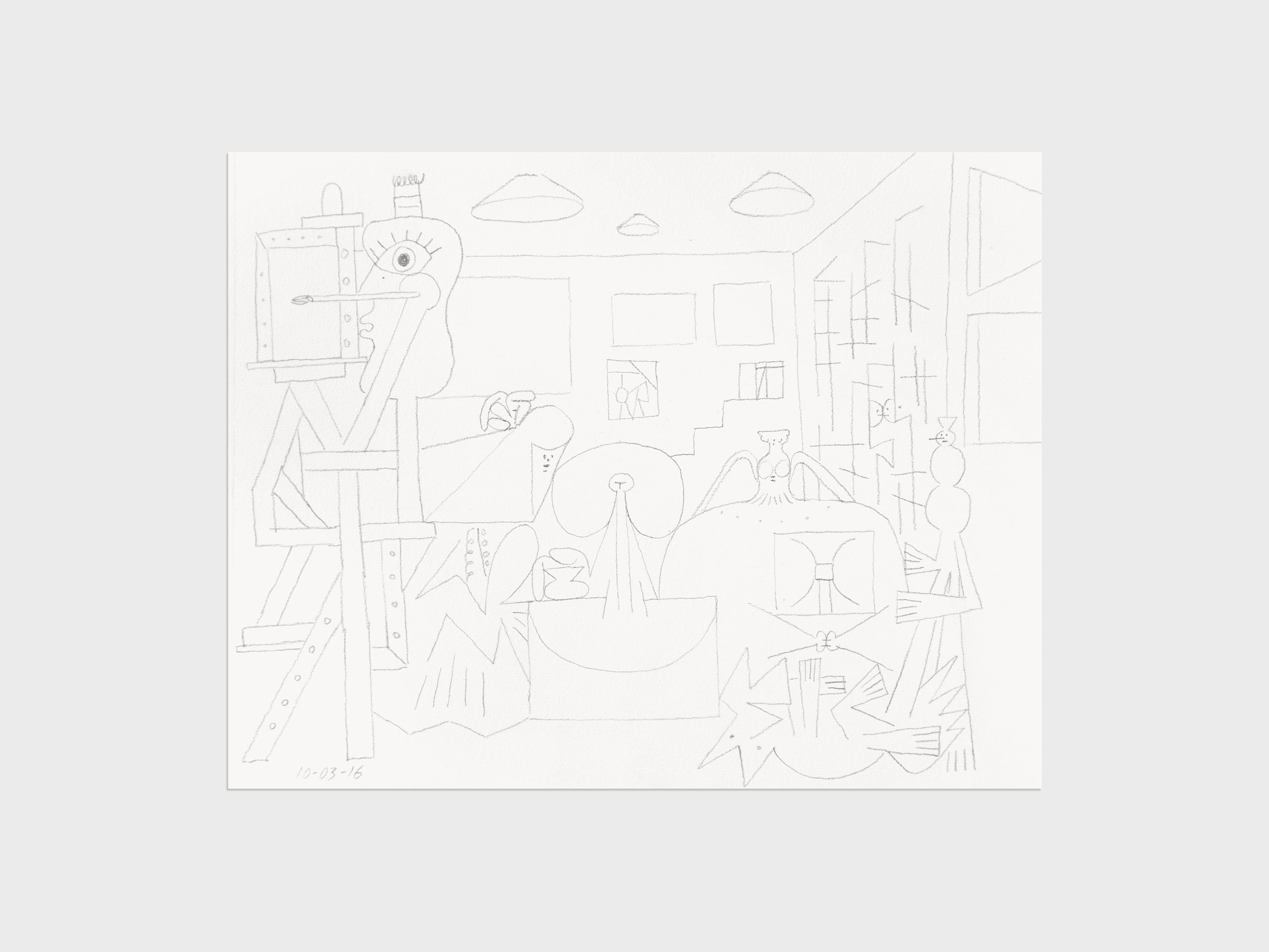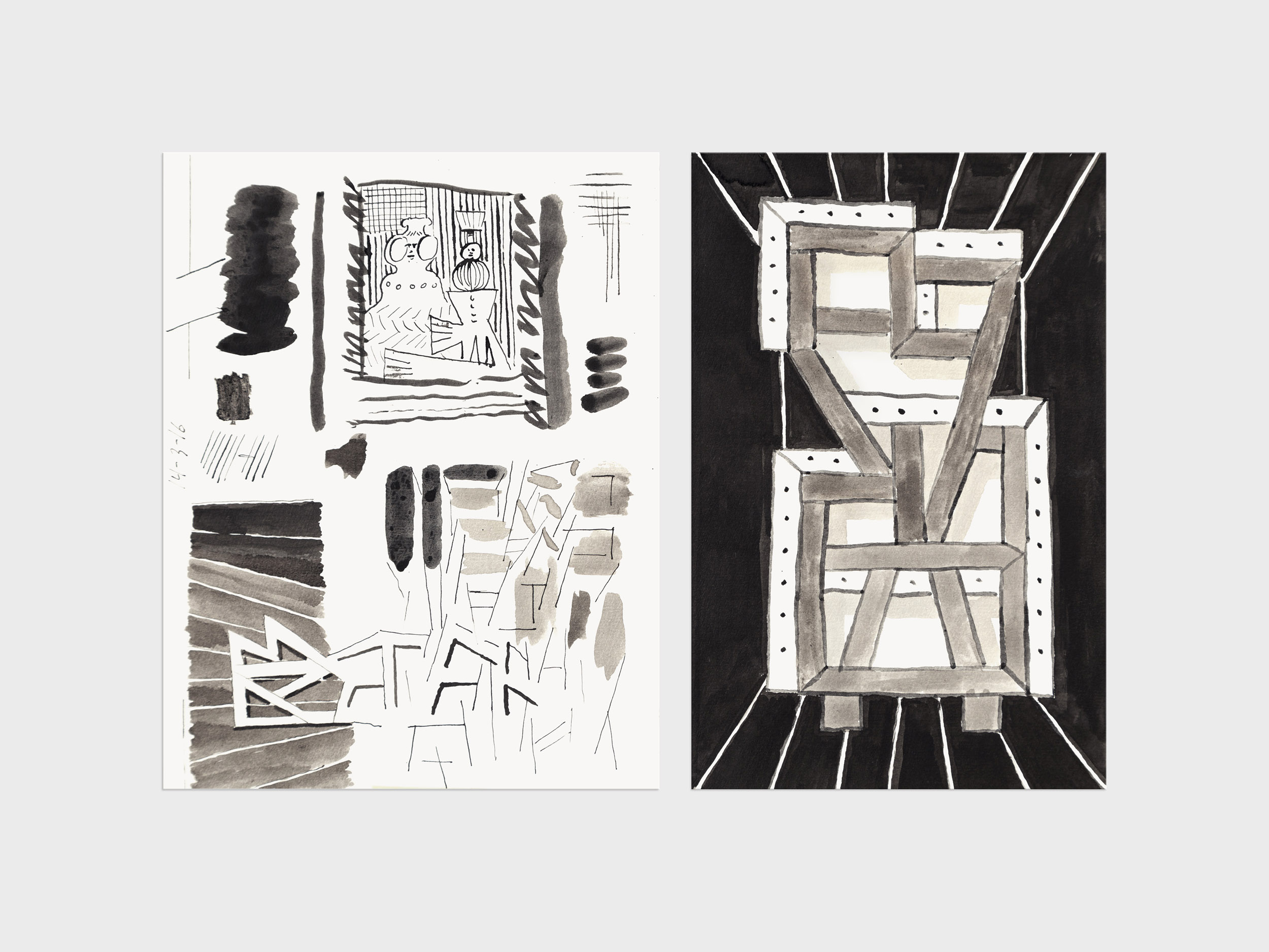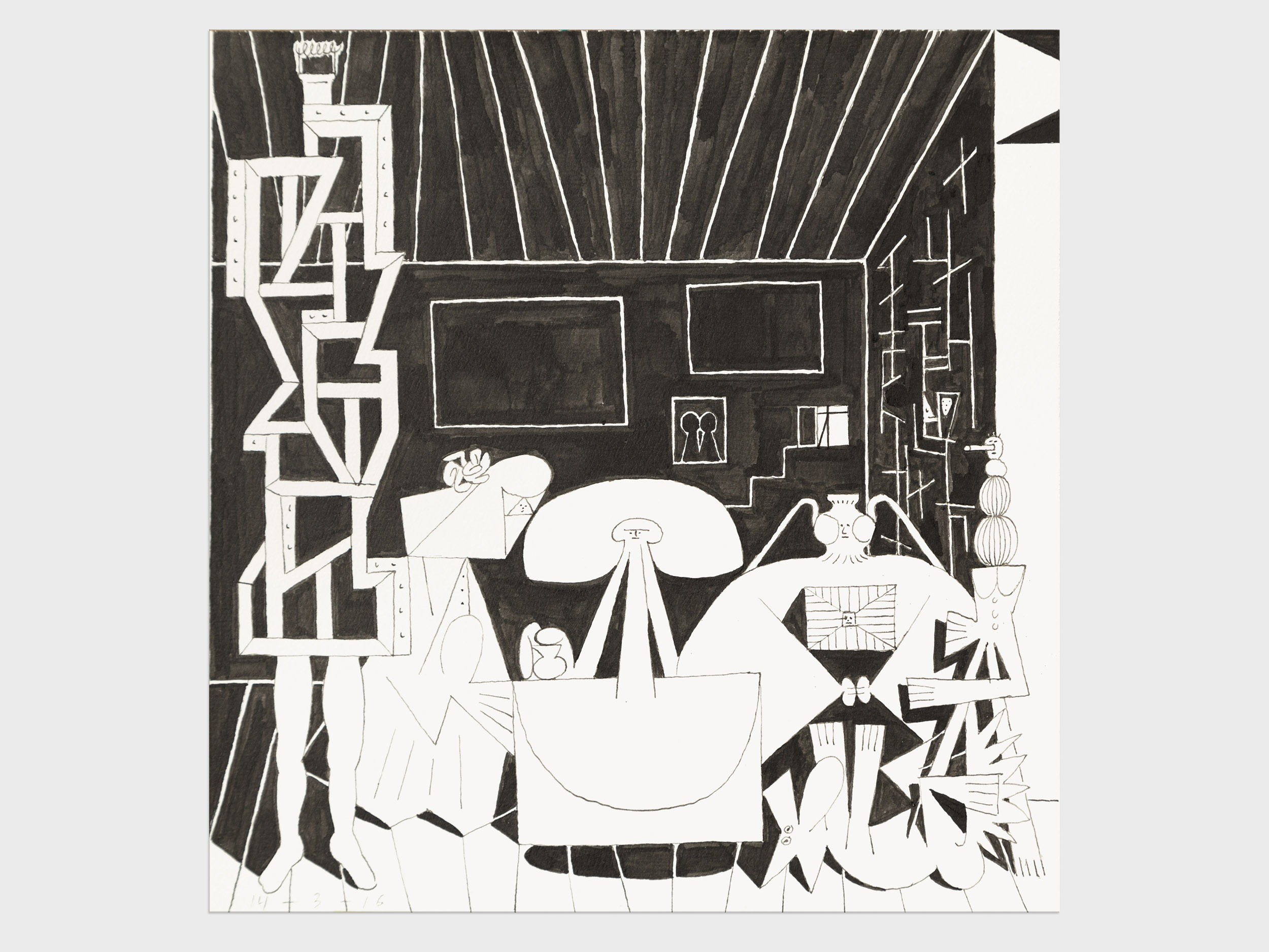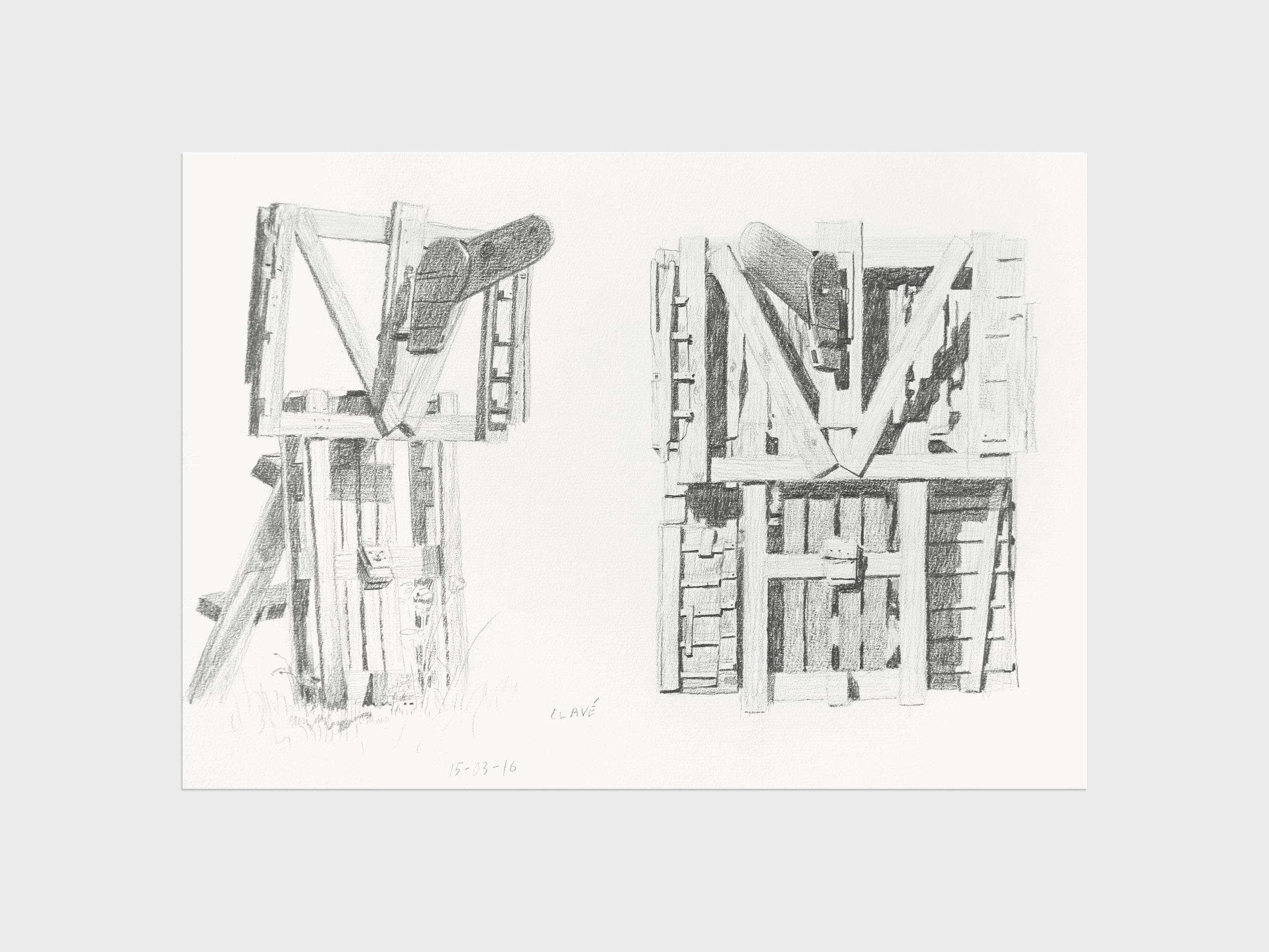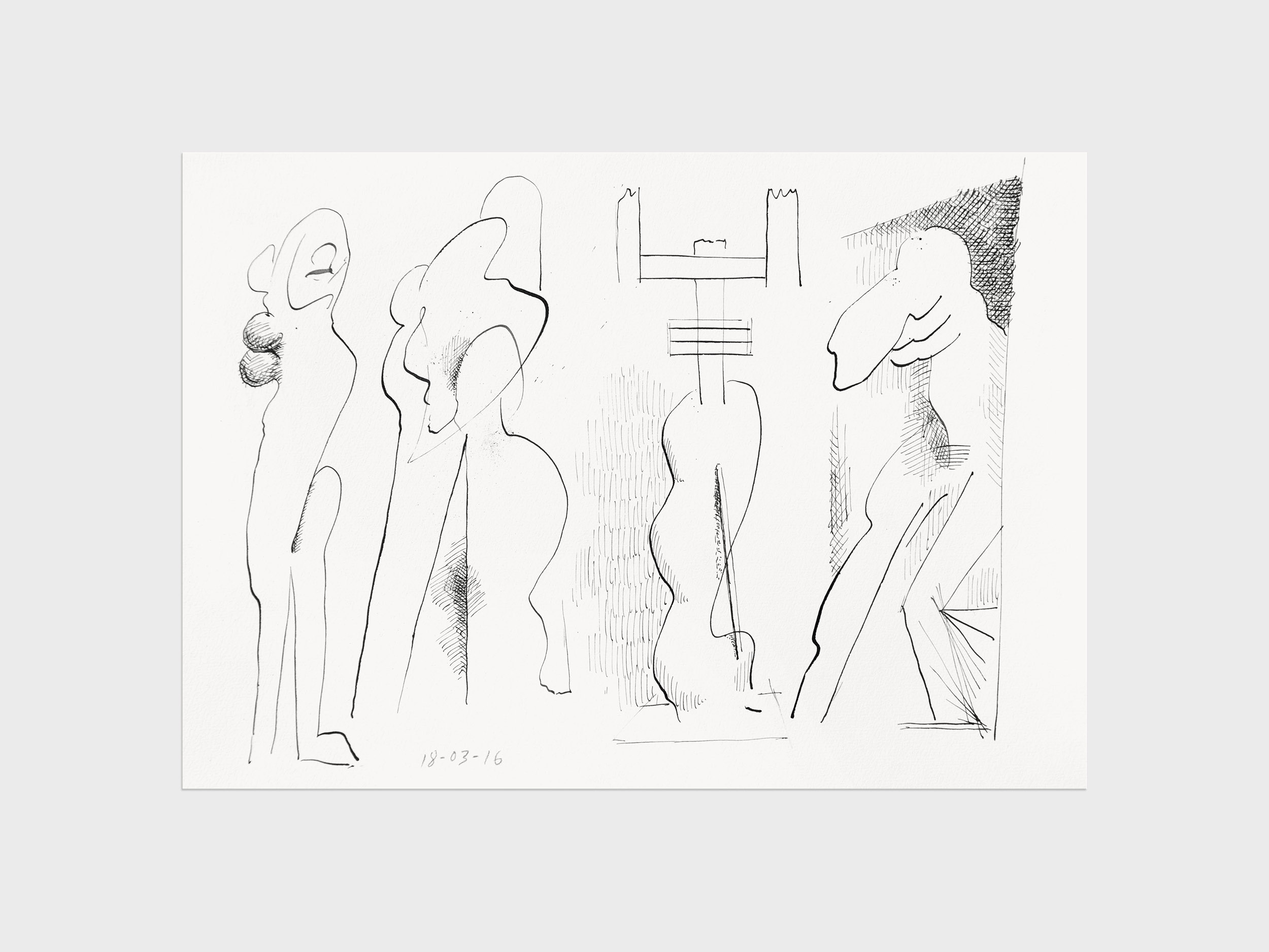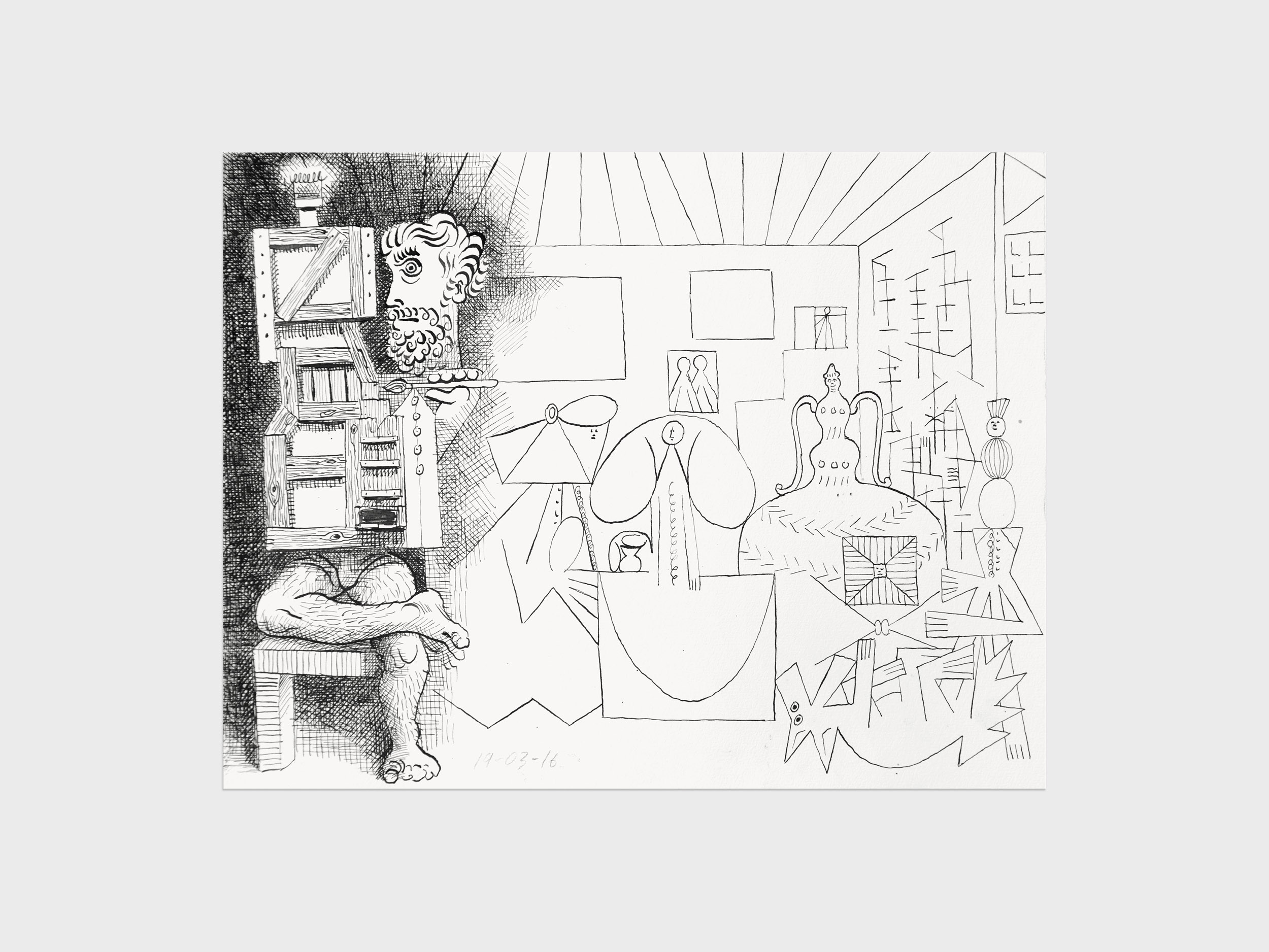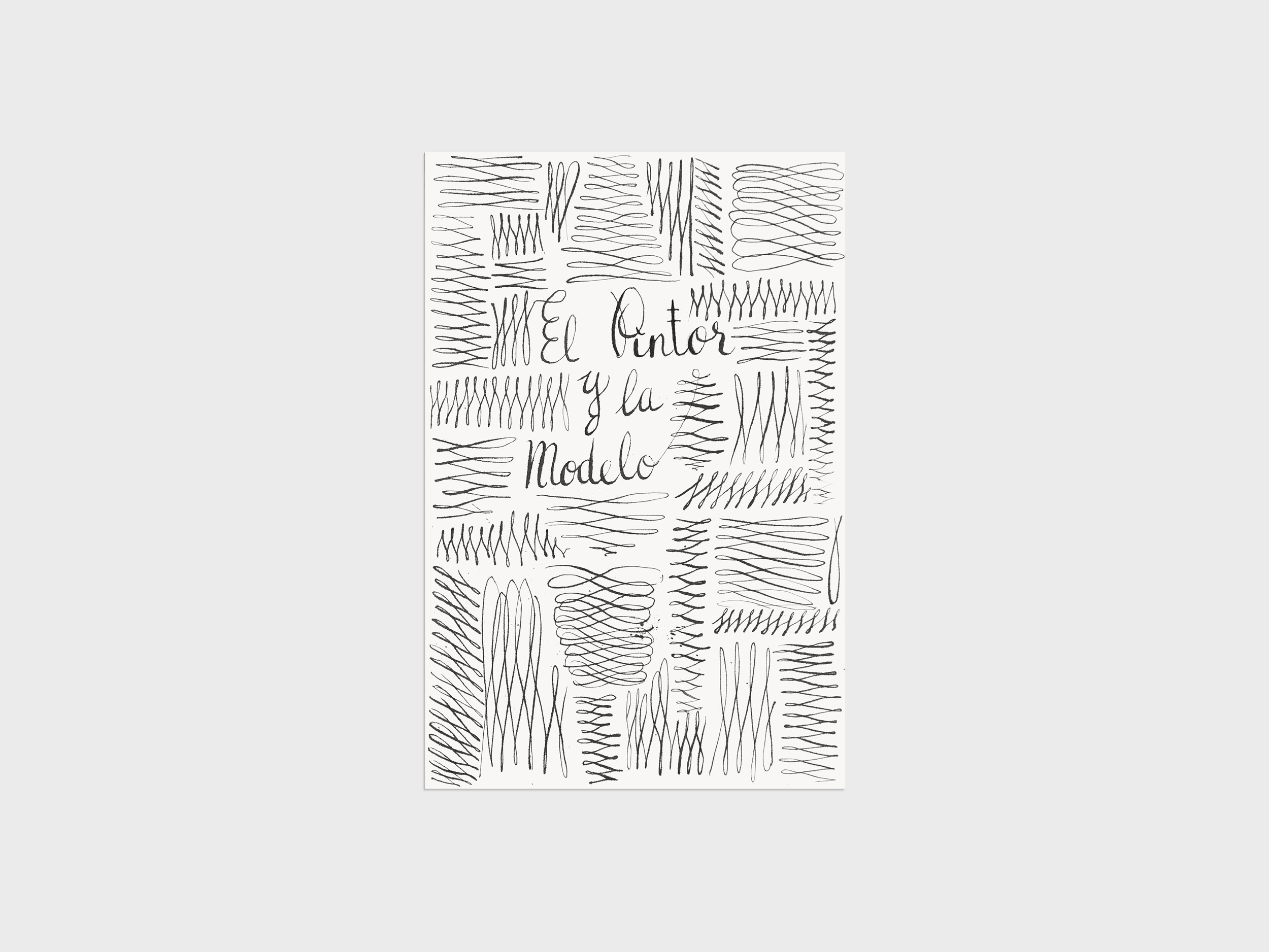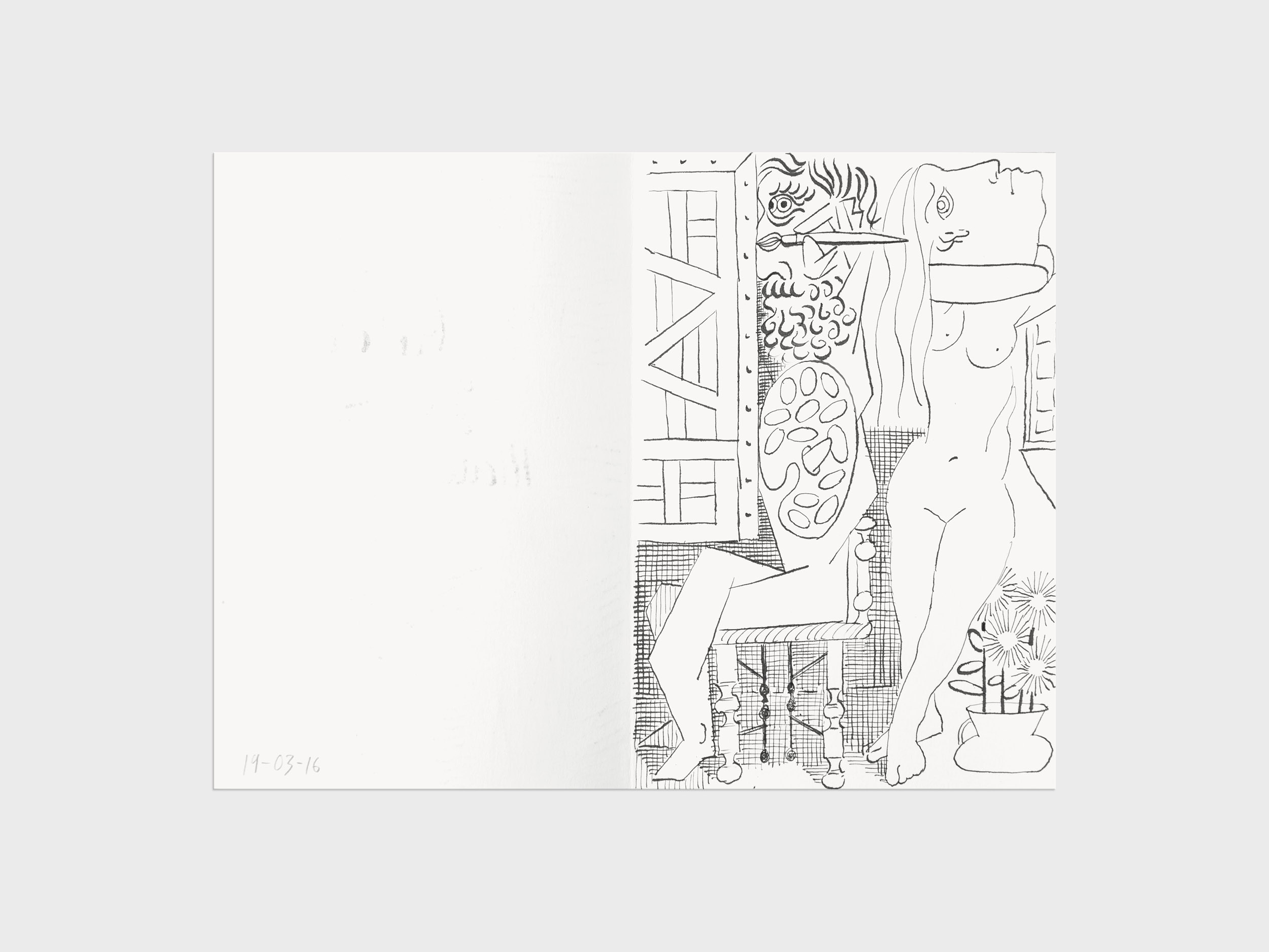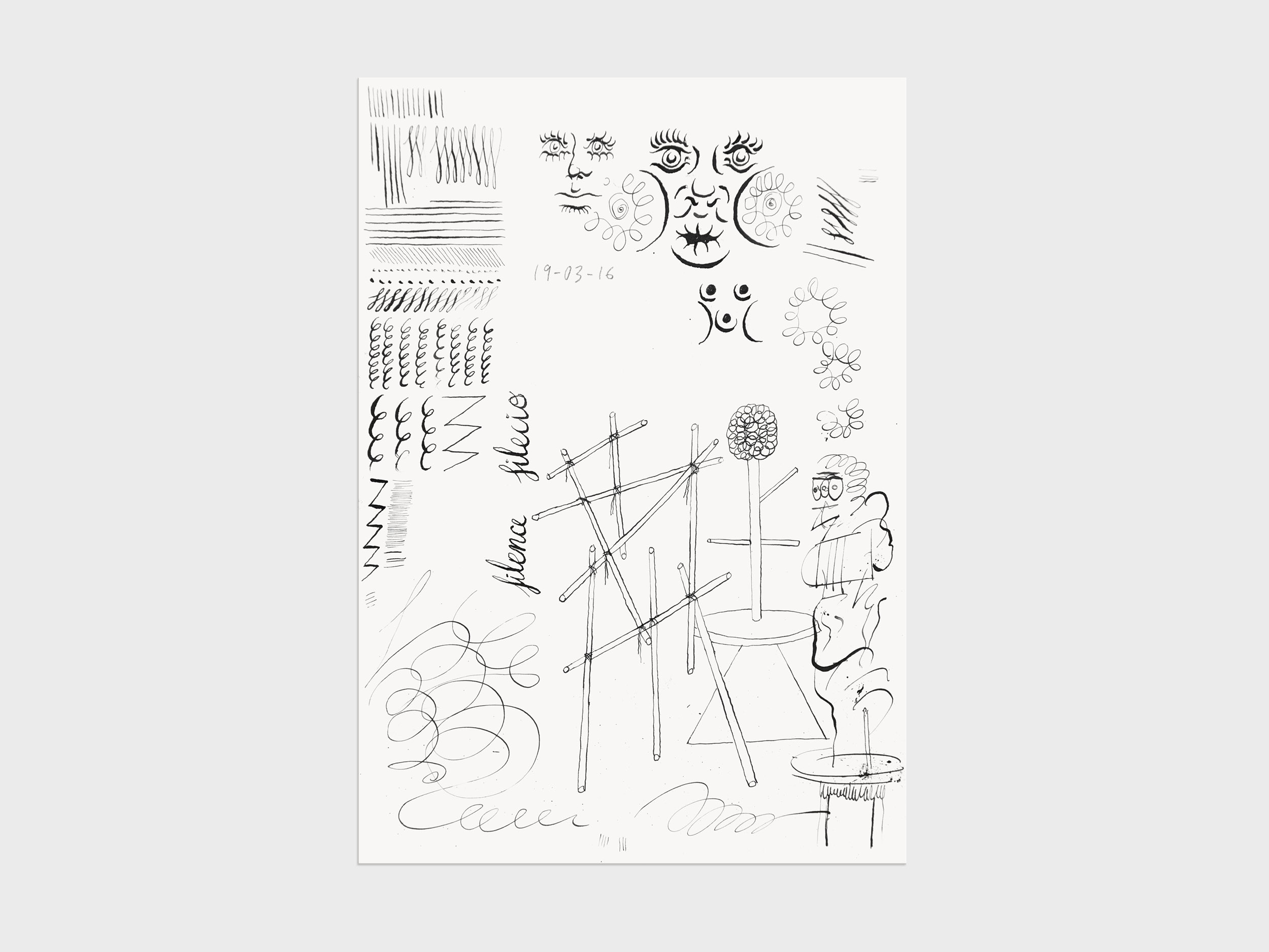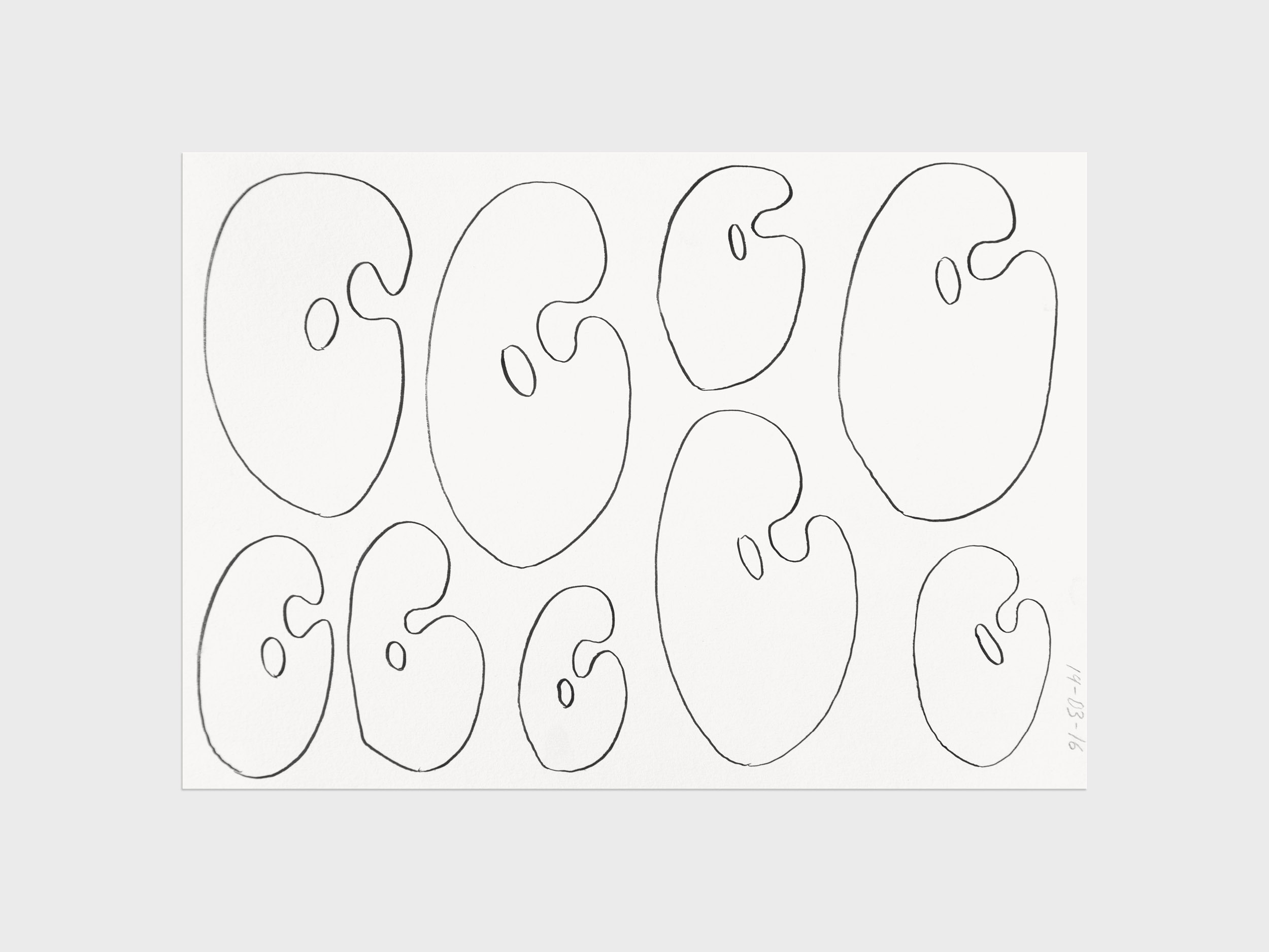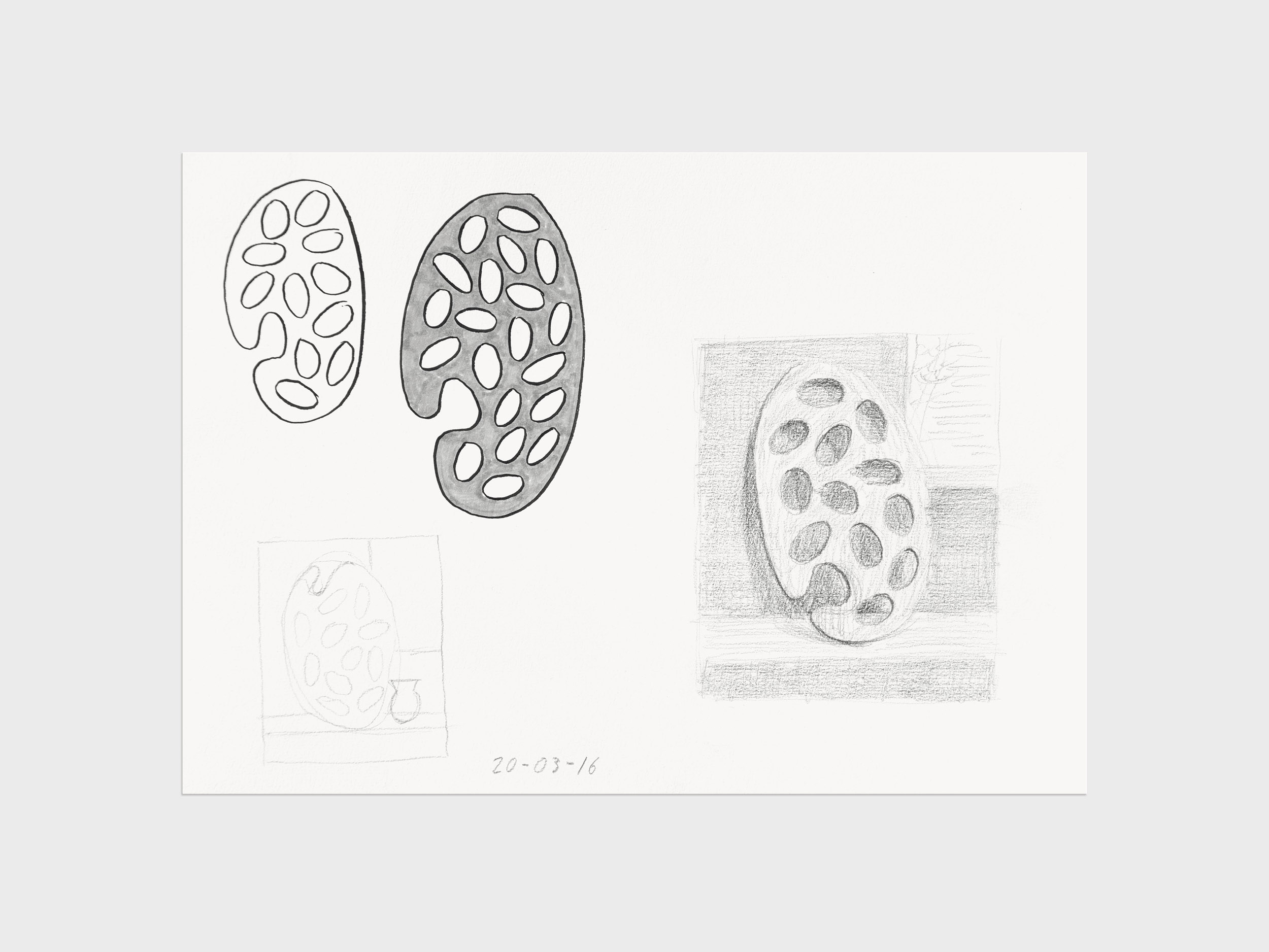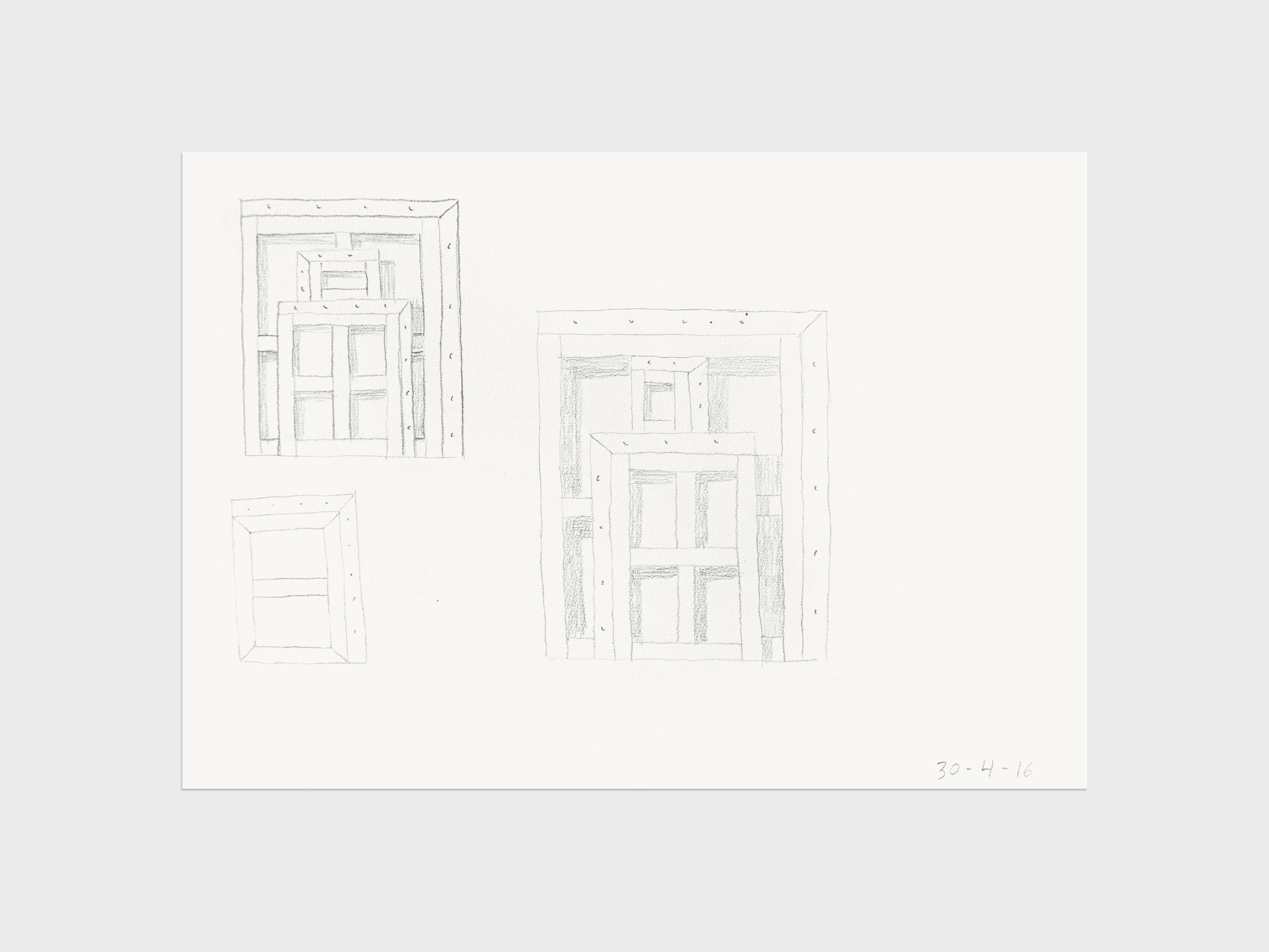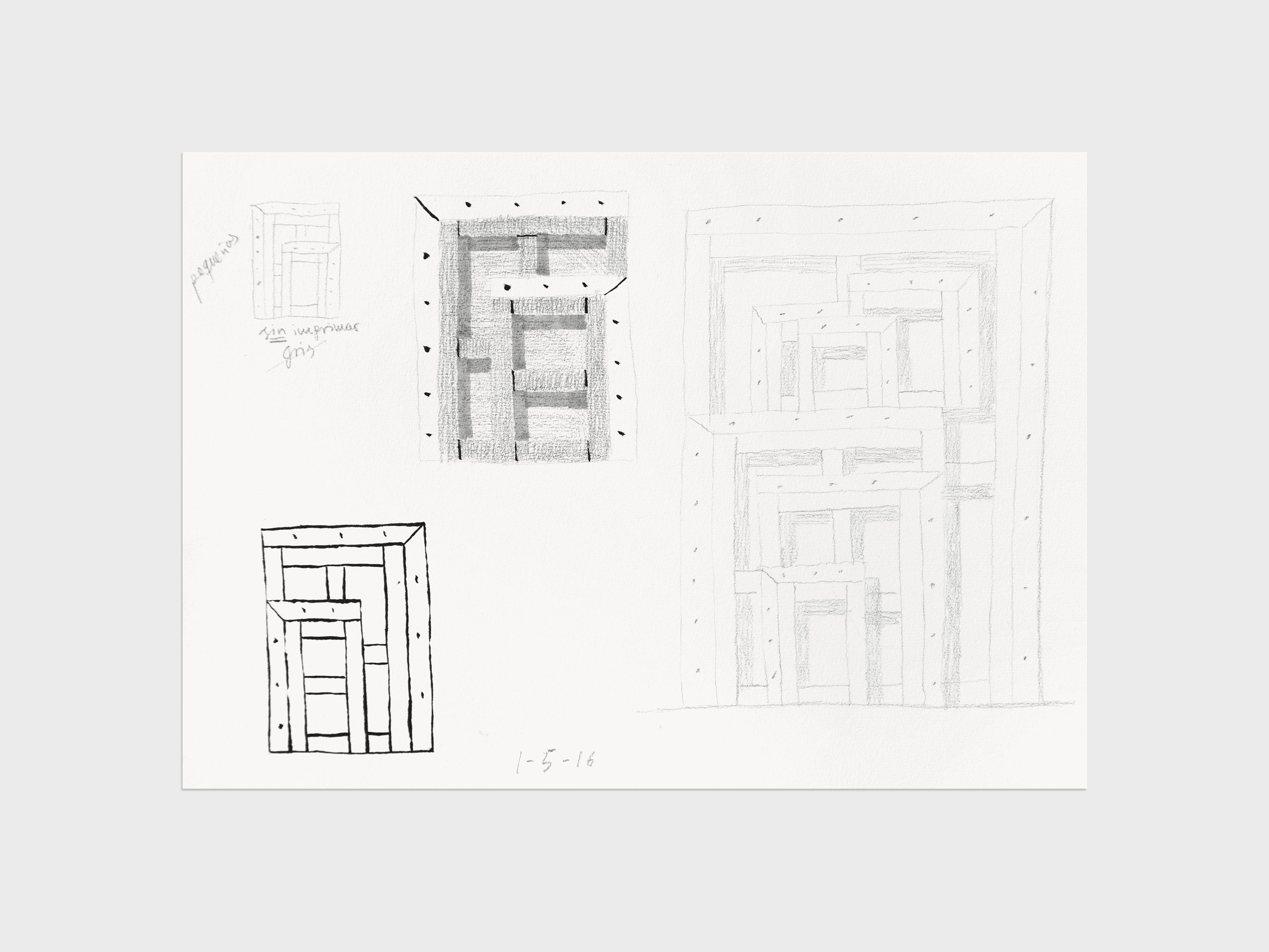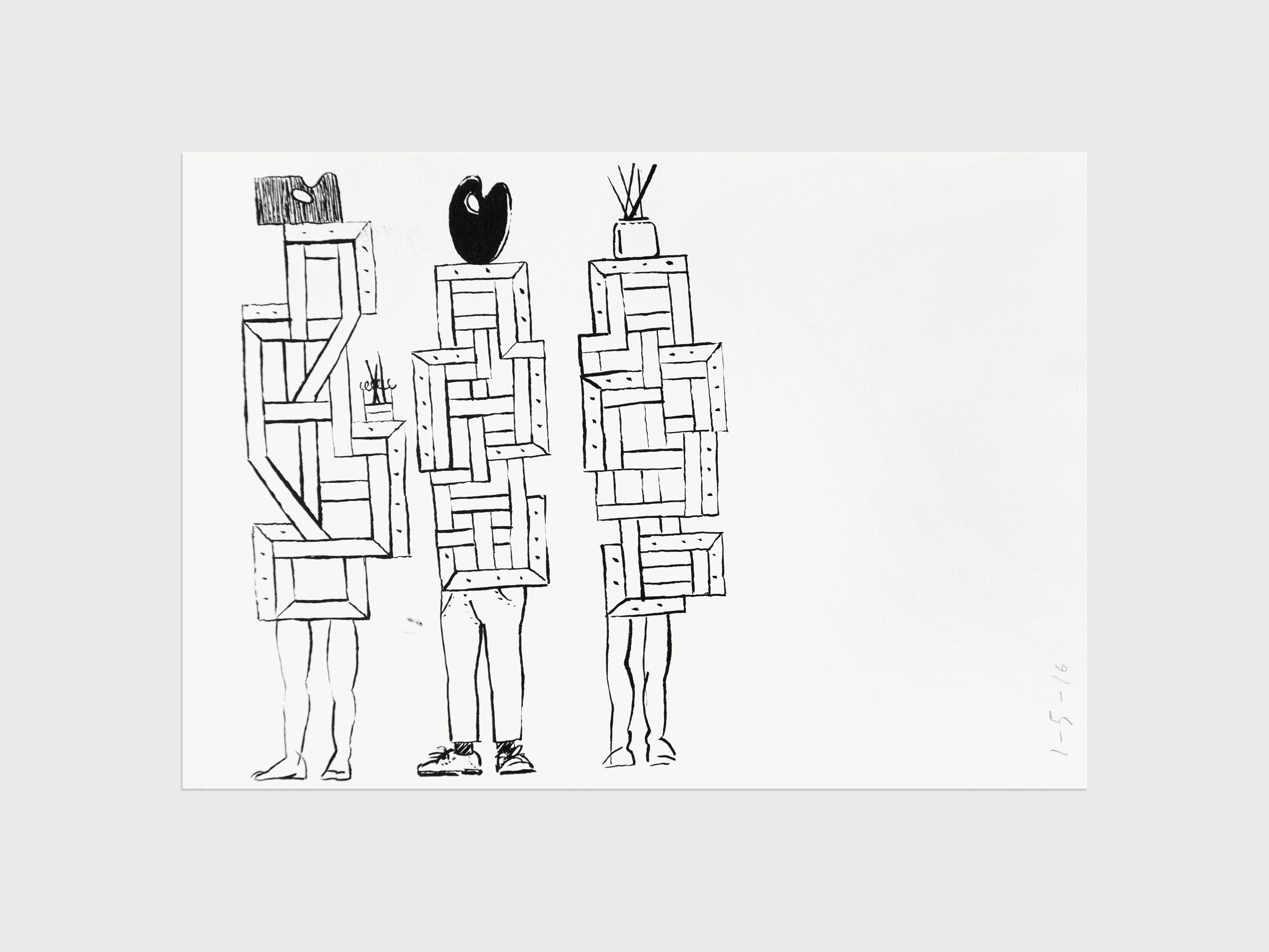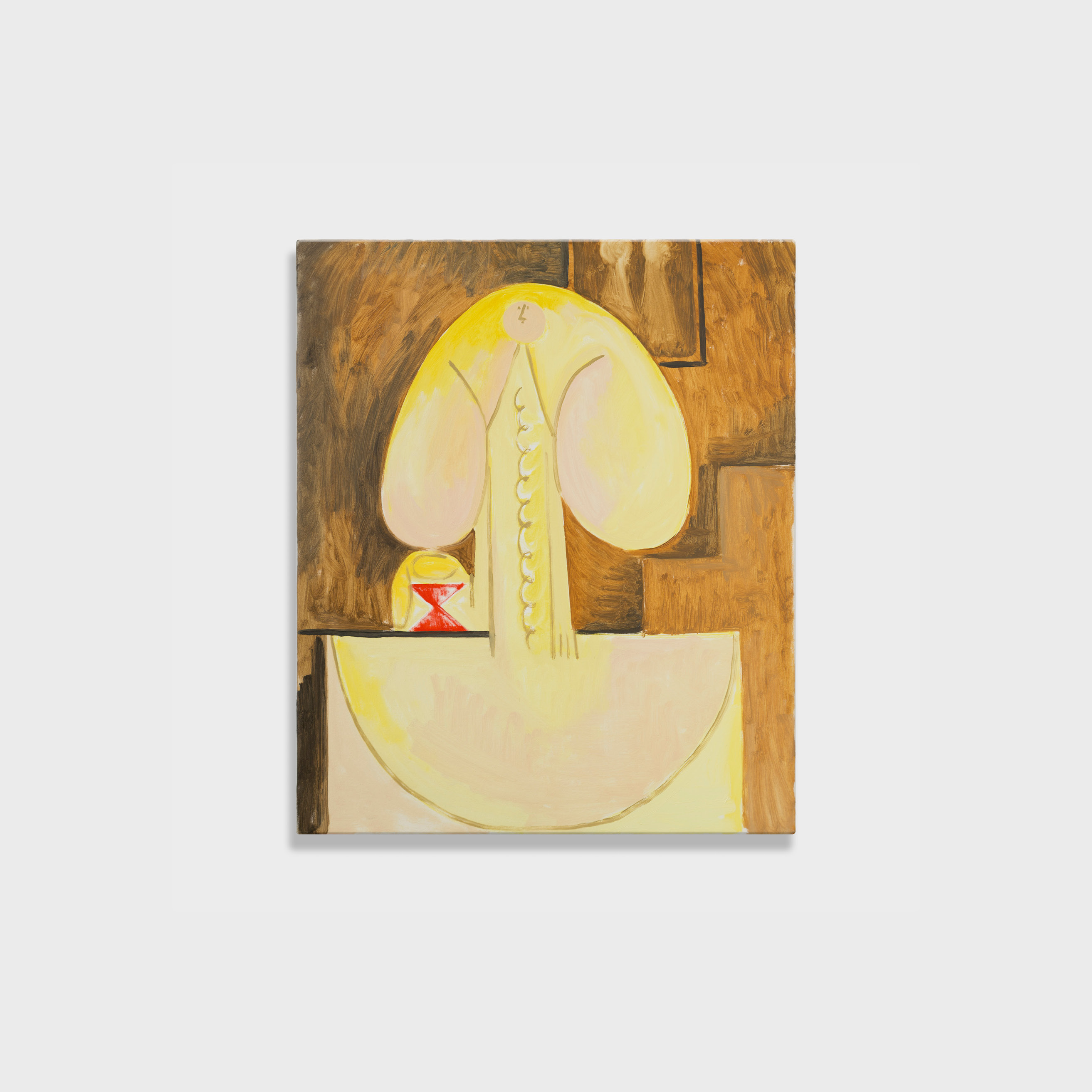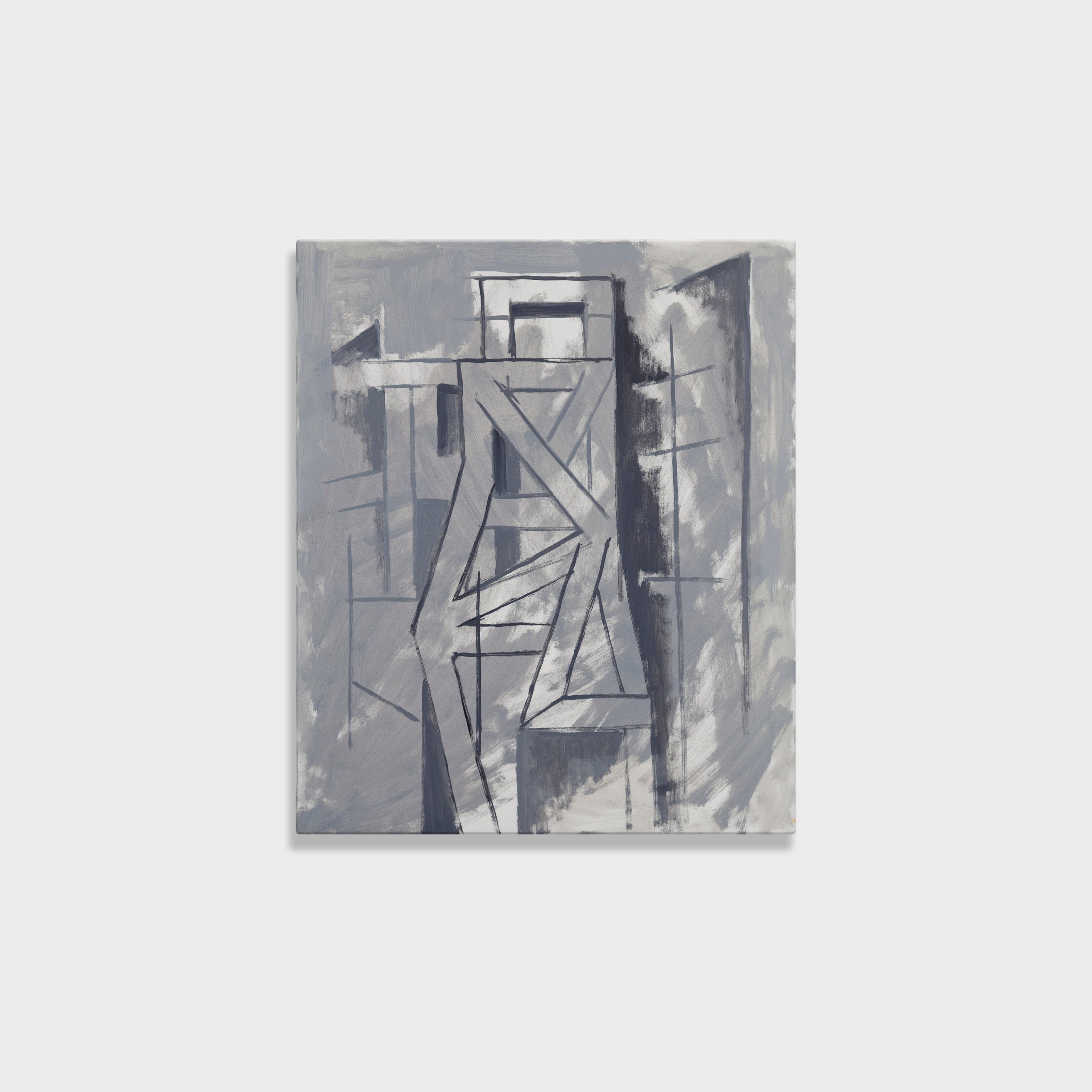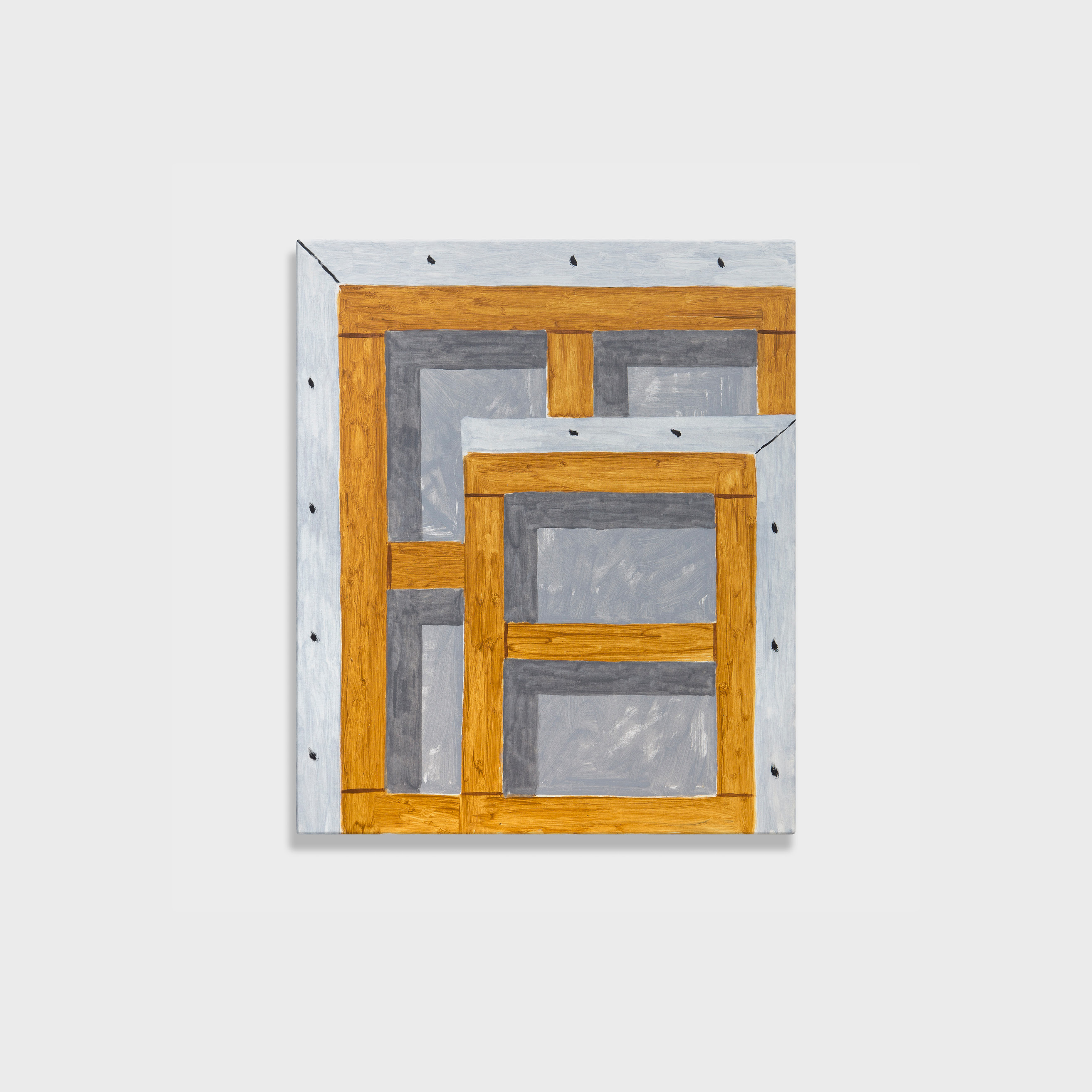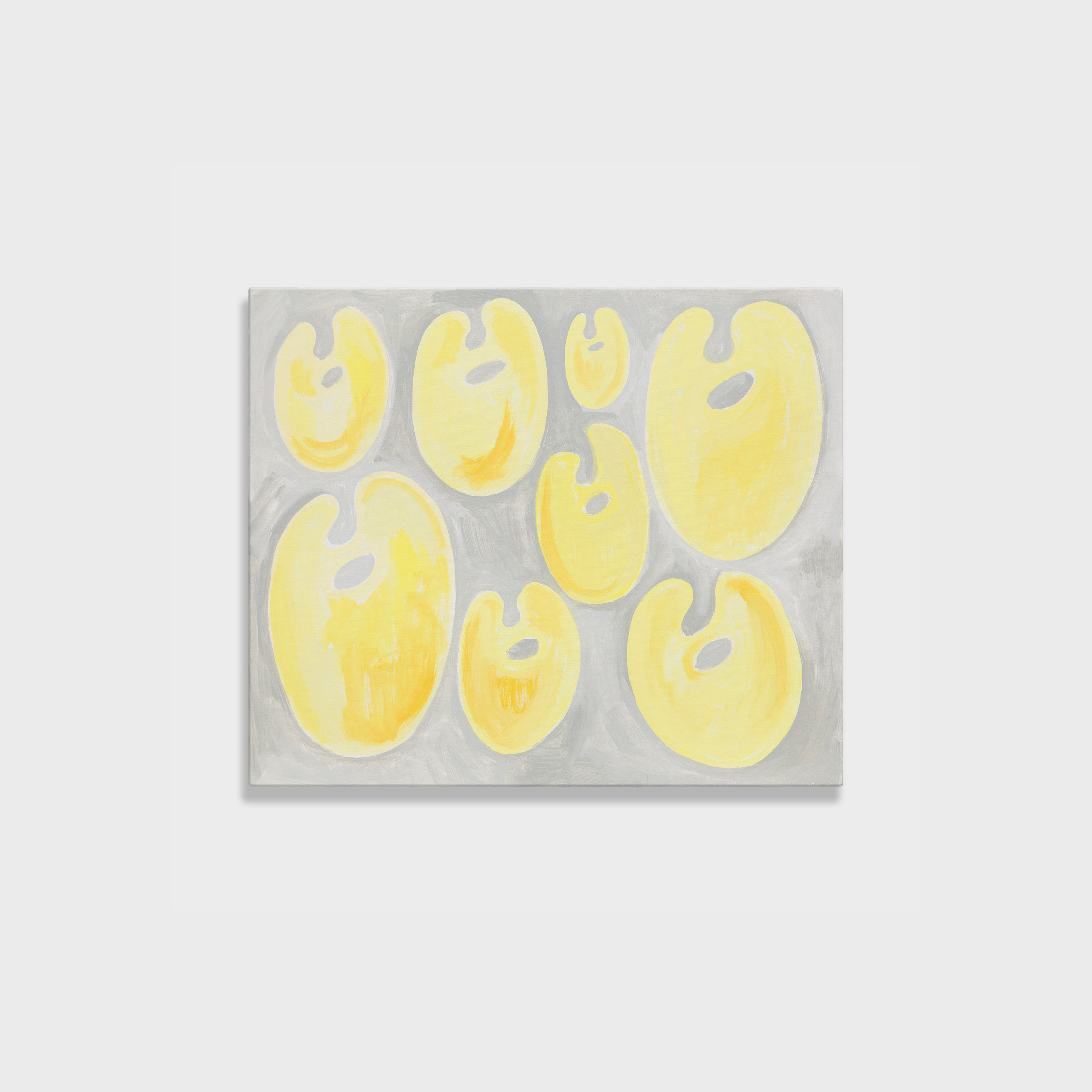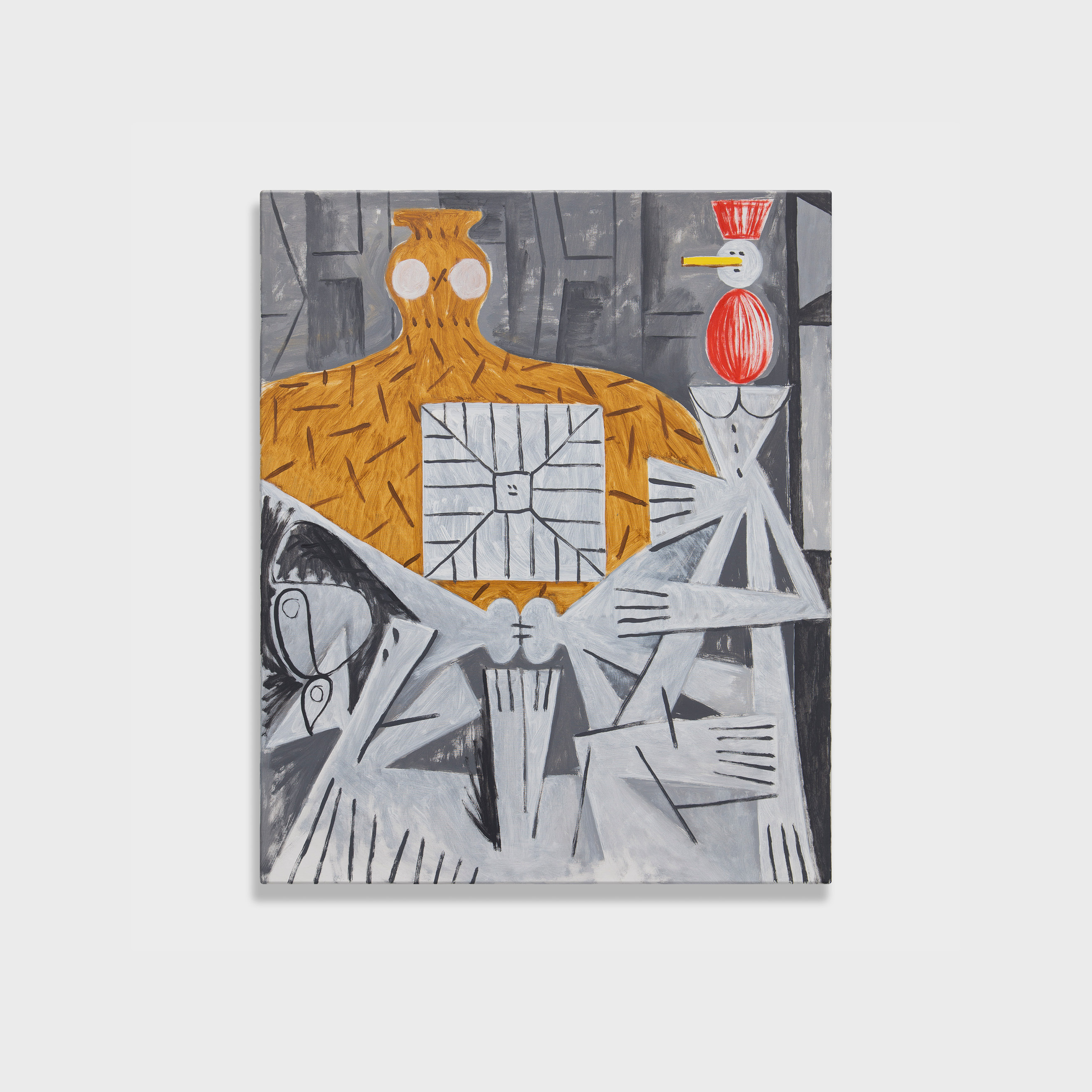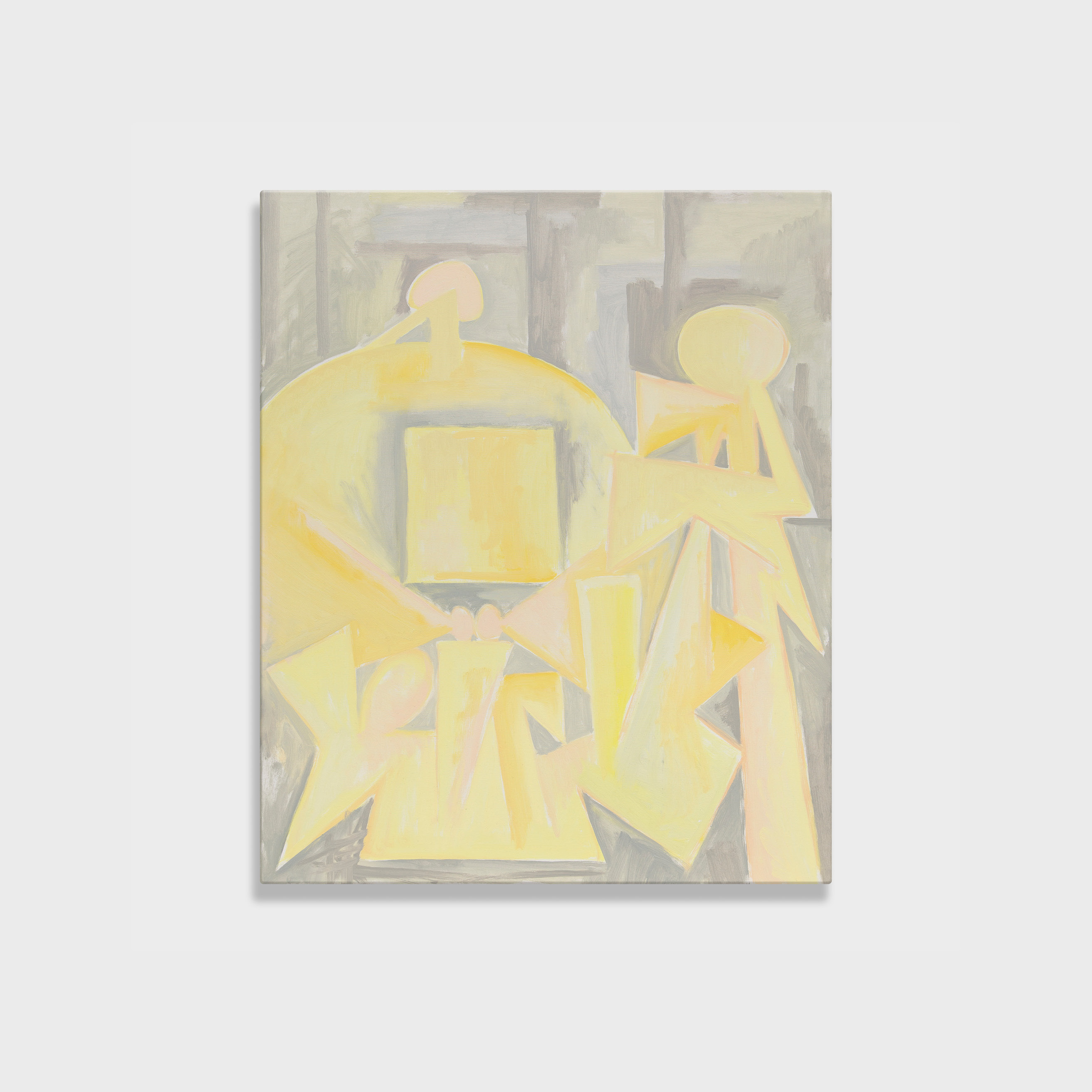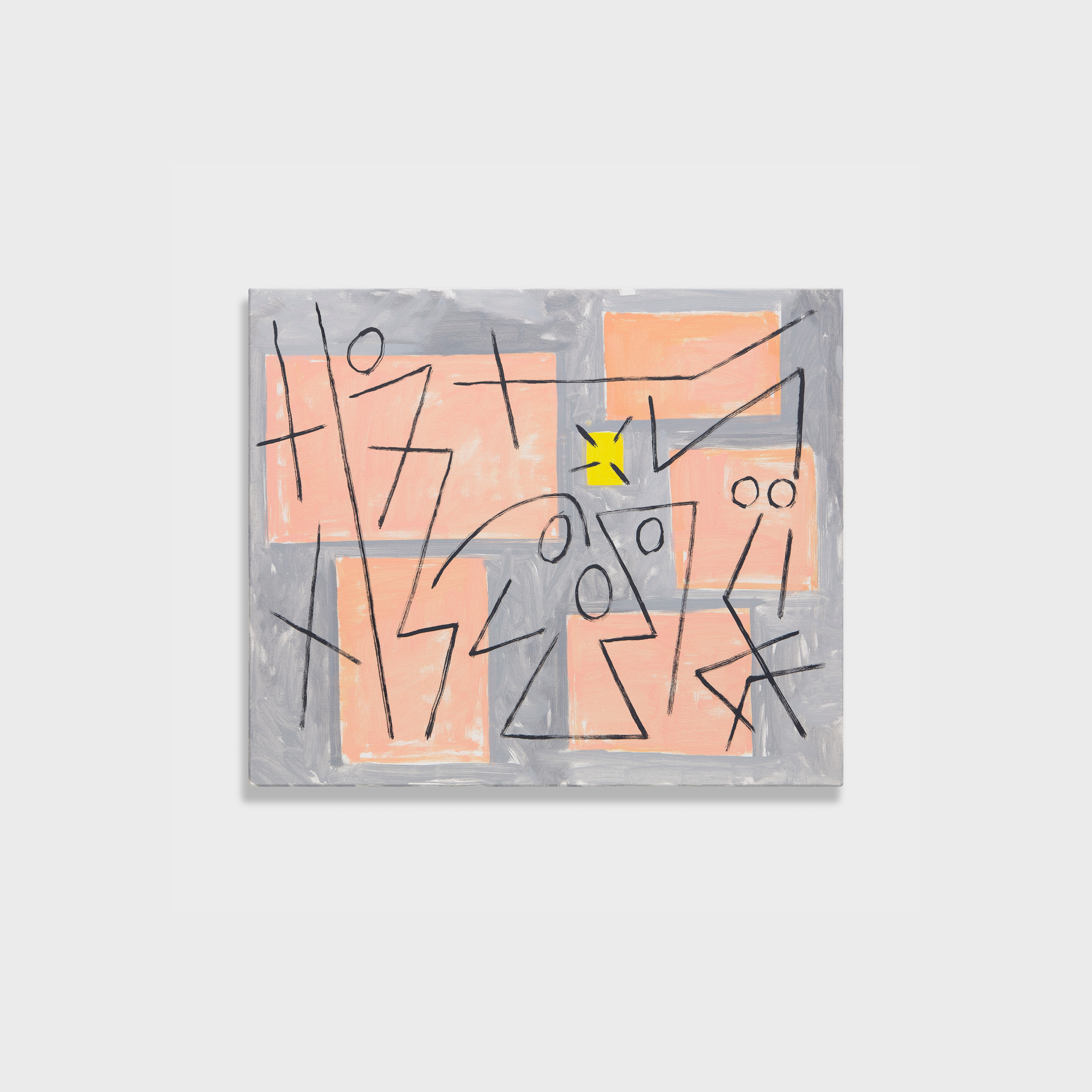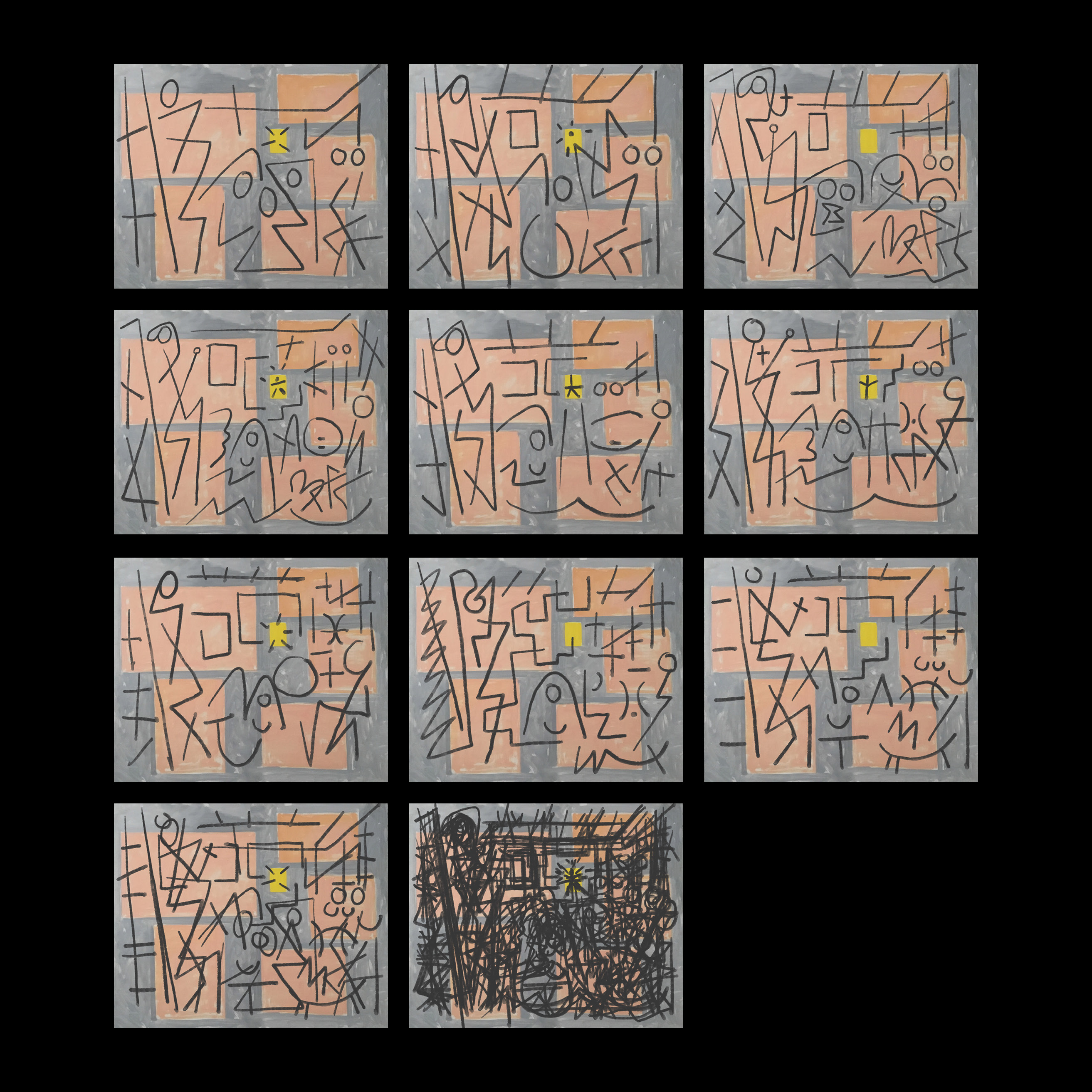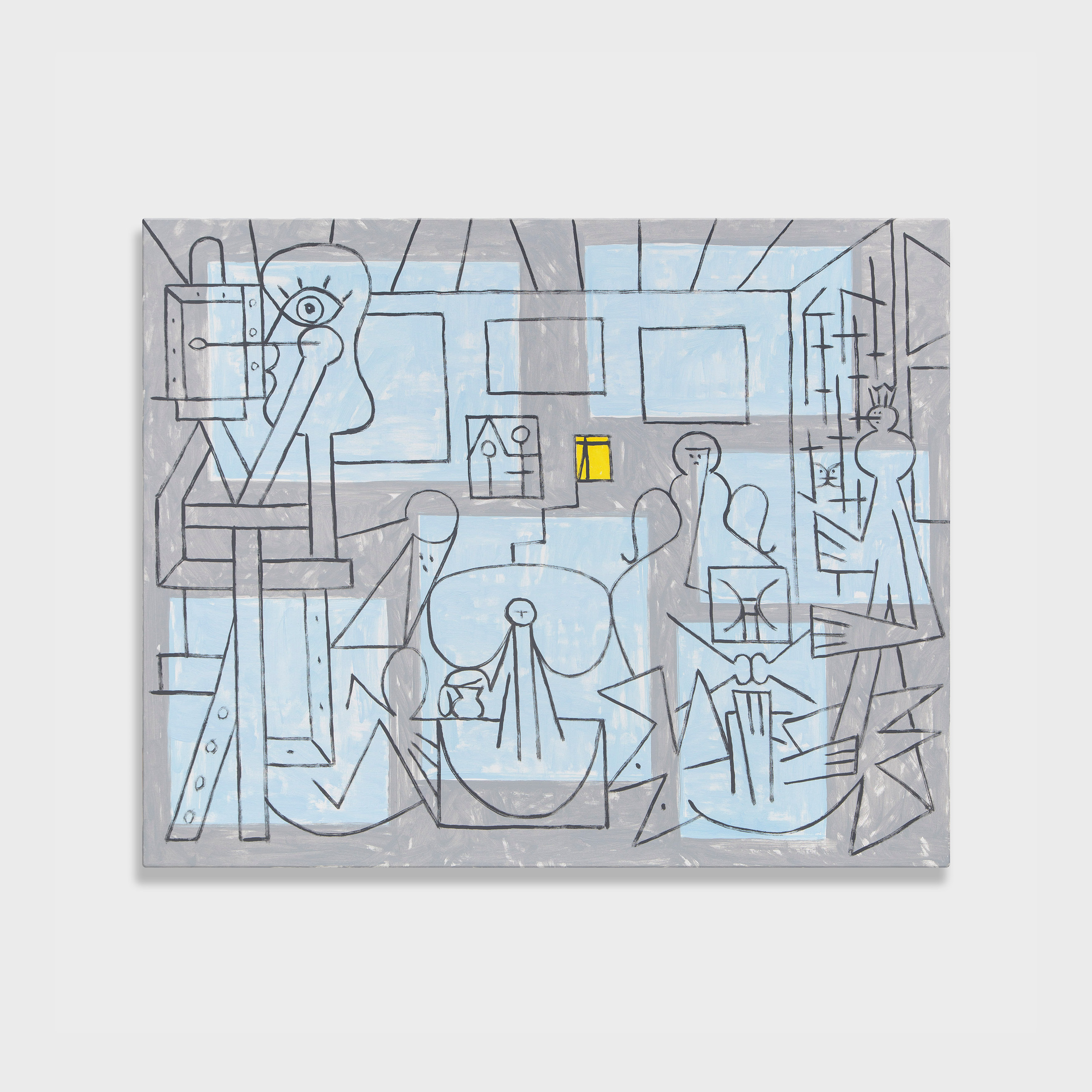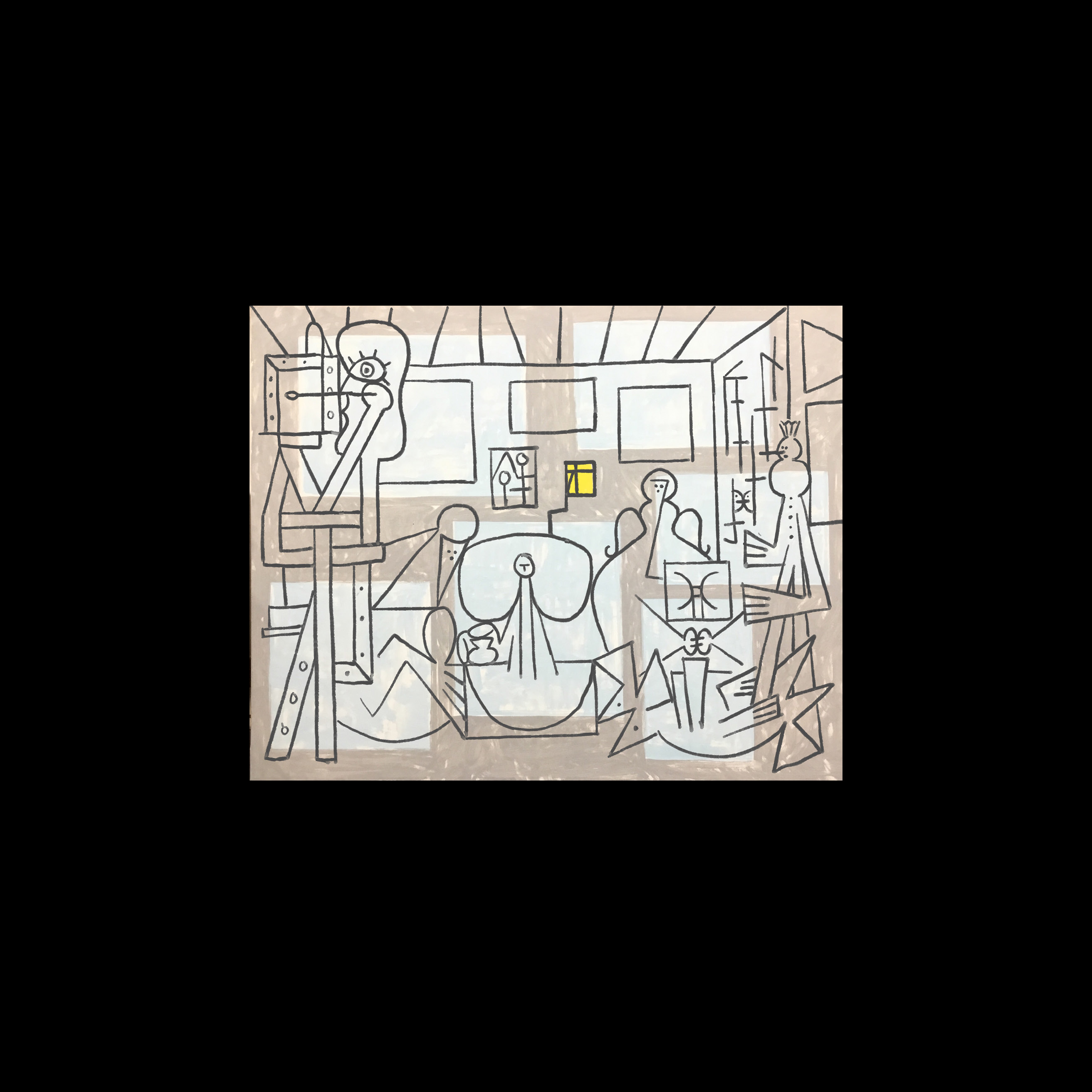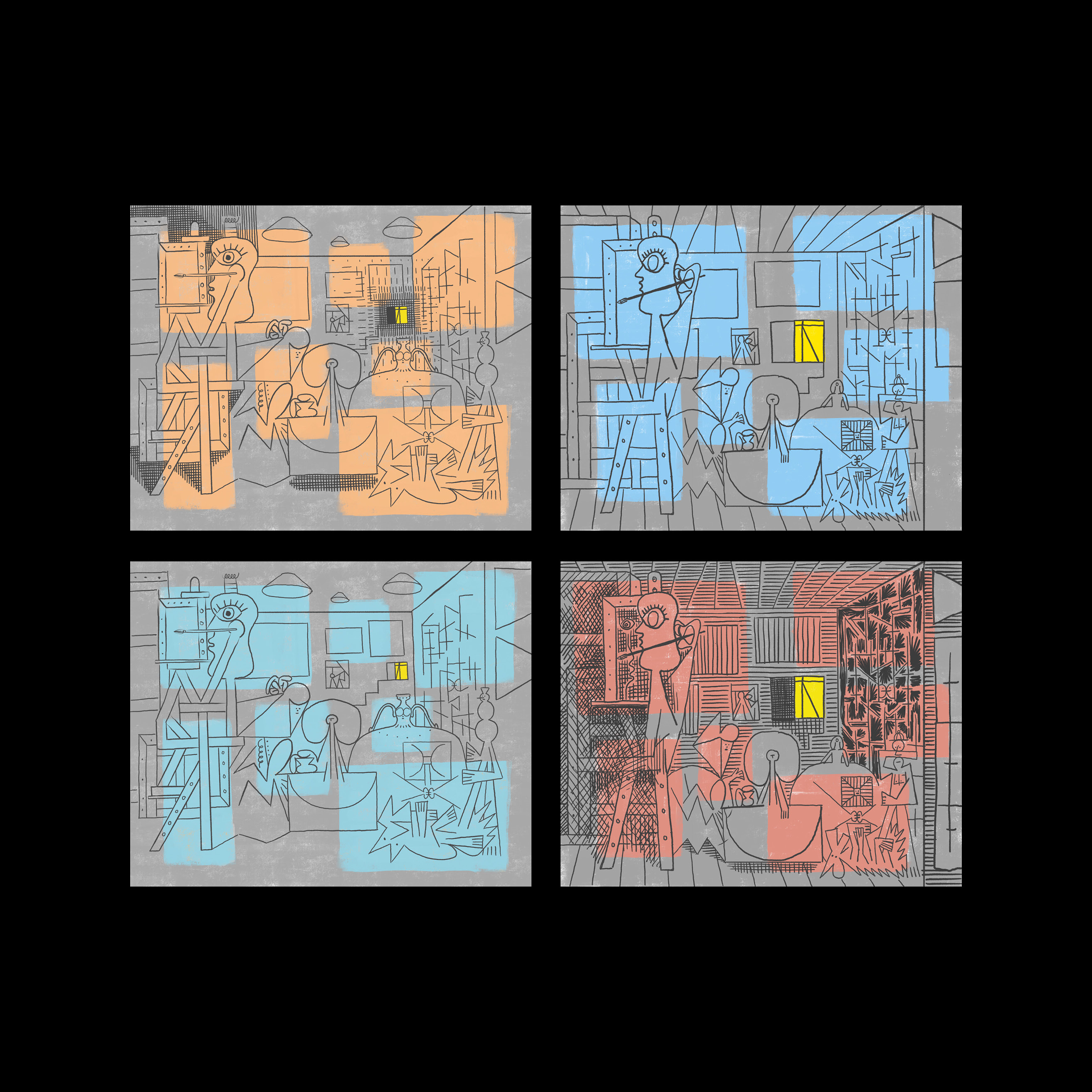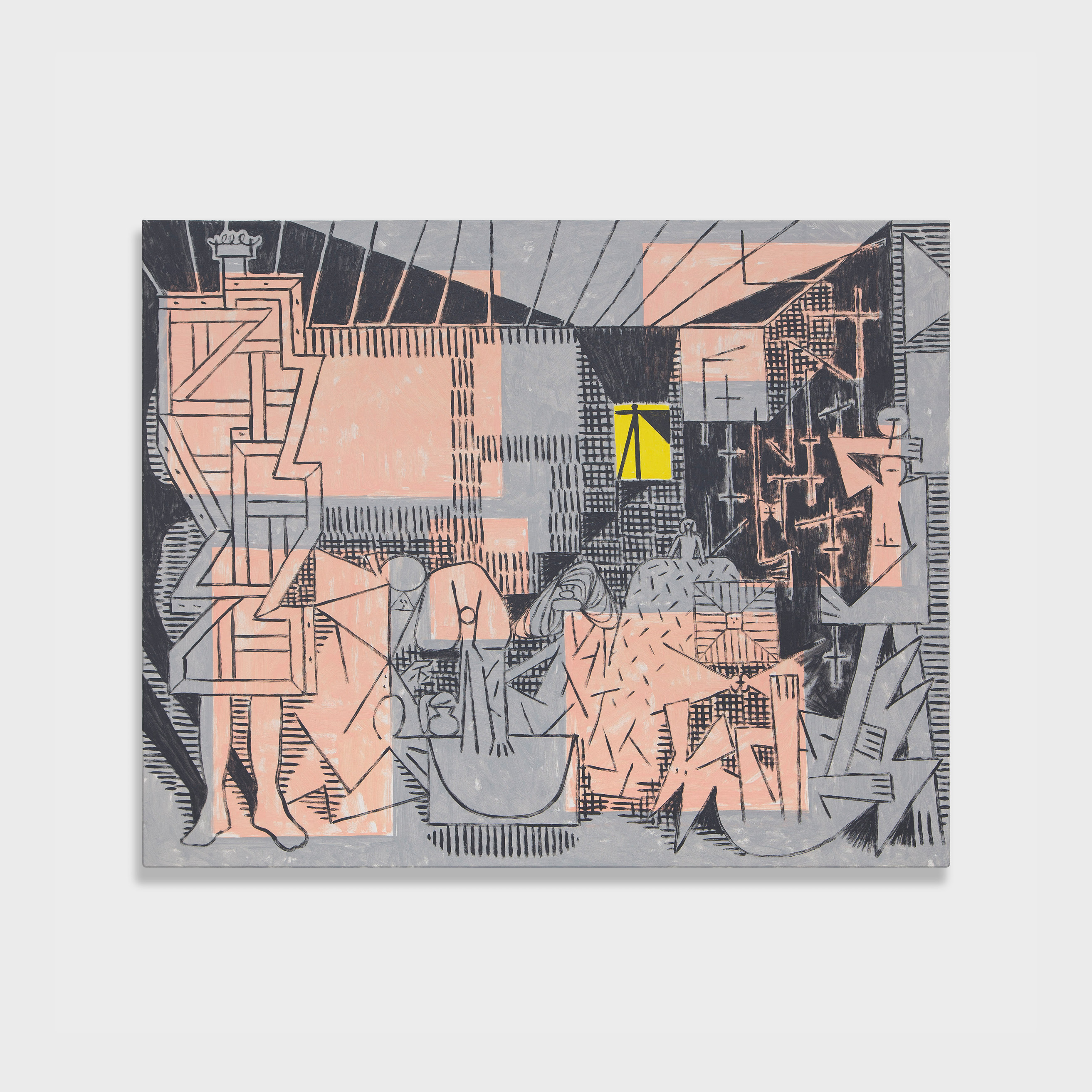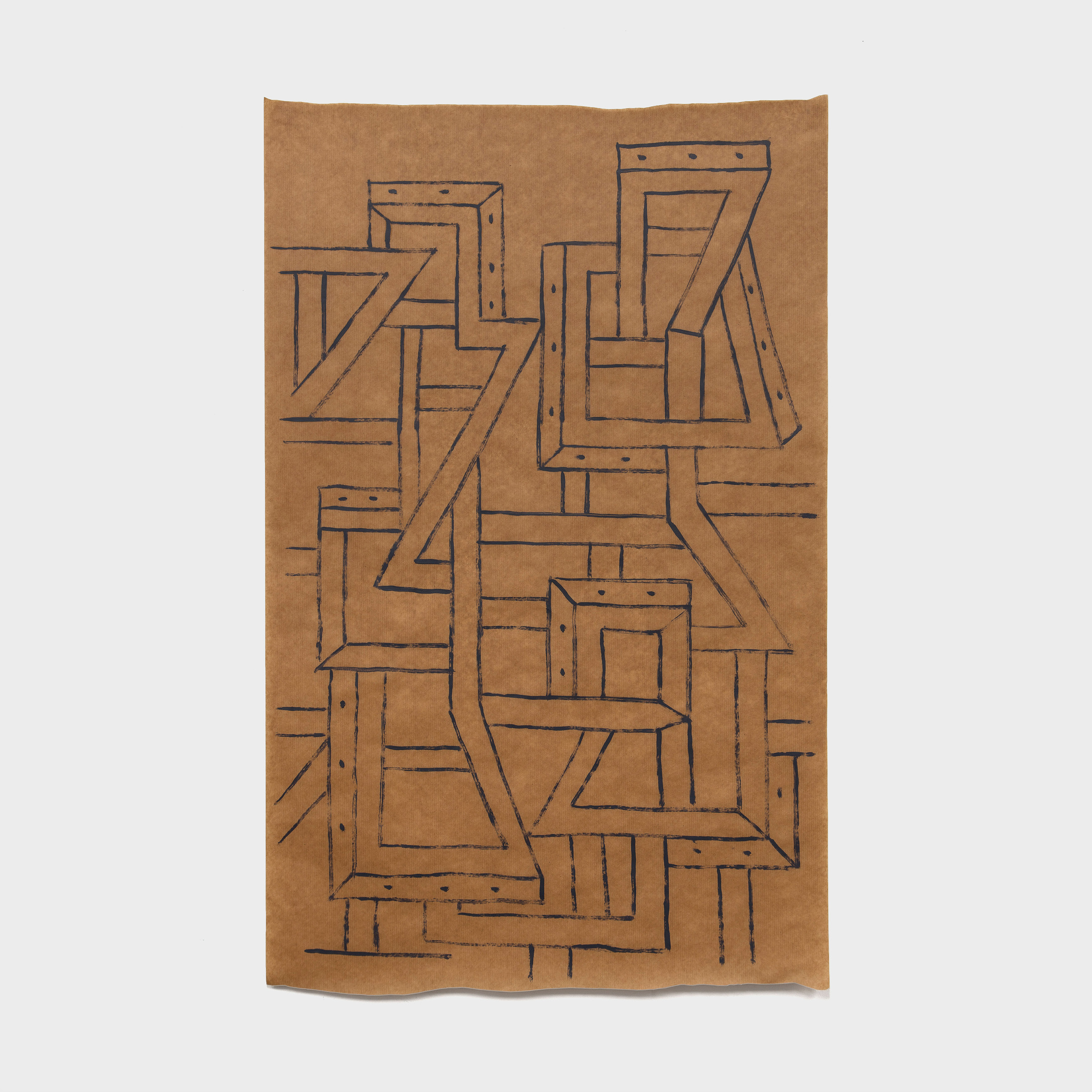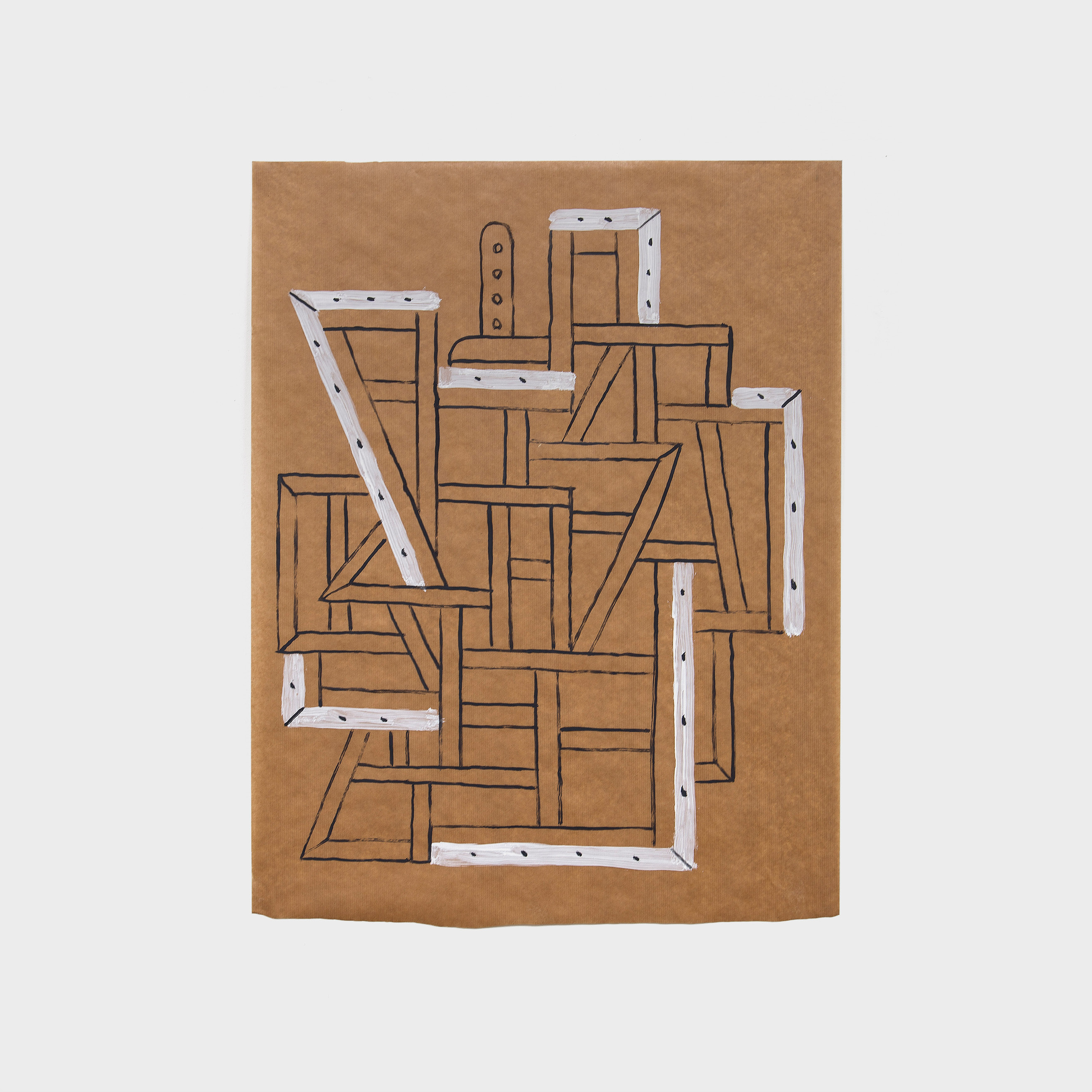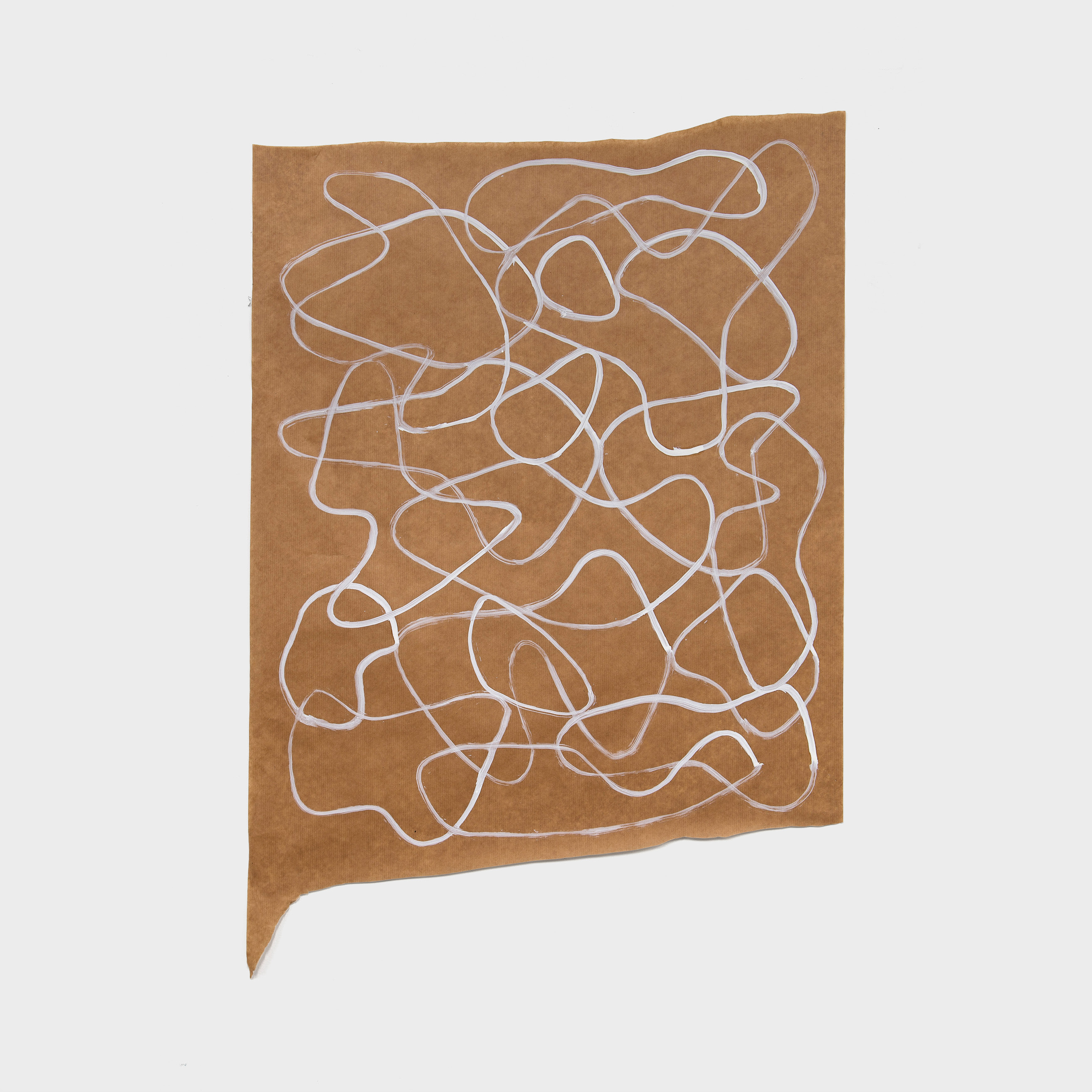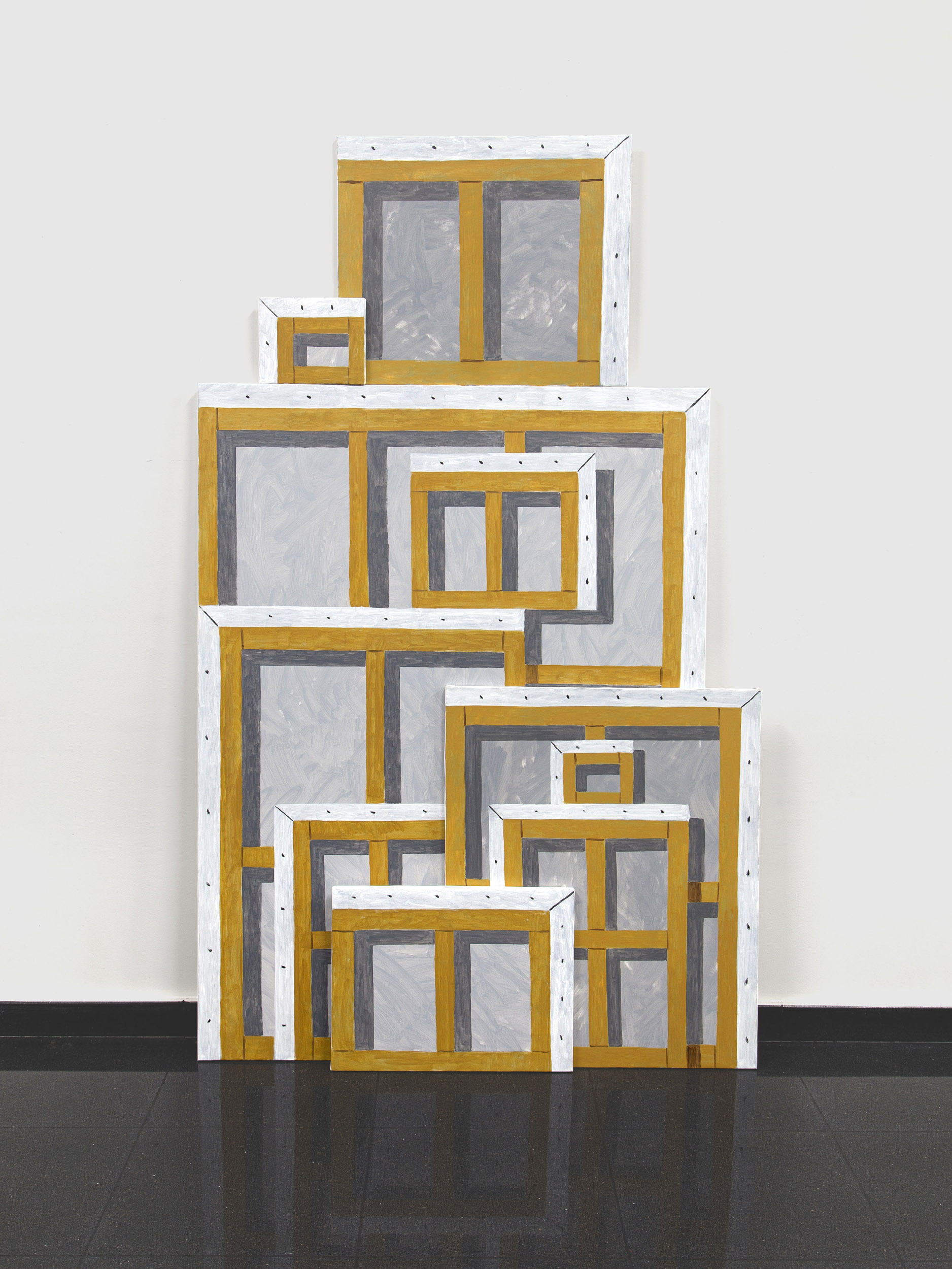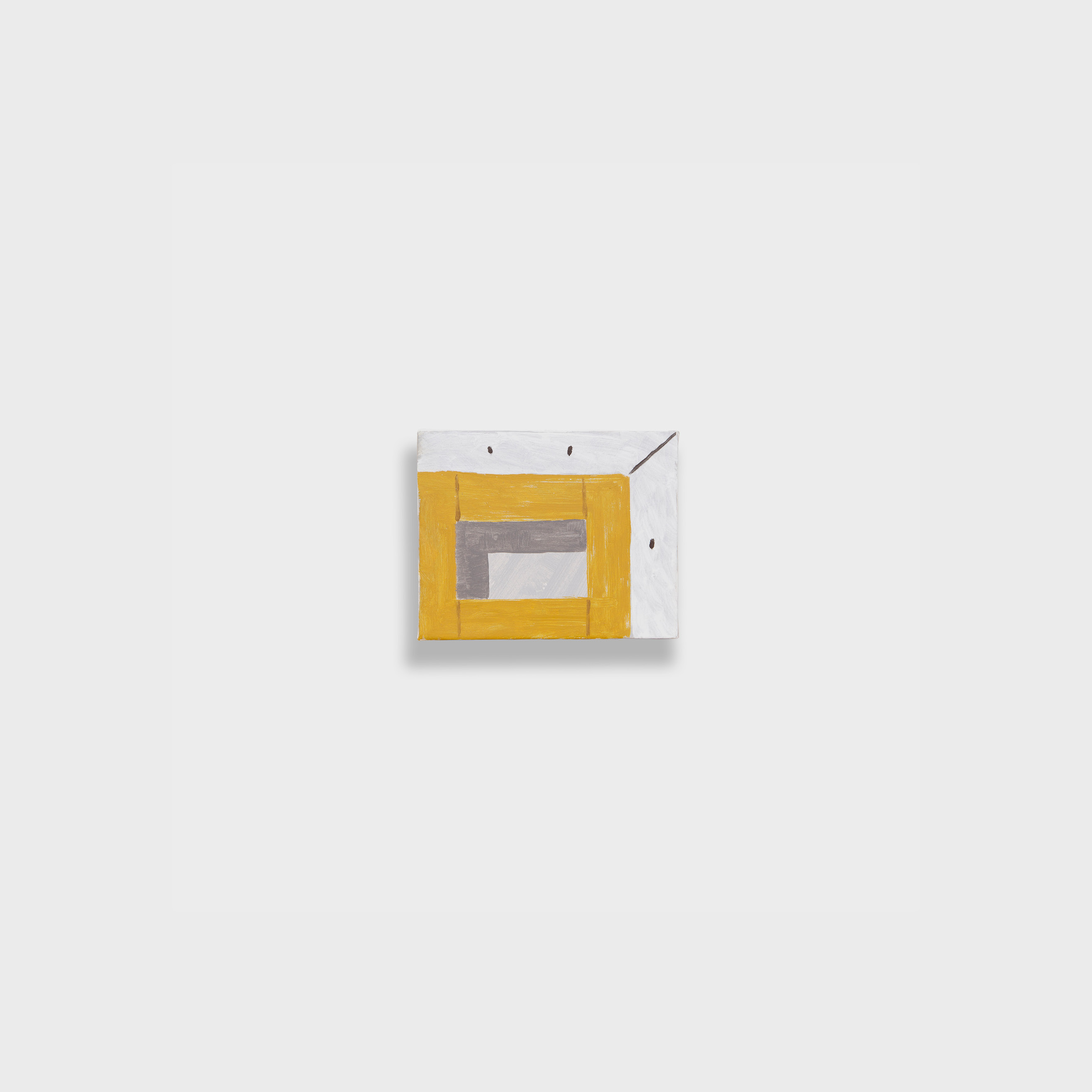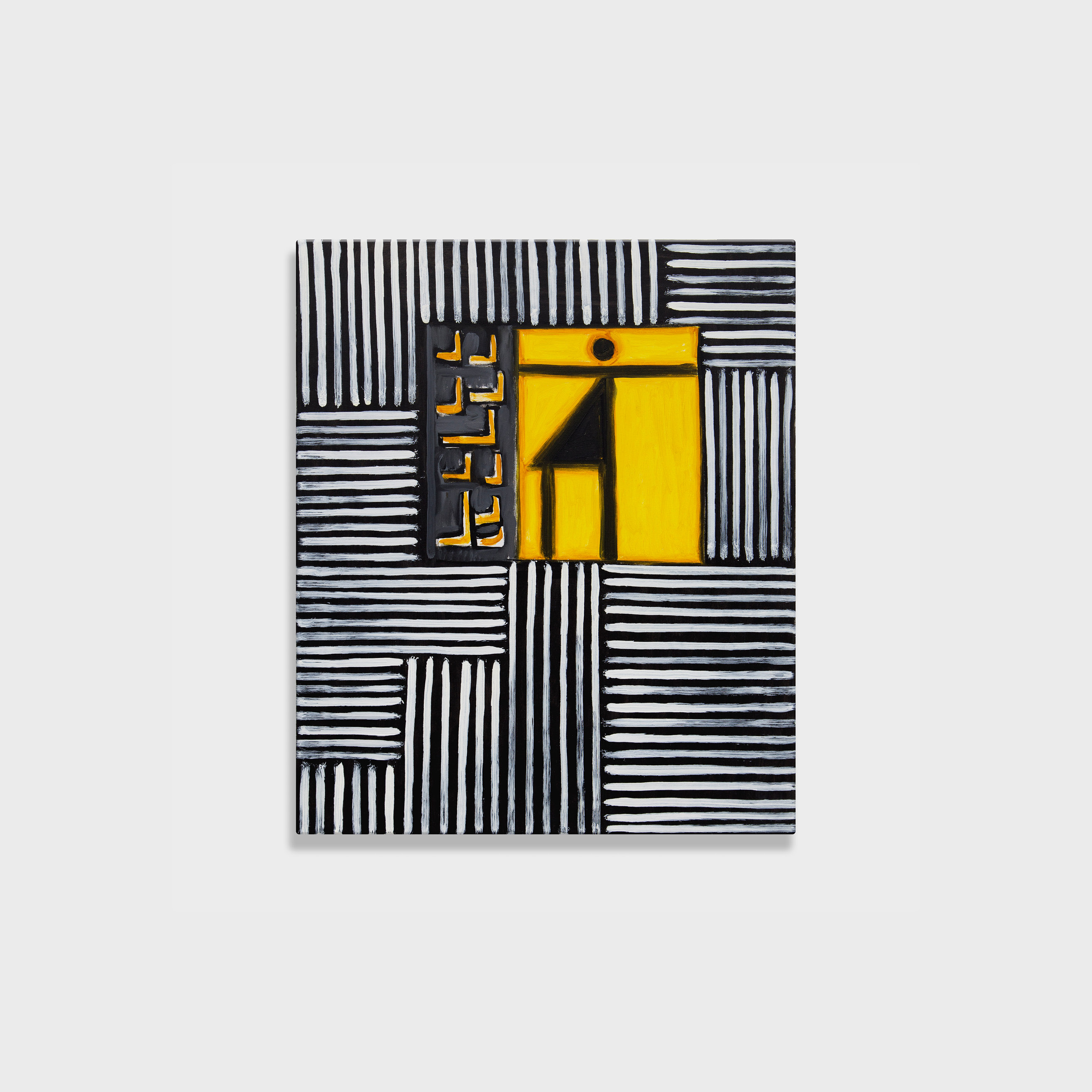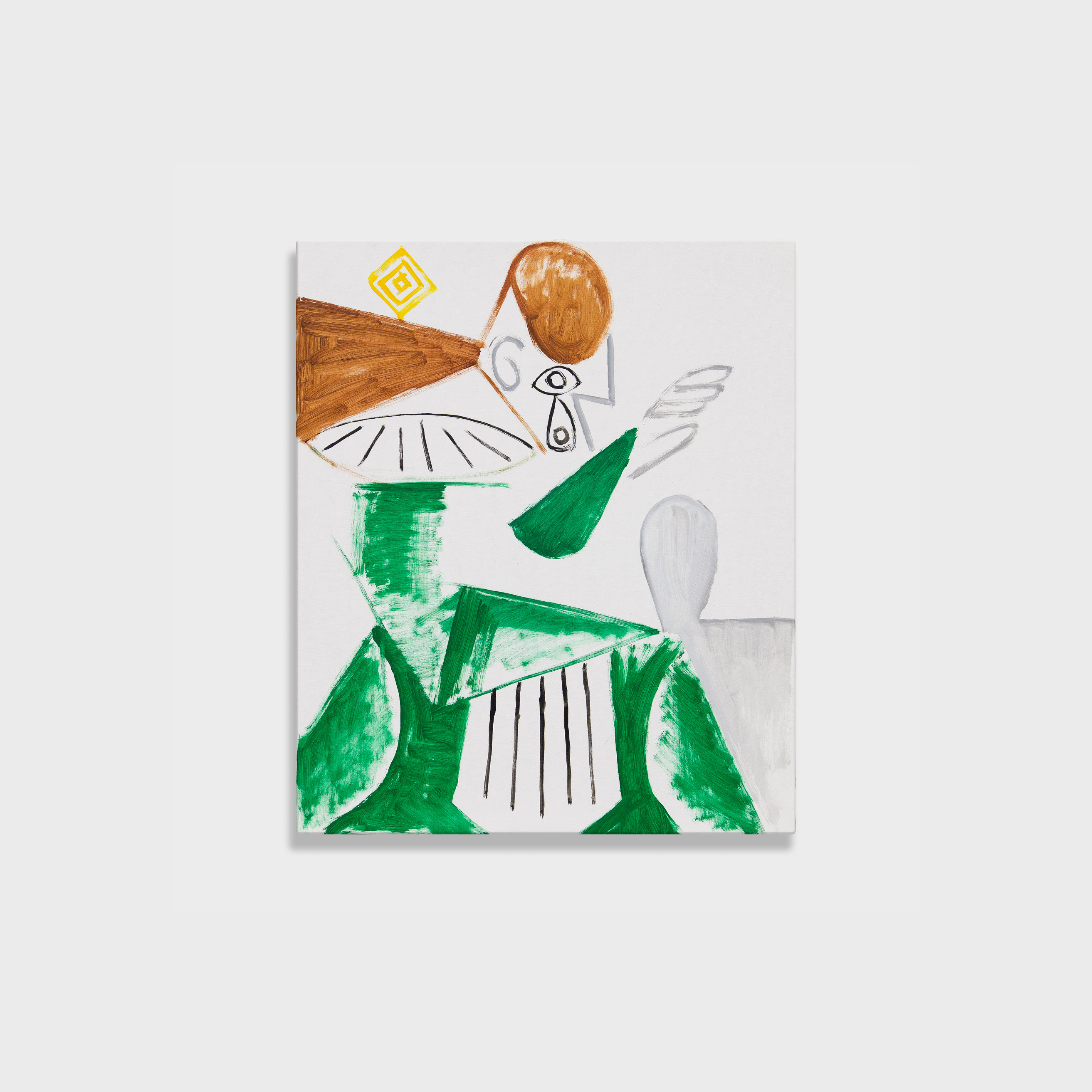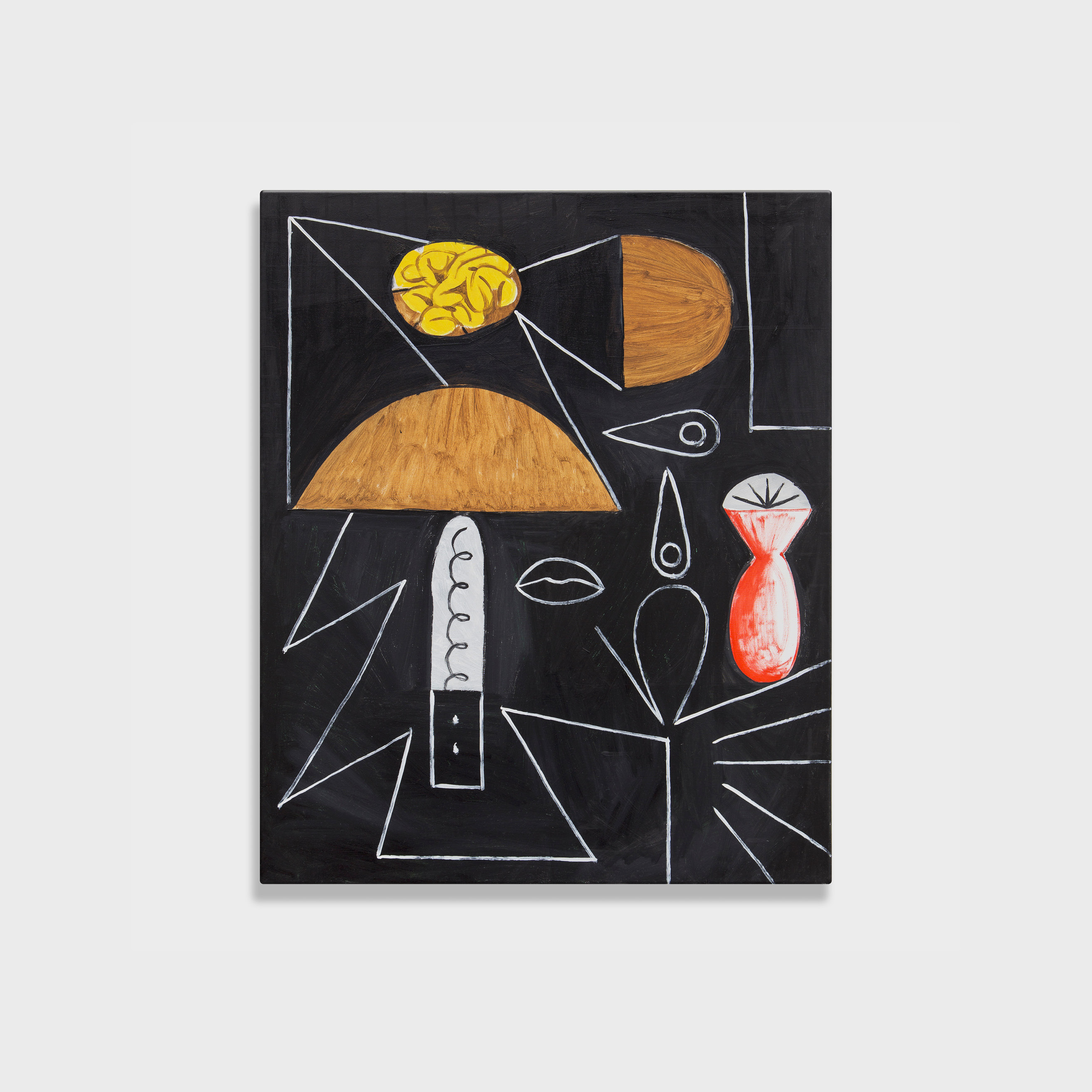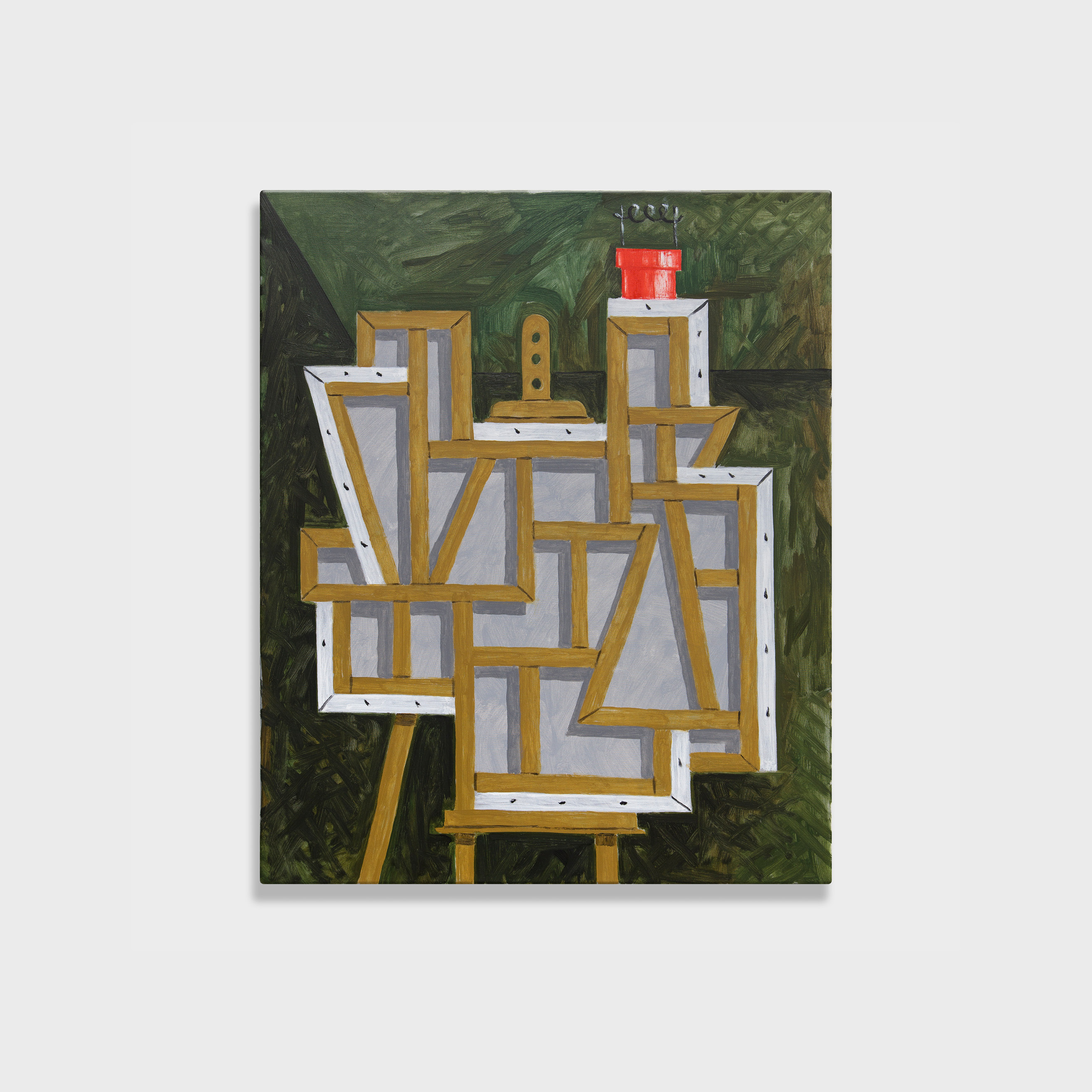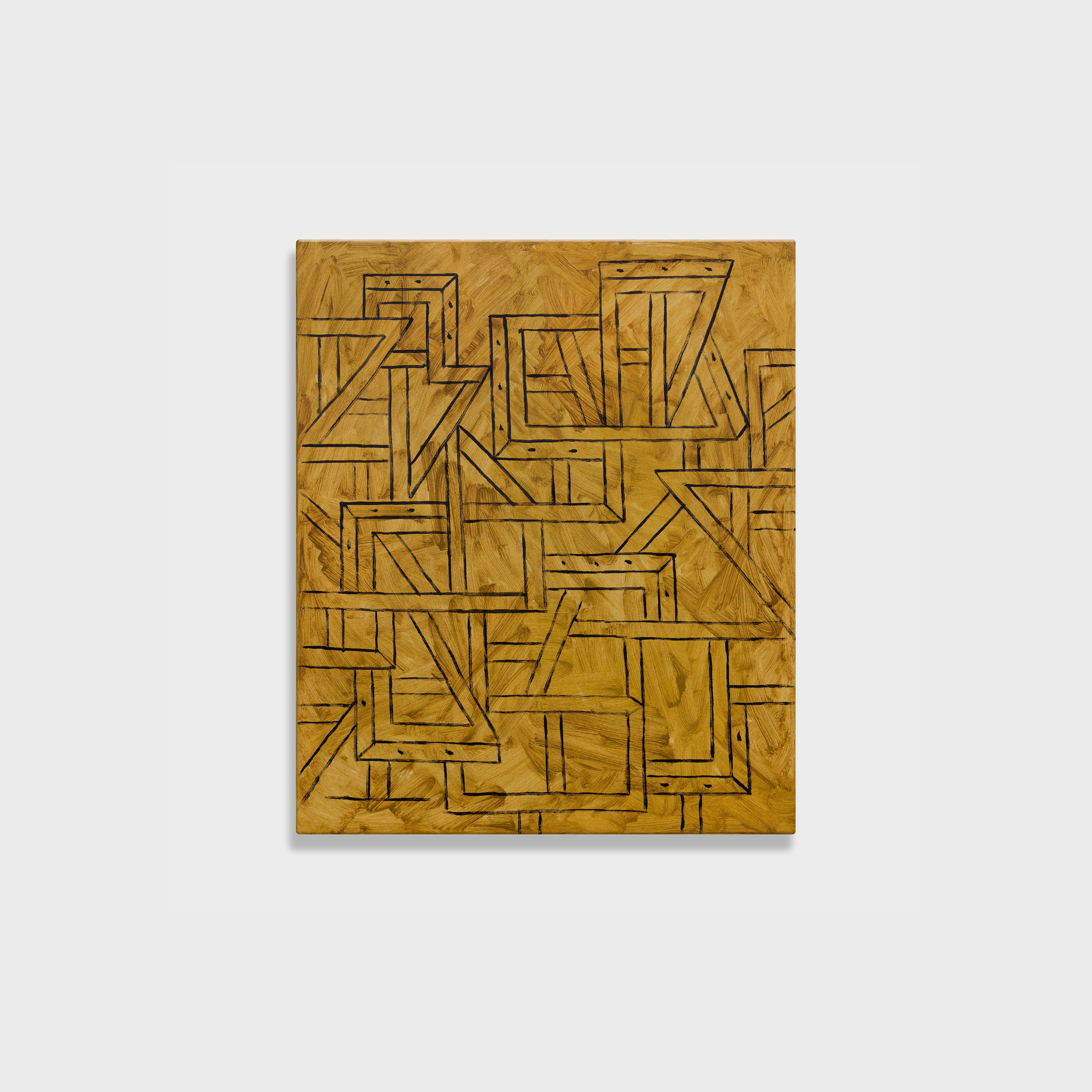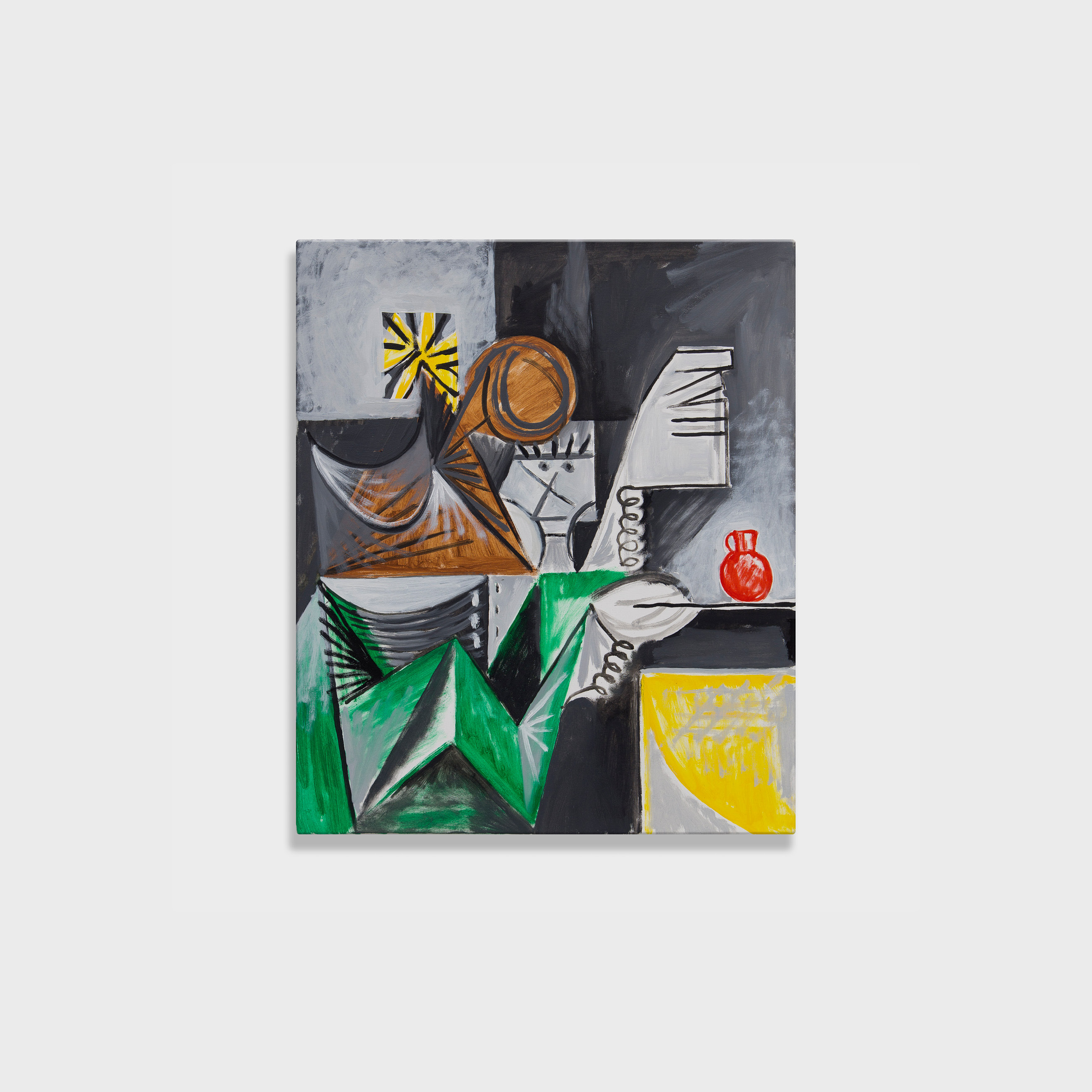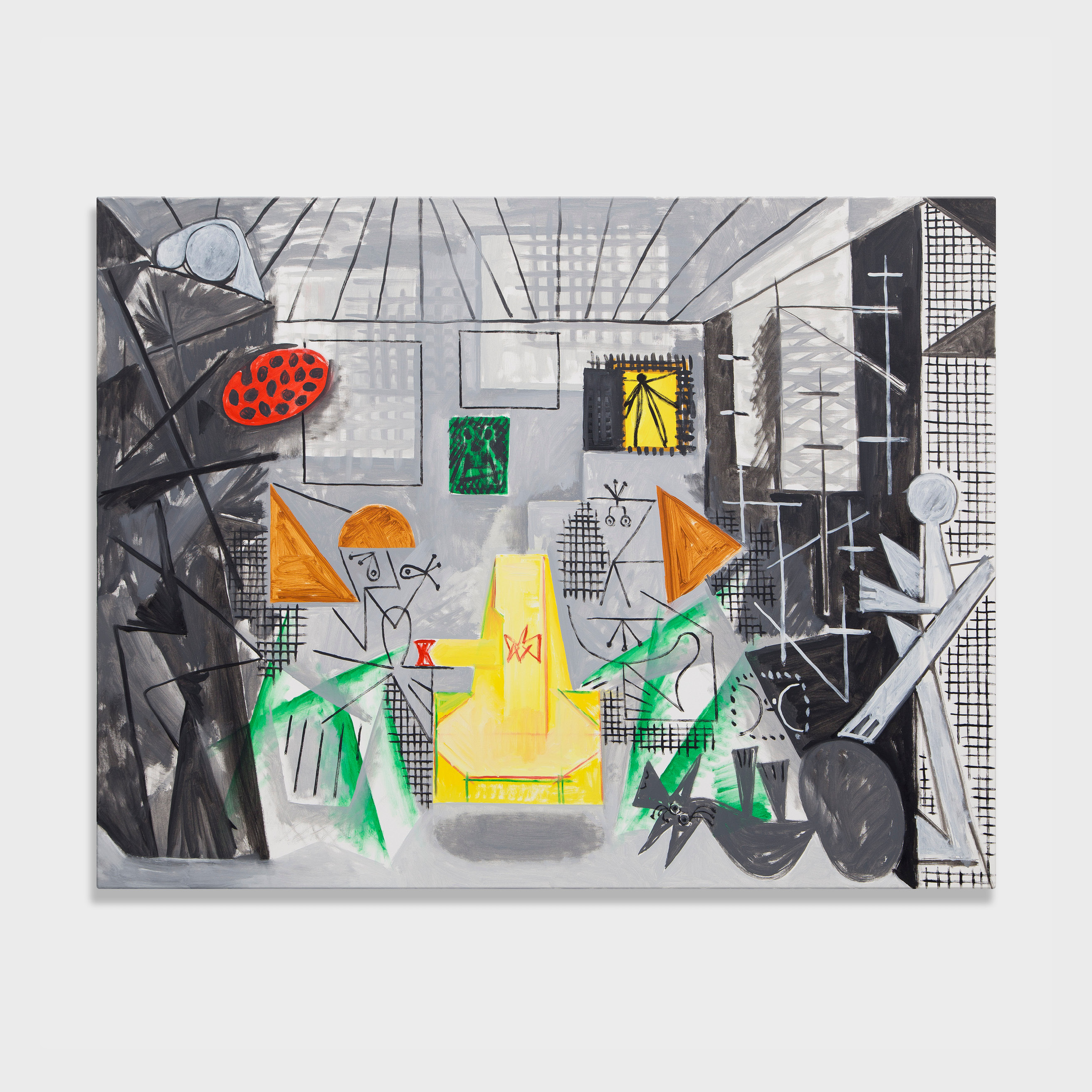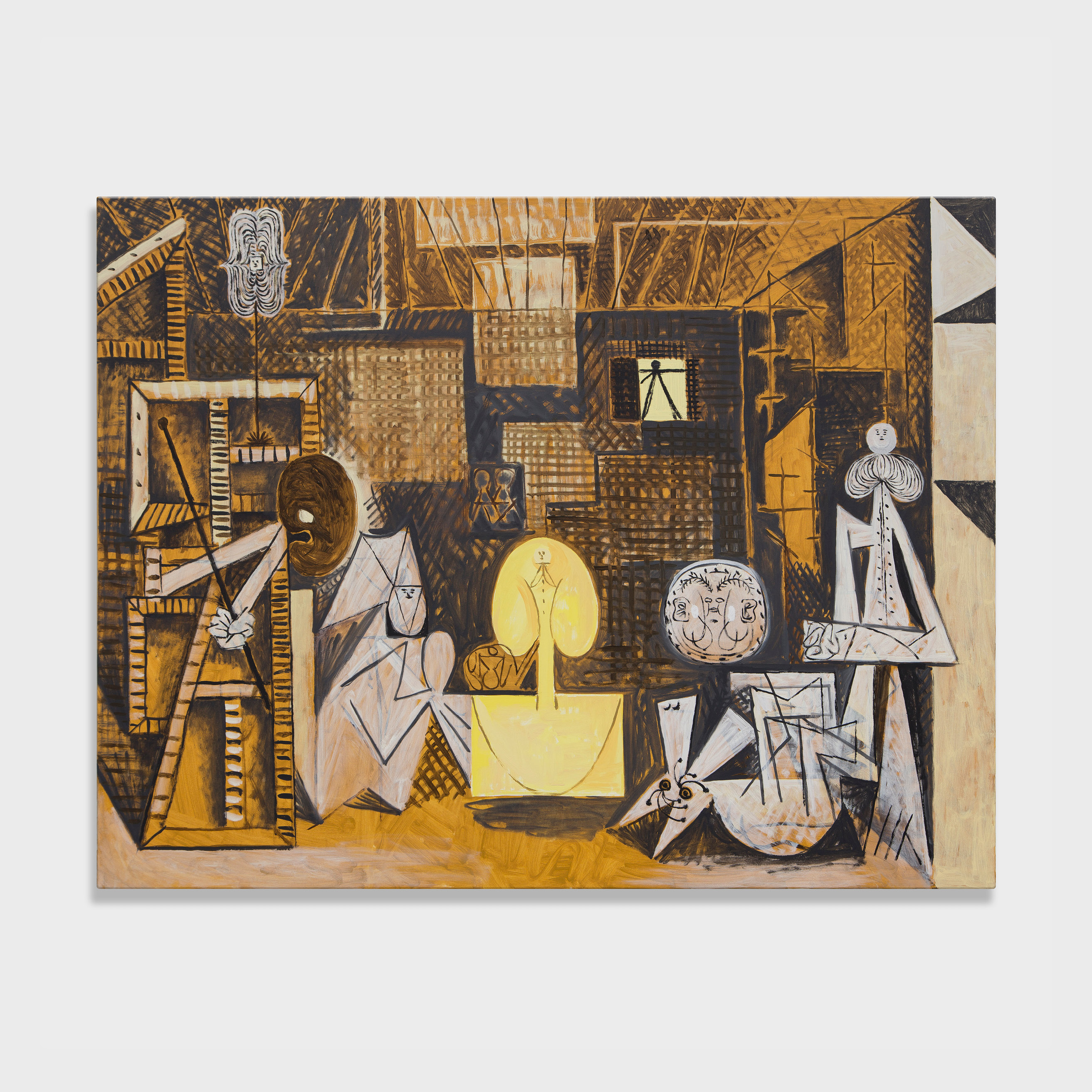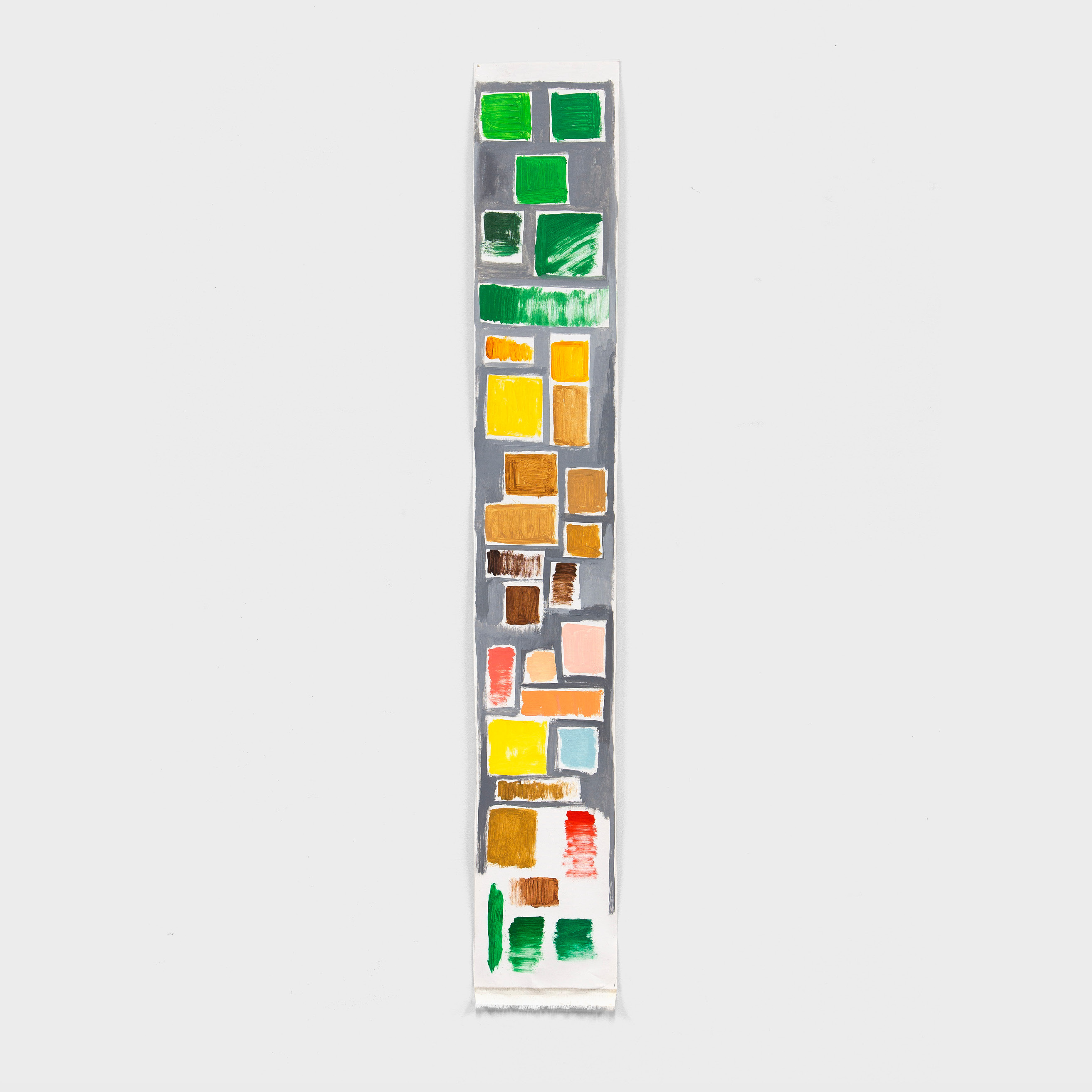Fugue: A Work
that Builds Itself
Fuga (Fugue) is a series of drawings and paintings about Velázquez’s Las Meninas, and Picasso’s study of them. In this series, unlike previous ones, I deliberately move away from more erudite references to study a work well known by all.
A Baroque fugue is a musical piece composed by using repetitions and variations of a single motif. When a painter quotes another, he too creates a new variation. In that reverberation, a new interpretation that includes both is created. Thus, this work reveals the structure of a matryoshka which contains different moments, some of them encapsulated within the others, building up towards a counterpoint that binds them together.
A fugue is also an inner escape. In the film Inception, the characters are carried into a self-constructed dream, and once there, they immerse themselves into another dream. Every time that one of them goes into the next dream layer, the realities left behind slow down their times. I would like to think that something similar happens on this work. In 1656 Velázquez was looking trough a mirror to achieve his portrait. Sixty years ago Picasso was in the same room, and later after him, hundreds of artists have immerse themselves within the same motif. Among them I also have seen myself immersed and I have been able to enjoy a slower time. To work in those conditions is to create a space in which time doesn’t seem to be wasted, but on the contrary, produced.
(ESP) Fuga es una serie de dibujos y pinturas sobre Las meninas de Velázquez y más concretamente sobre el estudio que Picasso hizo de ellas. En esta serie, a diferencia de las anteriores, me alejo deliberadamente de citas más eruditas para estudiar una obra bien conocida por todos.
La fuga barroca es una composición musical, en la que mediante la repetición y variación de un solo motivo se construye una obra completa. También cuando un pintor cita a otro, crea una nueva variación y en esa reverberación, se crea una lectura que las engloba. Así, en esta serie aparece una estructura de matrioska que contiene diferentes momentos, unos encapsulados dentro de otros, que pretenden crear un contrapunto que las una.
Una fuga también es una huida interior. En la película Origen los protagonistas se introducen en un sueño construido por ellos mismos y una vez allí vuelven a sumergirse en otro. Cada vez que uno se introduce en otra capa de sueño, las «realidades» que deja atrás se ralentizan. Me gustaría pensar que en esta serie ha ocurrido algo parecido. En 1656 Velázquez miraba un espejo para conseguir su retrato. Hace sesenta años Picasso estuvo en la misma habitación y después de él cientos de artistas se han sumergido en el mismo motivo. Entre ellos yo también me he visto sumergido y he podido disfrutar de un tiempo ralentizado. Trabajar en esas condiciones es crear un espacio en el cual parece que el tiempo no se pierde, si no al revés, que se gana.

